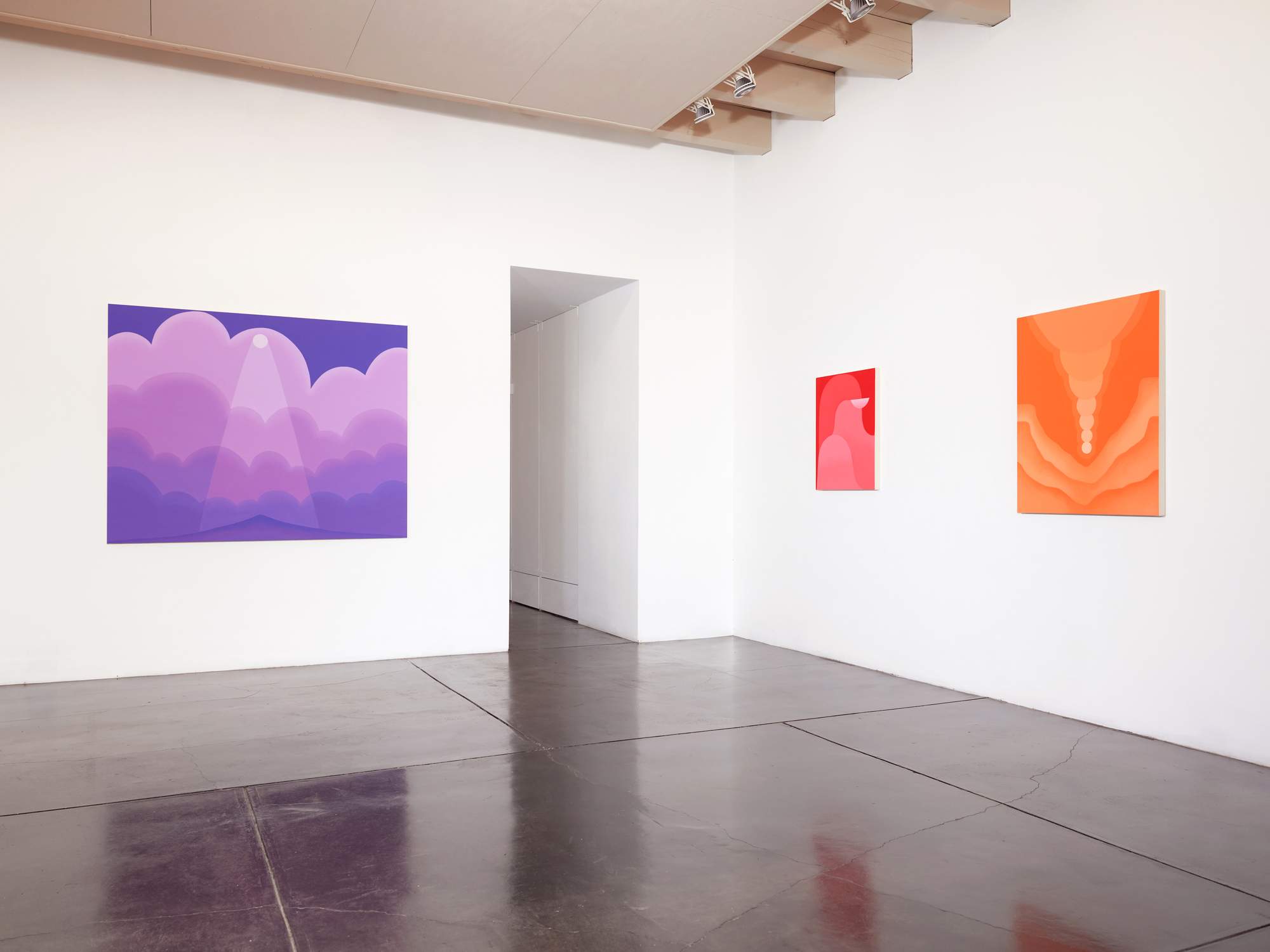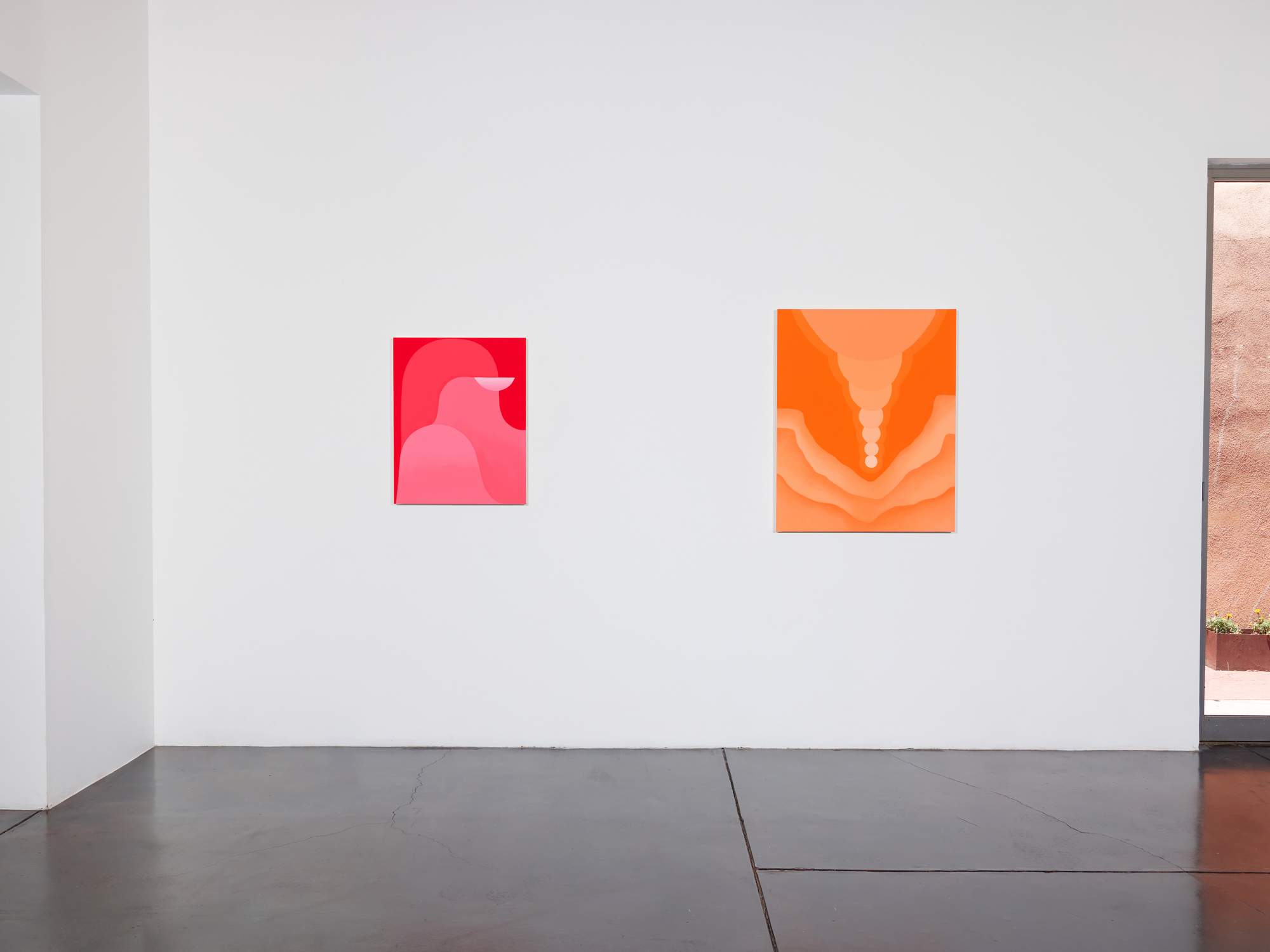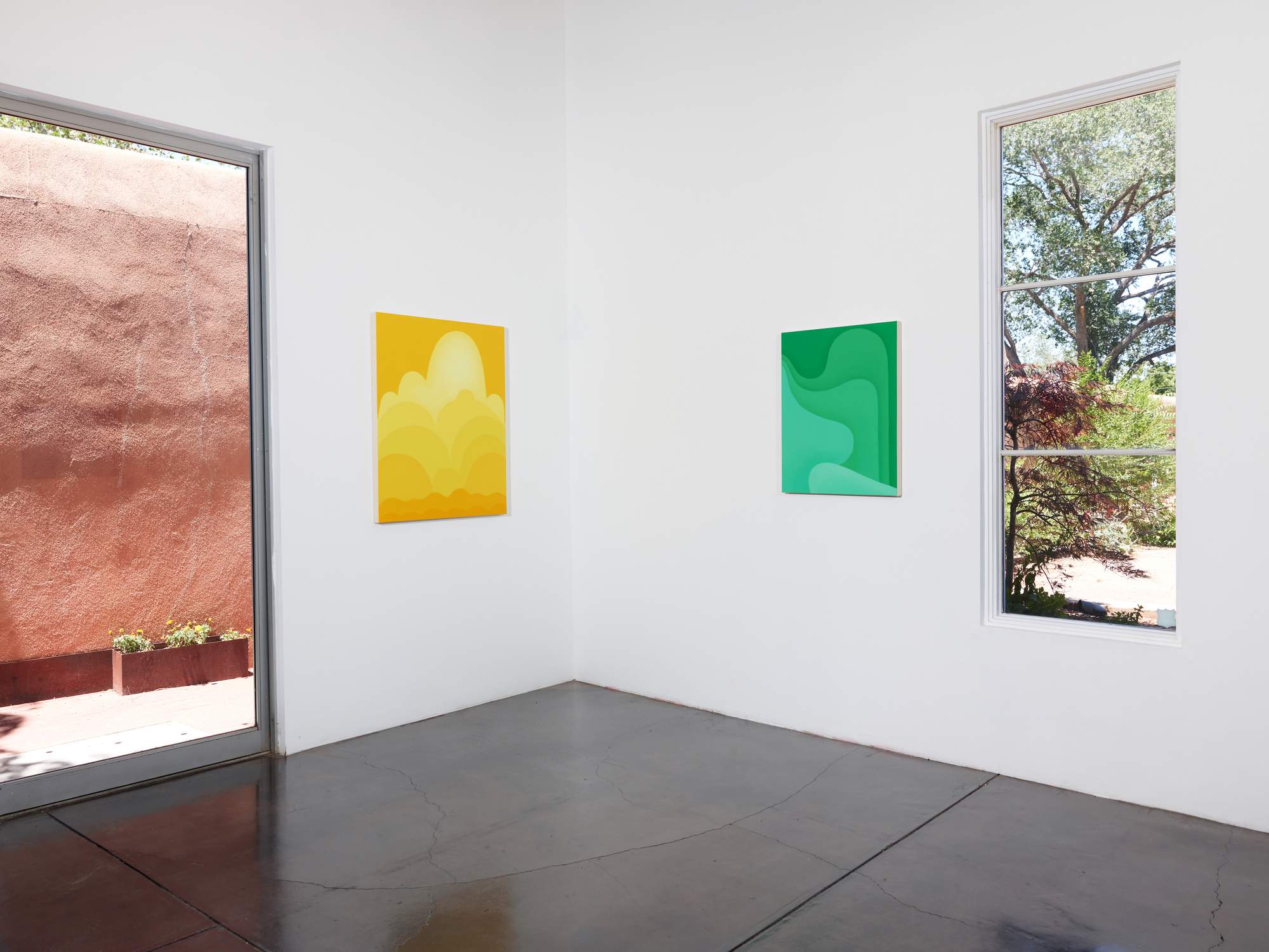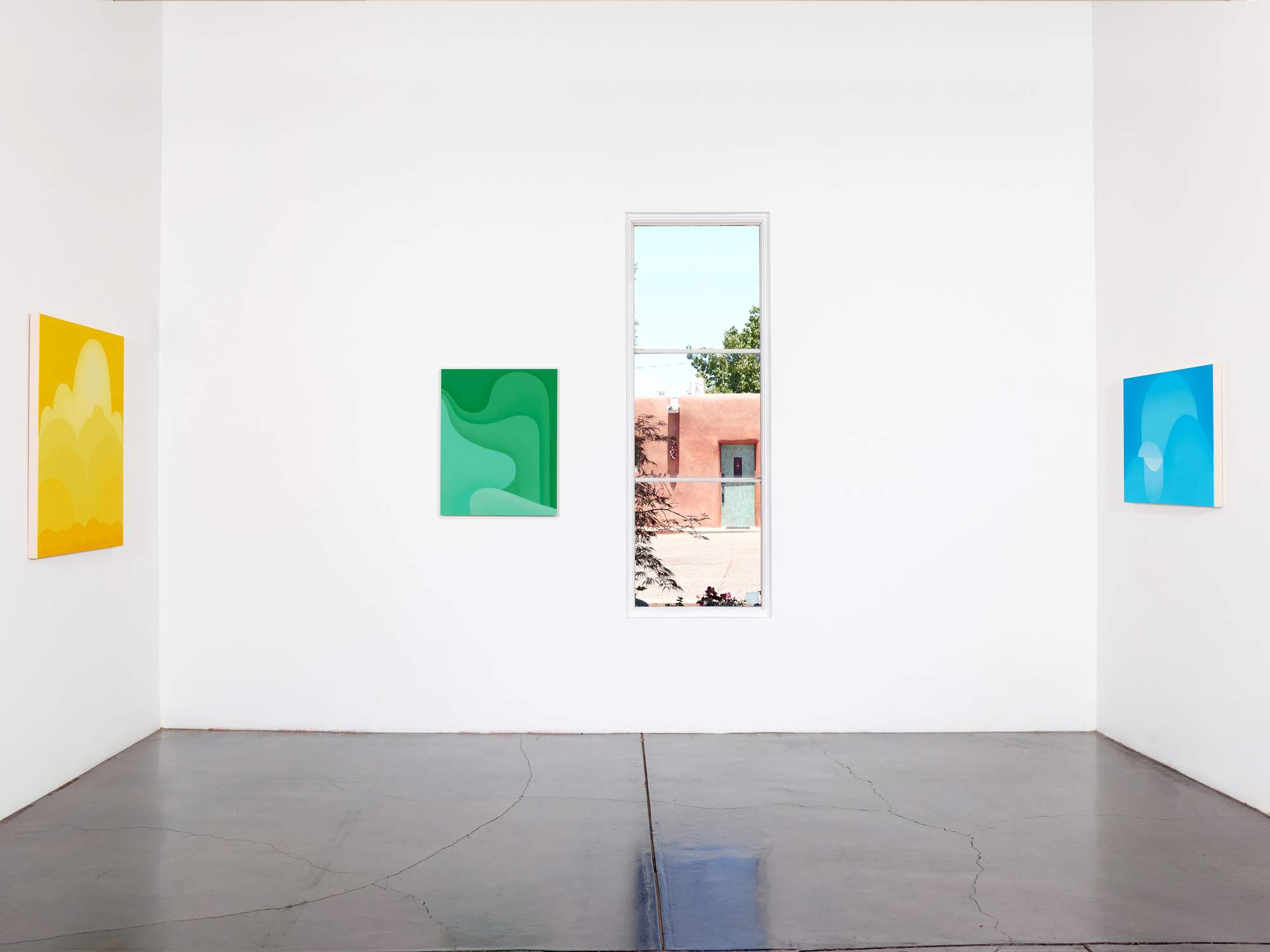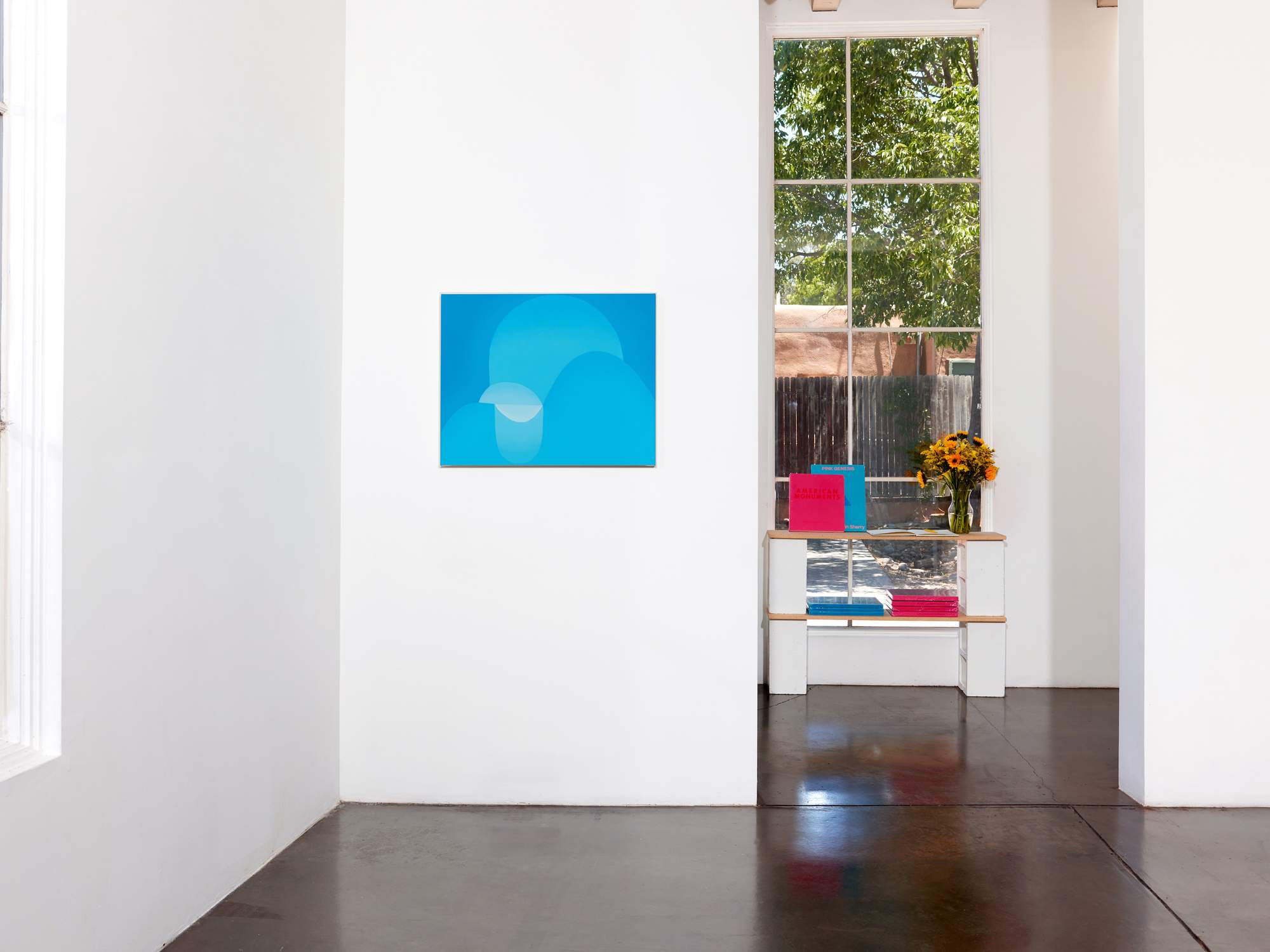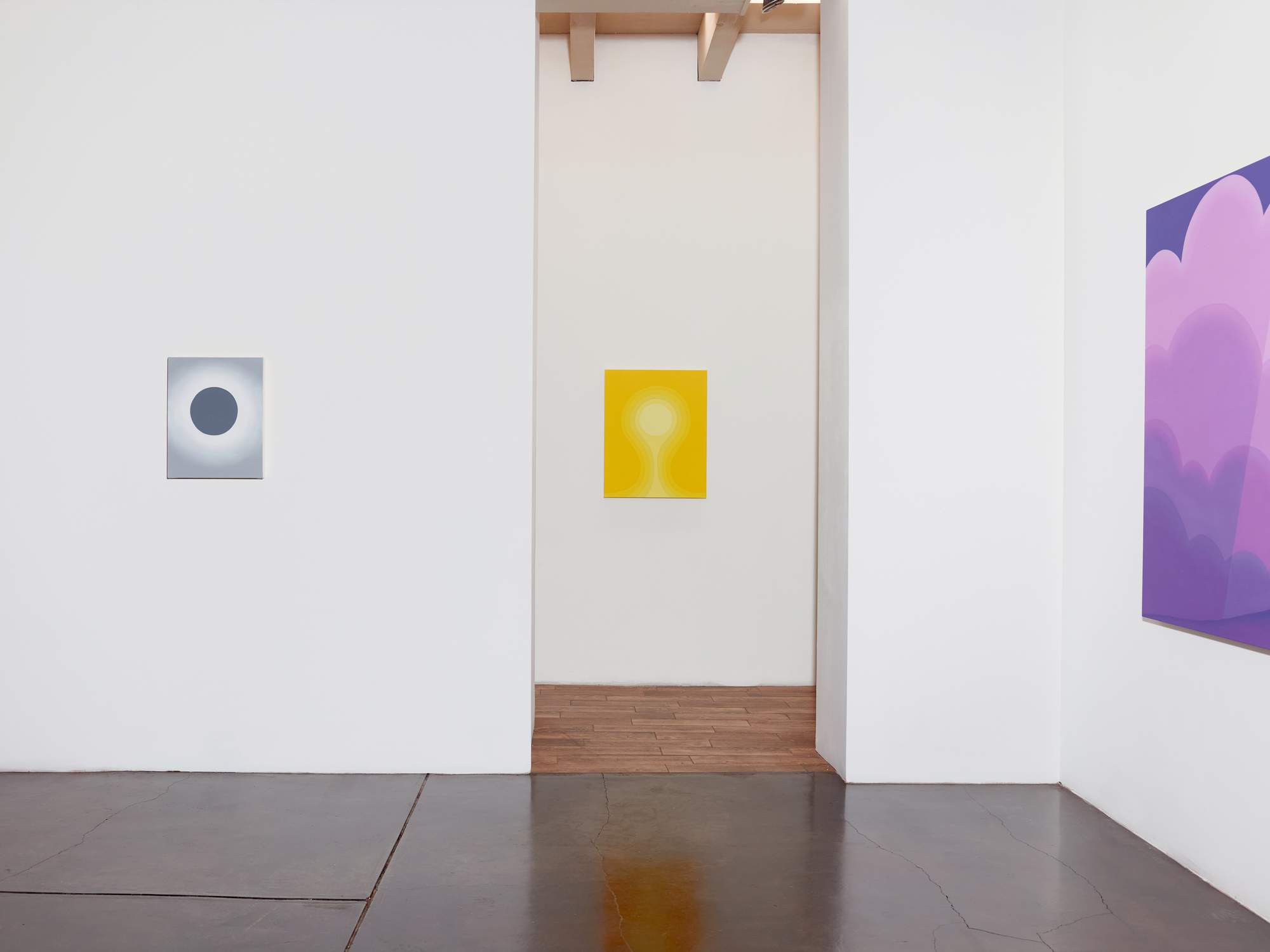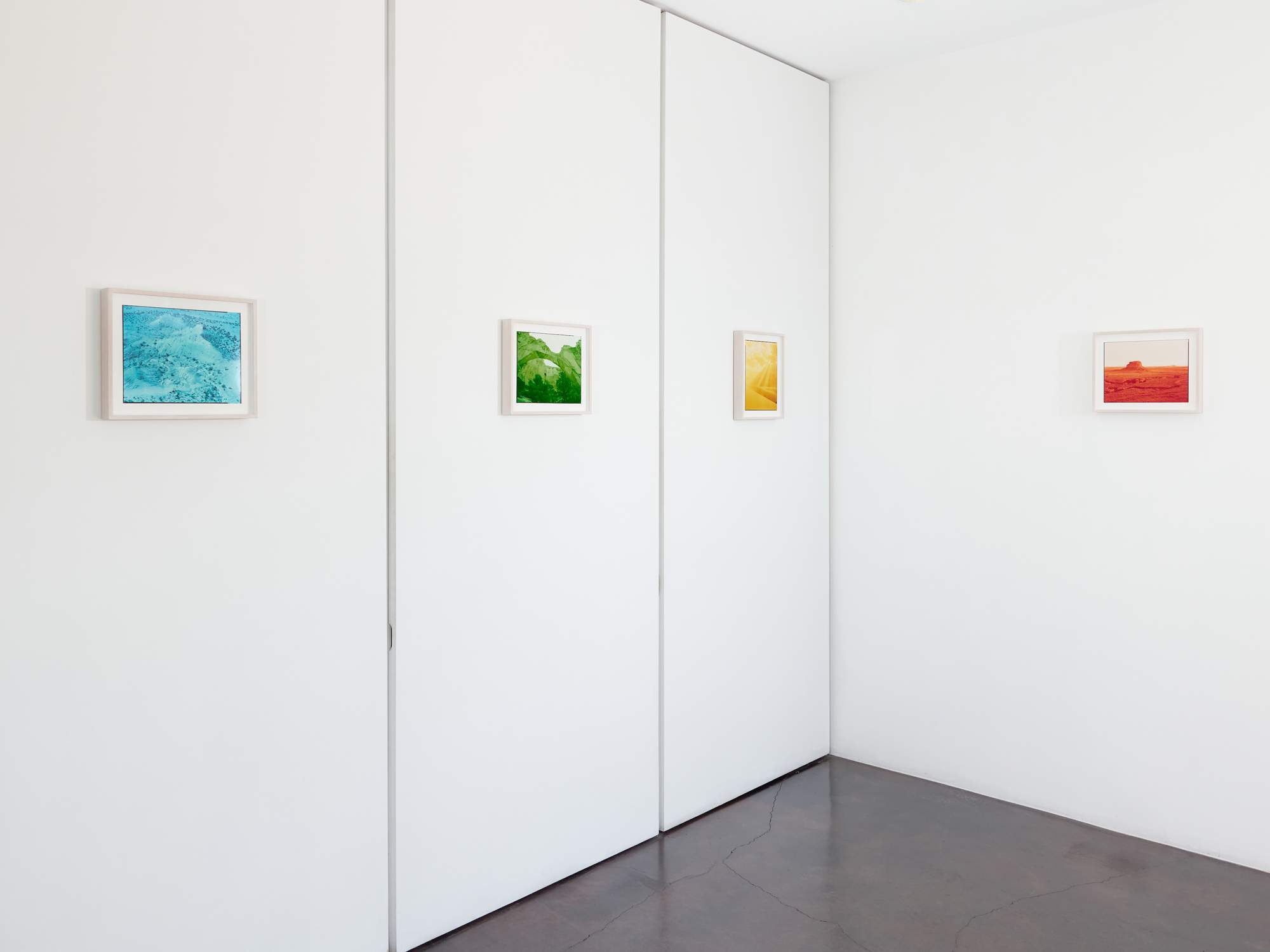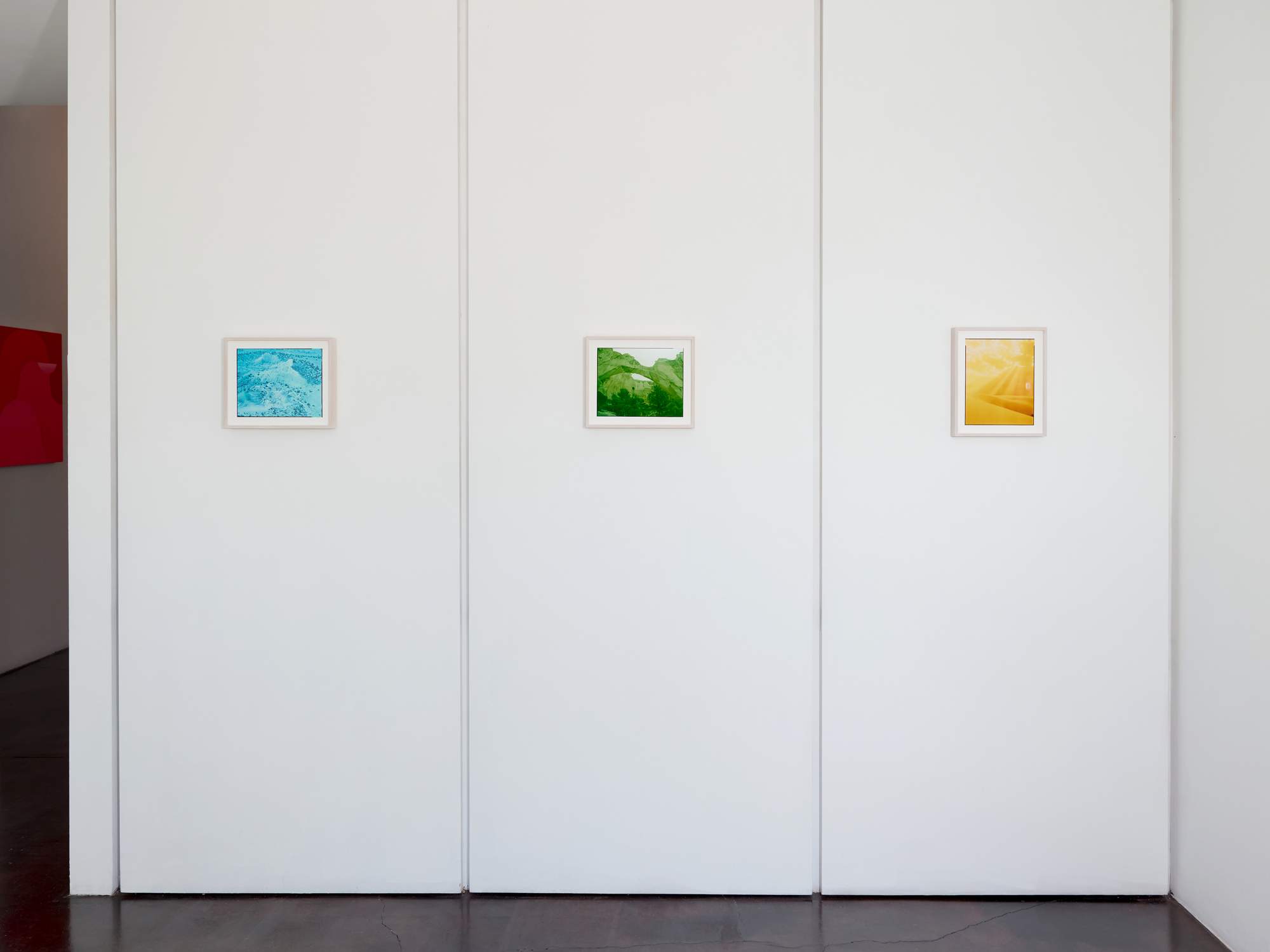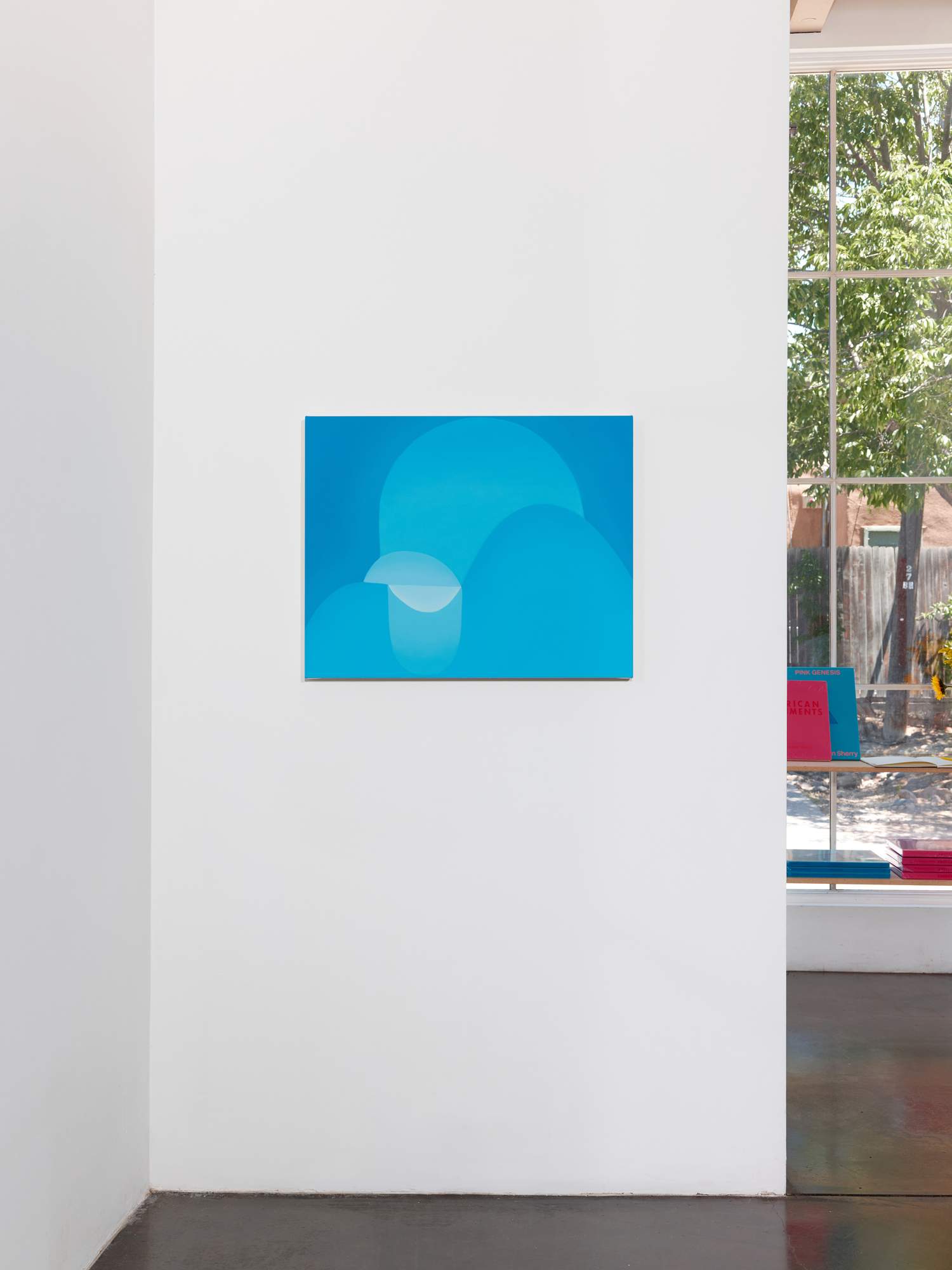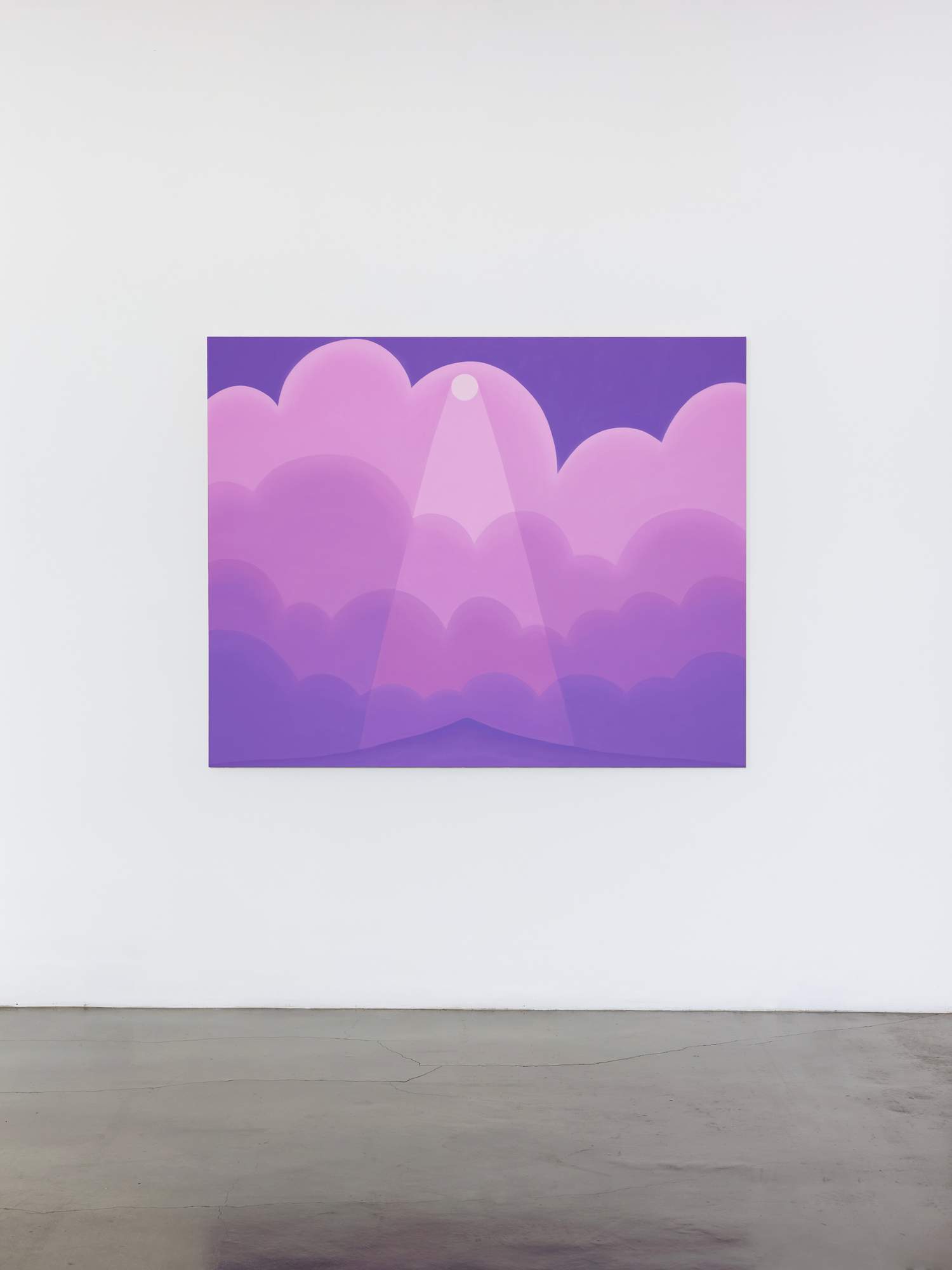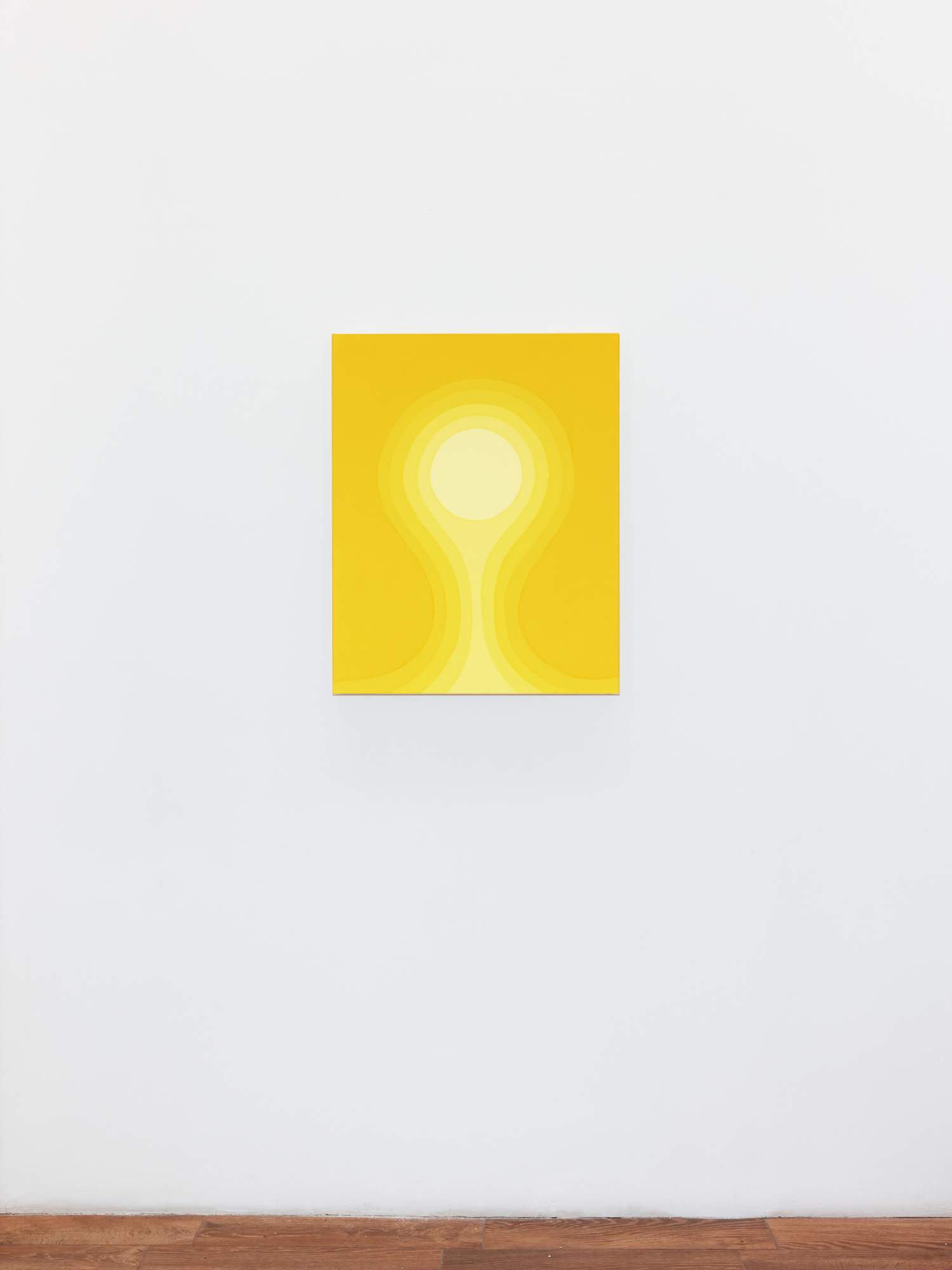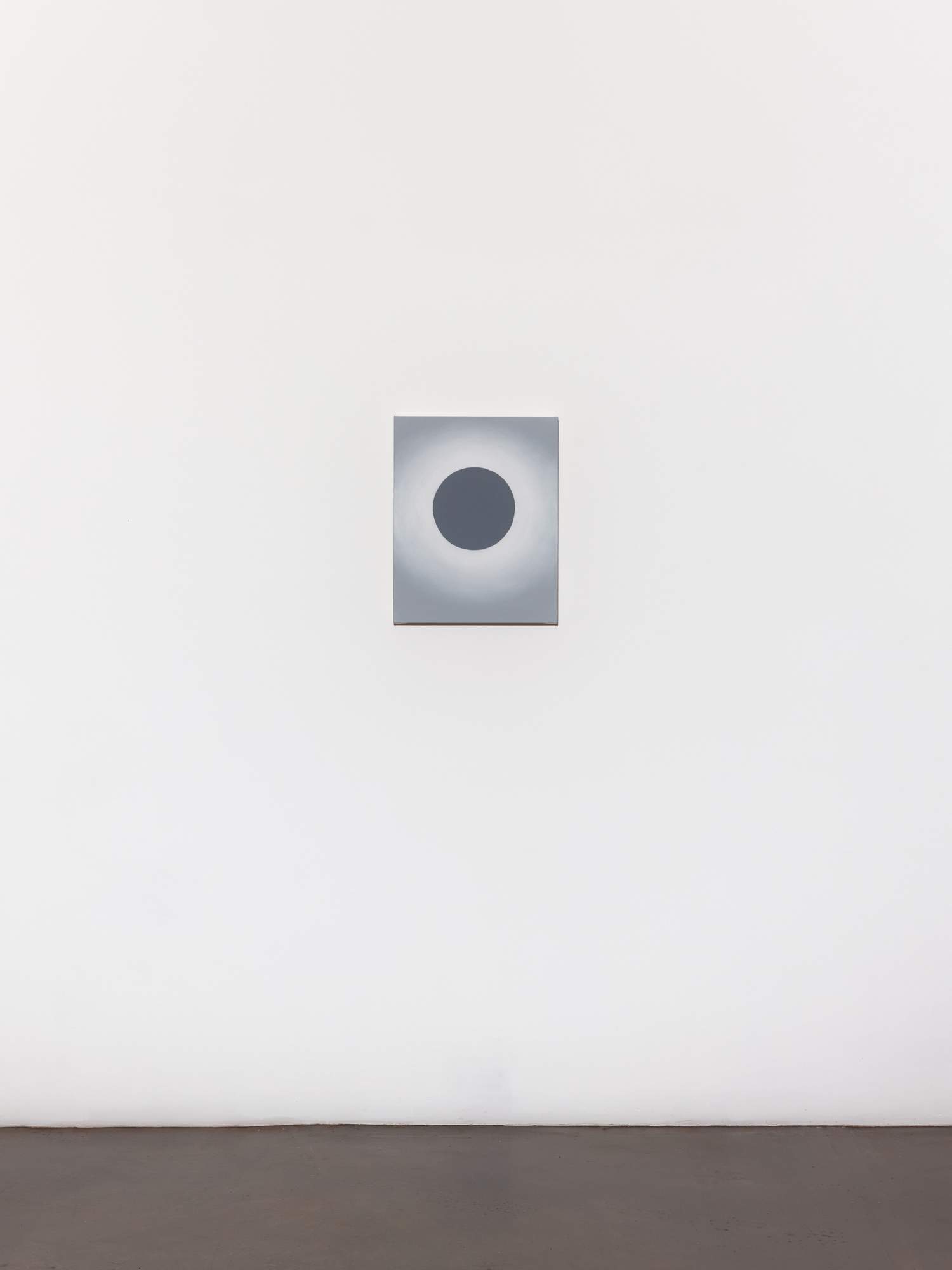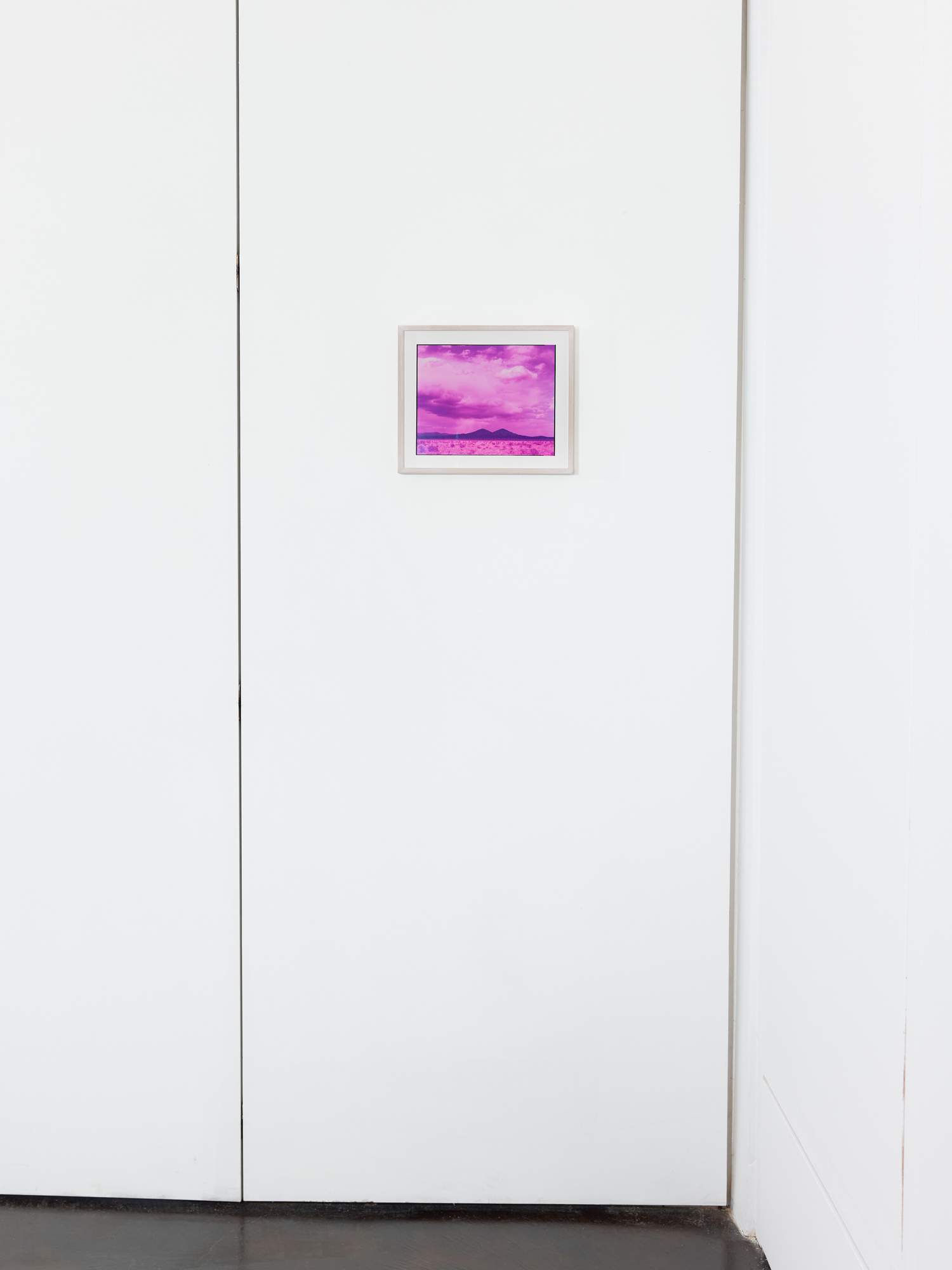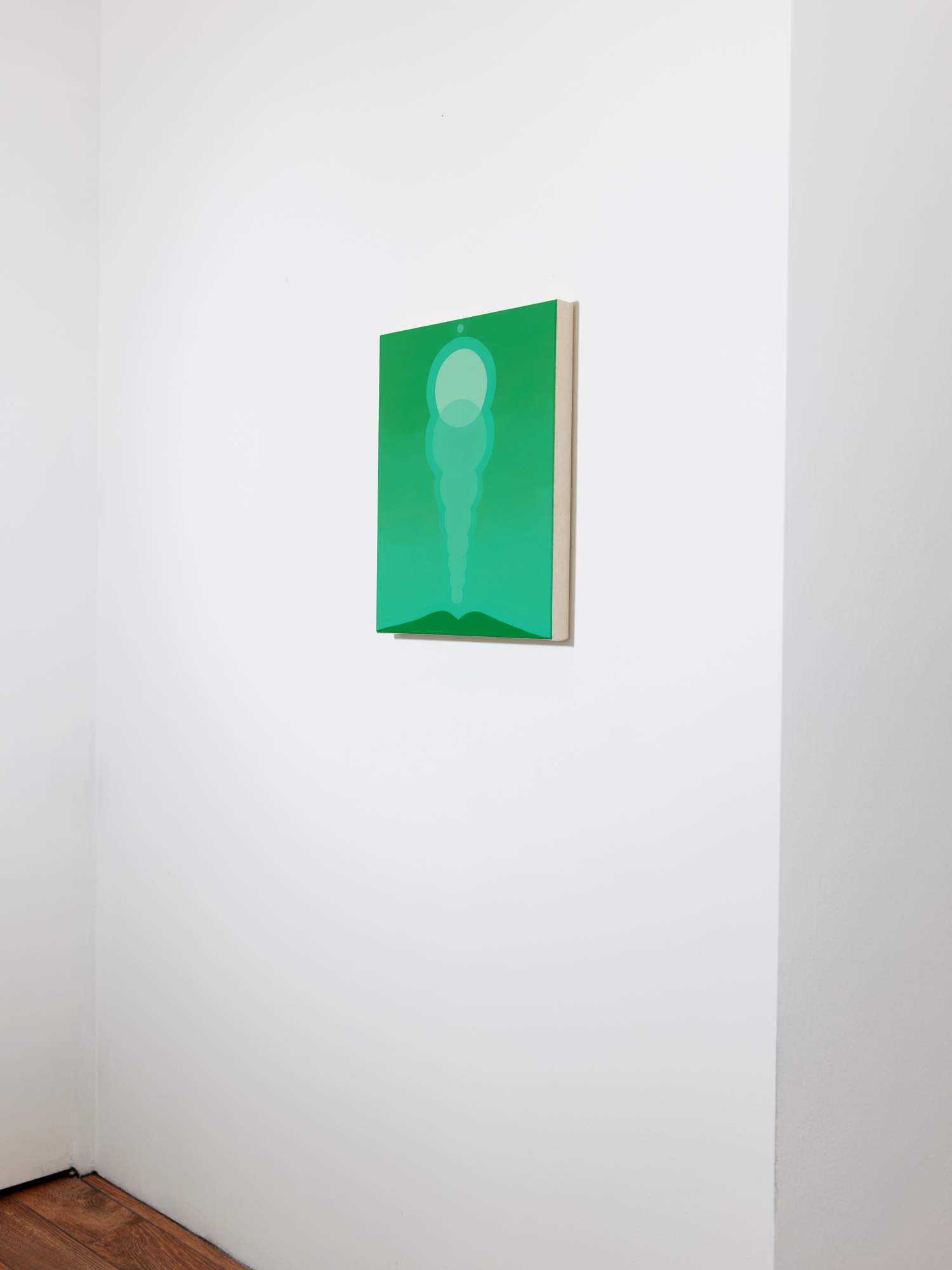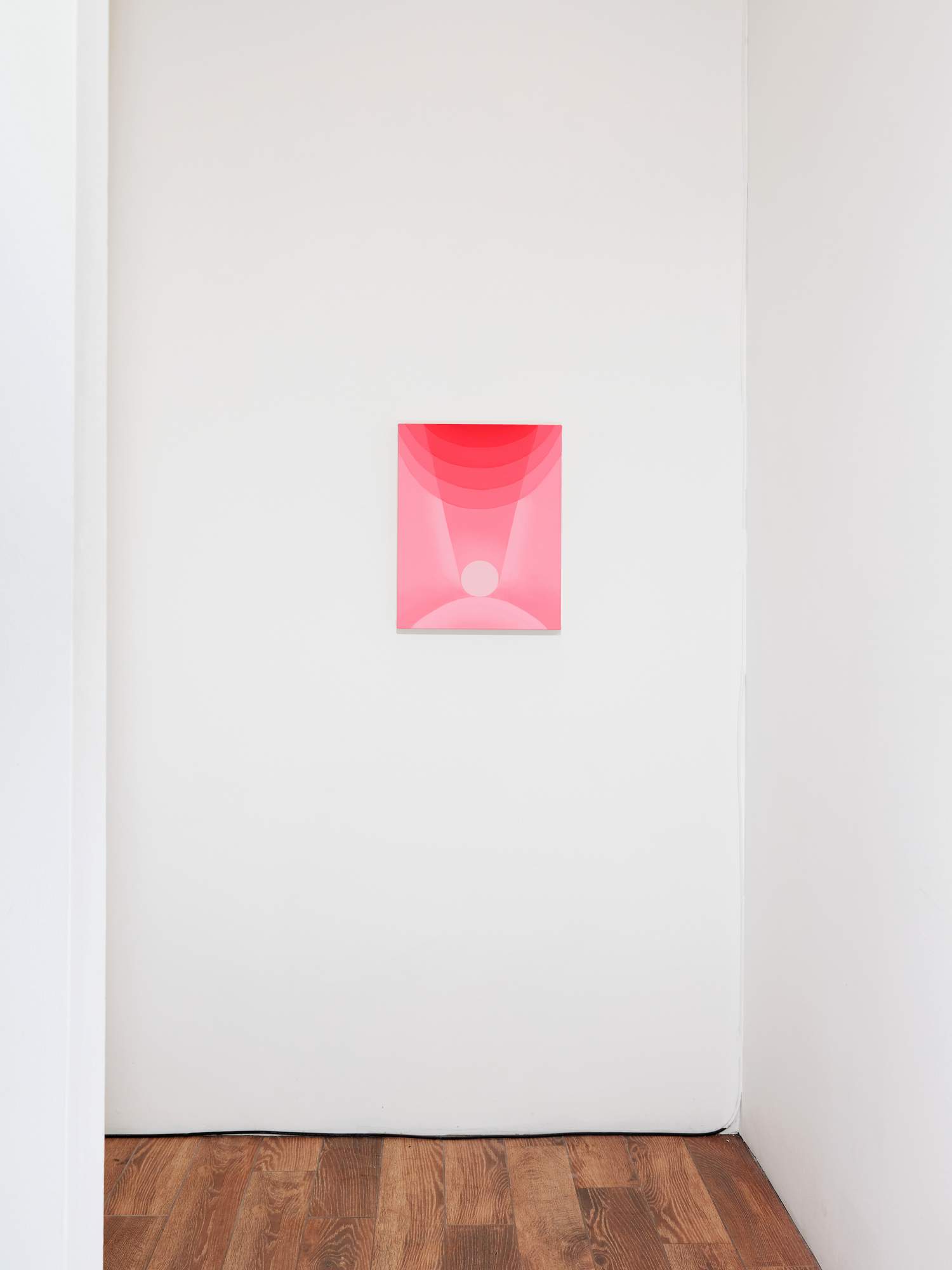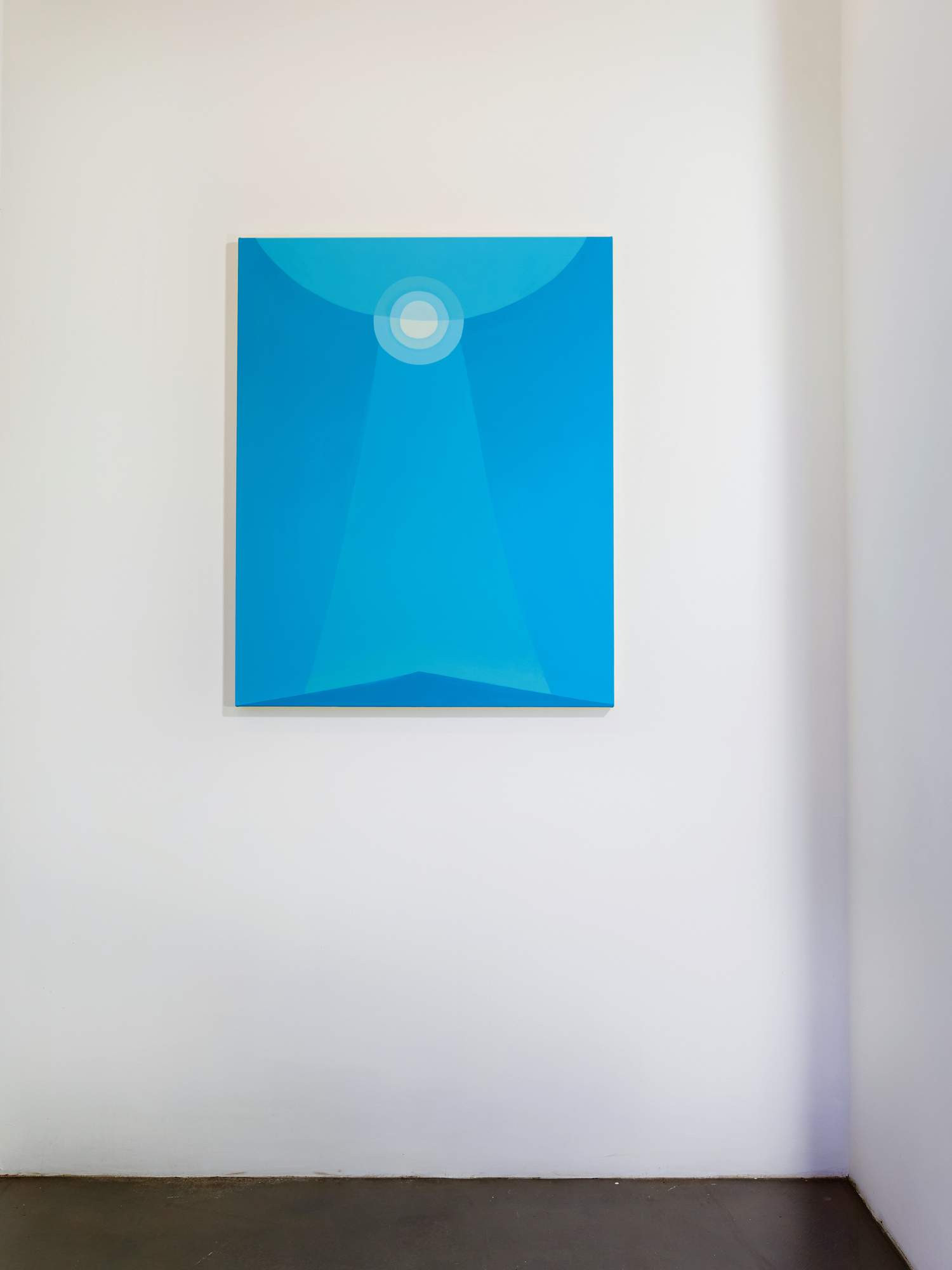Blue Ablation
2025
Nicelle Beauchene Gallery is pleased to present Blue Ablation, David Benjamin Sherry’s sixth New York solo exhibition and his first with the gallery. The presentation features six large-scale photographs from his recent expedition to Antarctica alongside five new oil paintings.
Sherry’s longstanding engagement with the American West and humanity’s fraught relationship with nature takes an expansive step forward as he turns his lens southward to the glaciers and icebergs of Antarctica. In Blue Ablation, a title which references the destruction of glacial ice and, relatedly, our own bodies, the artist pairs large-format analog photographs, rendered in vivid monochromes, with abstract paintings inspired by the atmospheric conditions and ice drifts of this enigmatic landscape. Capturing both Antarctica’s sublime beauty and its rapid transformation under global warming, Sherry moves beyond documentation to confront change itself. This new body of work engages legacies of exploration and exploitation while deepening Sherry’s own focus on queerness, spirituality and our survival as a species.
Sherry’s longstanding engagement with the American West and humanity’s fraught relationship with nature takes an expansive step forward as he turns his lens southward to the glaciers and icebergs of Antarctica. In Blue Ablation, a title which references the destruction of glacial ice and, relatedly, our own bodies, the artist pairs large-format analog photographs, rendered in vivid monochromes, with abstract paintings inspired by the atmospheric conditions and ice drifts of this enigmatic landscape. Capturing both Antarctica’s sublime beauty and its rapid transformation under global warming, Sherry moves beyond documentation to confront change itself. This new body of work engages legacies of exploration and exploitation while deepening Sherry’s own focus on queerness, spirituality and our survival as a species.
Painting has become central to Sherry’s practice in the past five years, a shift that began in 2020 when the pandemic restricted his access to the darkroom. Extending his use of the monochrome and photographic language into canvases, Sherry’s paintings offer alternative visions of the Antarctic that reverently foreground entropy and transience. They move beyond fact into atmosphere, light and sensation—offering a lasting mental afterlife and connection, rather than a fleeting impression. Through these mediums in tandem, Sherry attempts to redefine landscape—not as passive scenery, but as deeply charged spaces which both reflect our past and presage our future.
WORKS



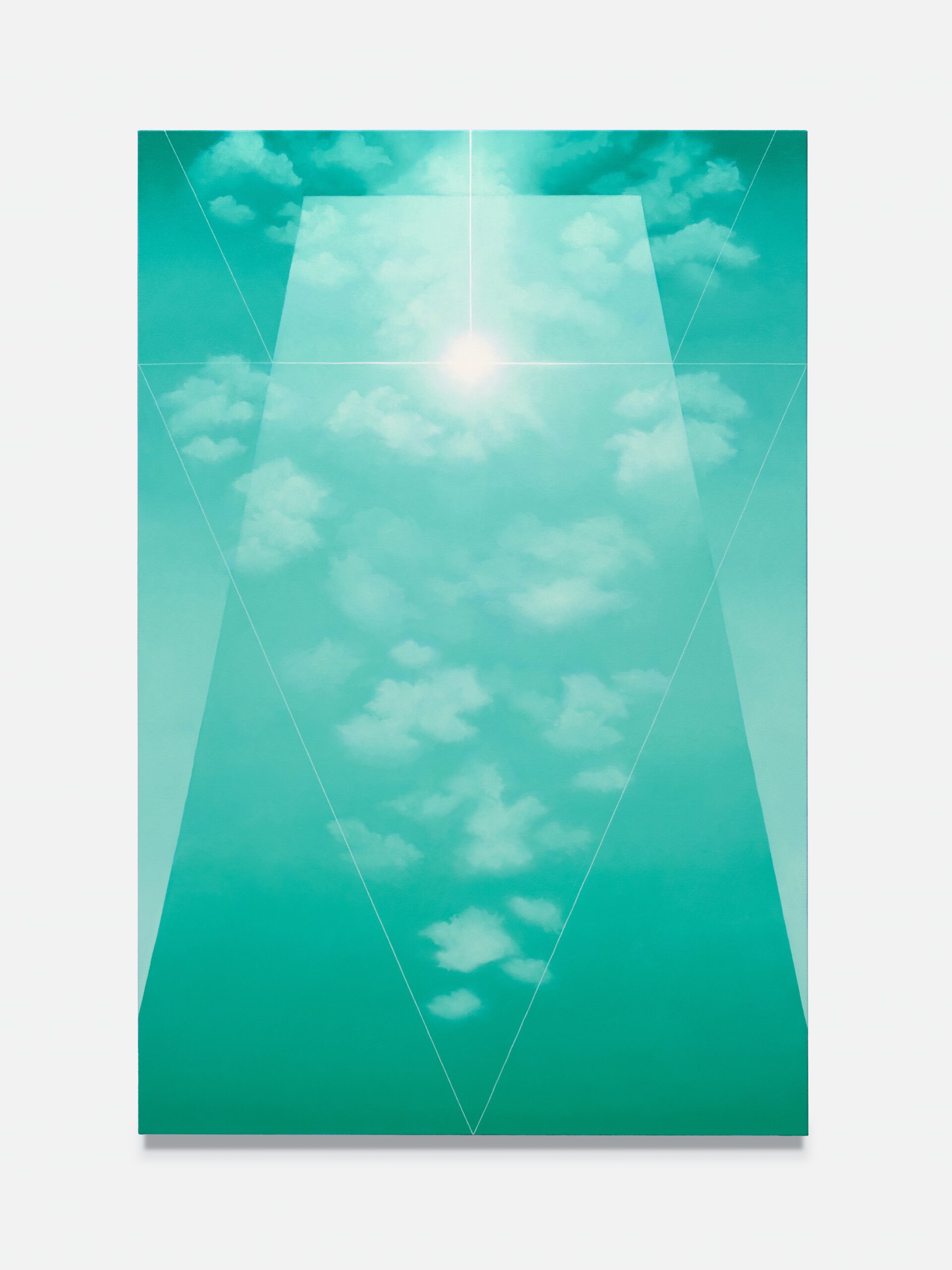

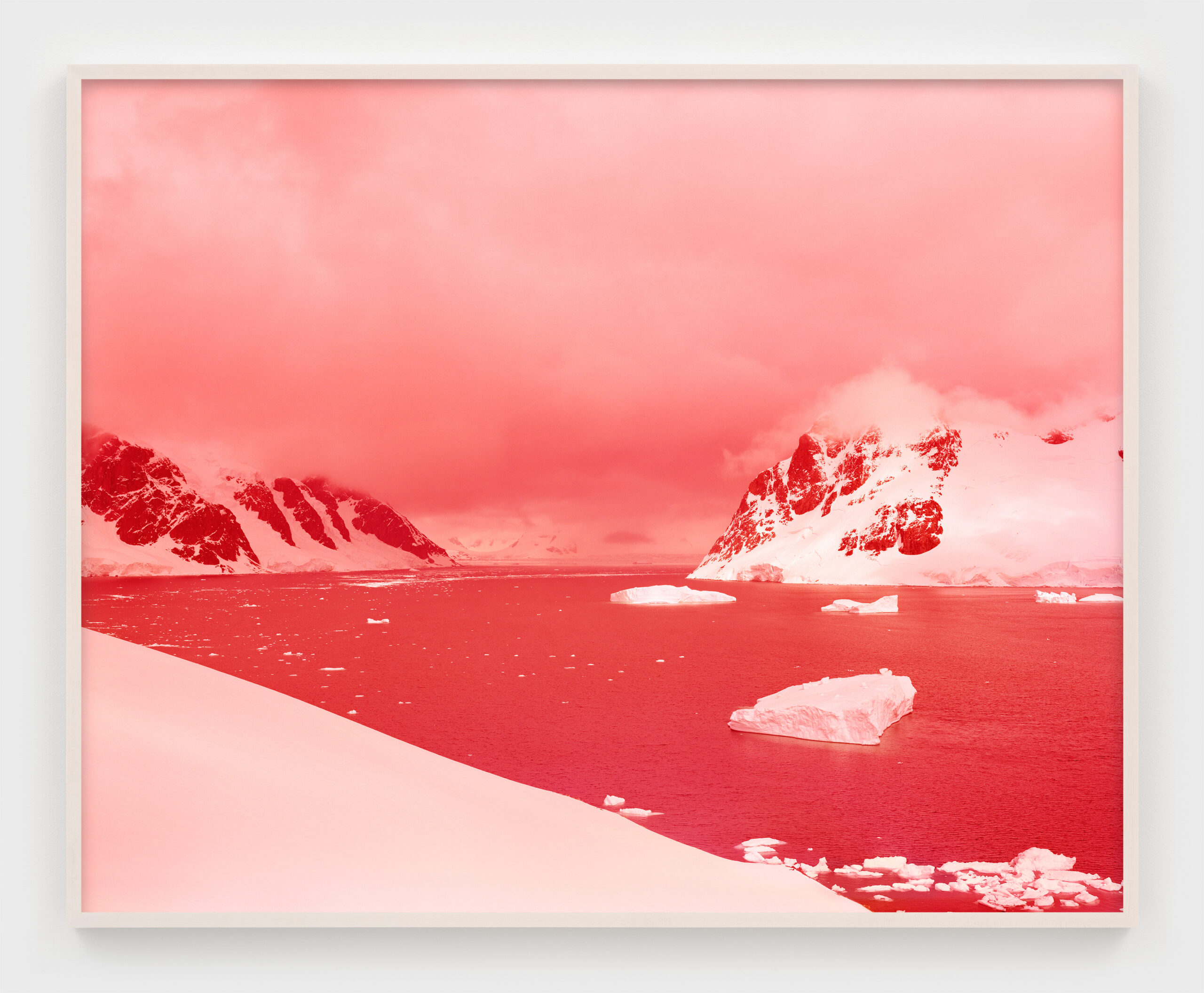


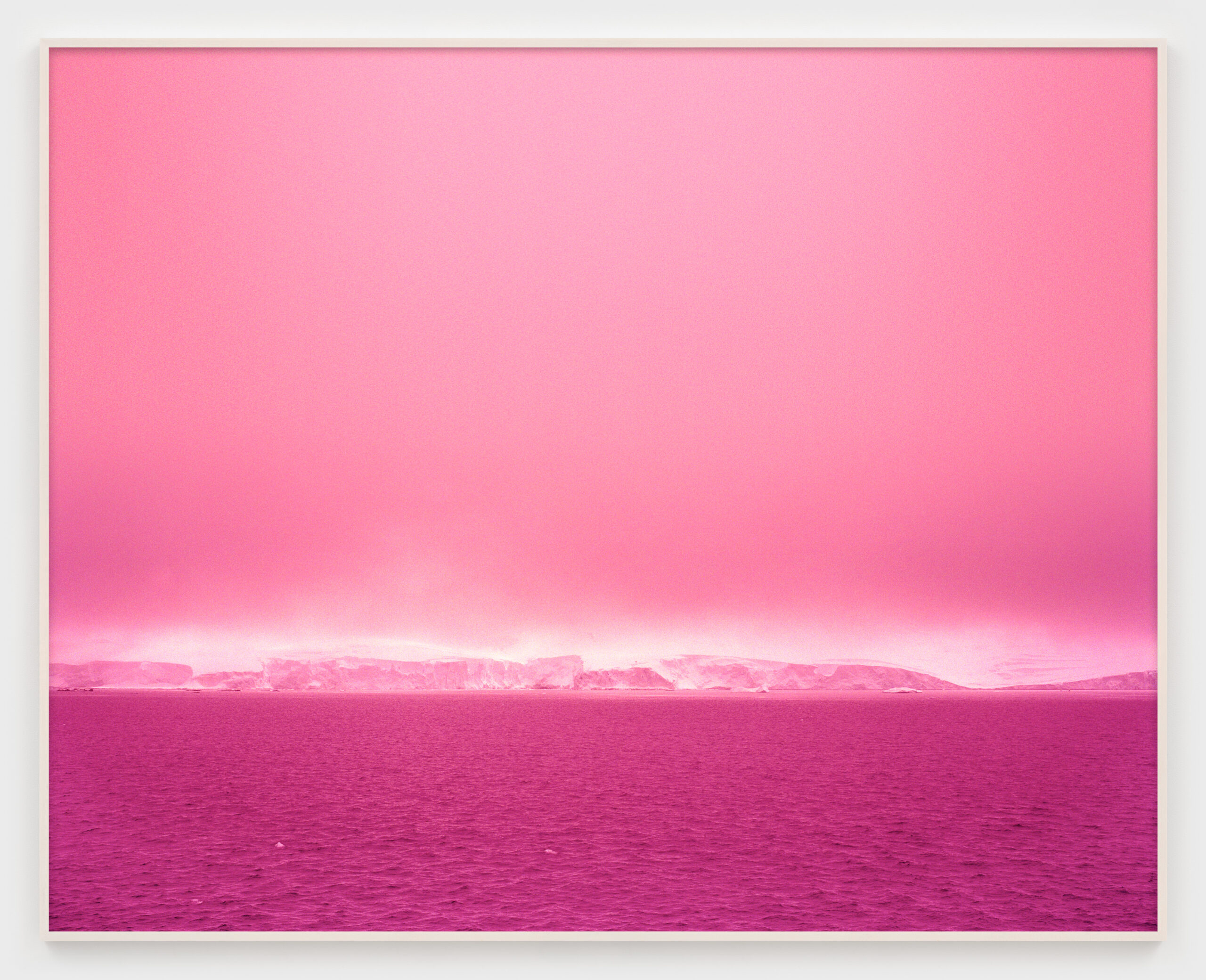

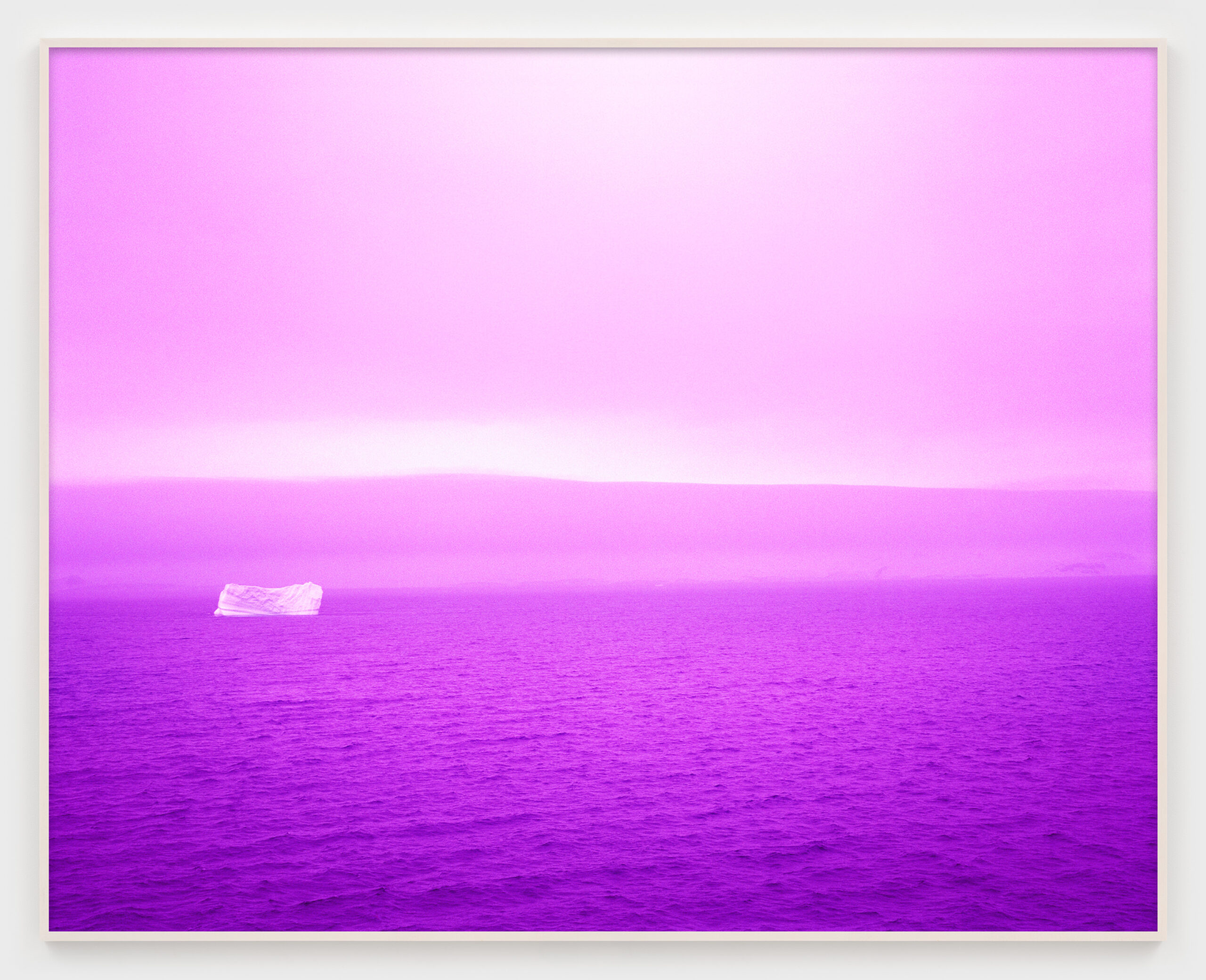
INSTALLATION

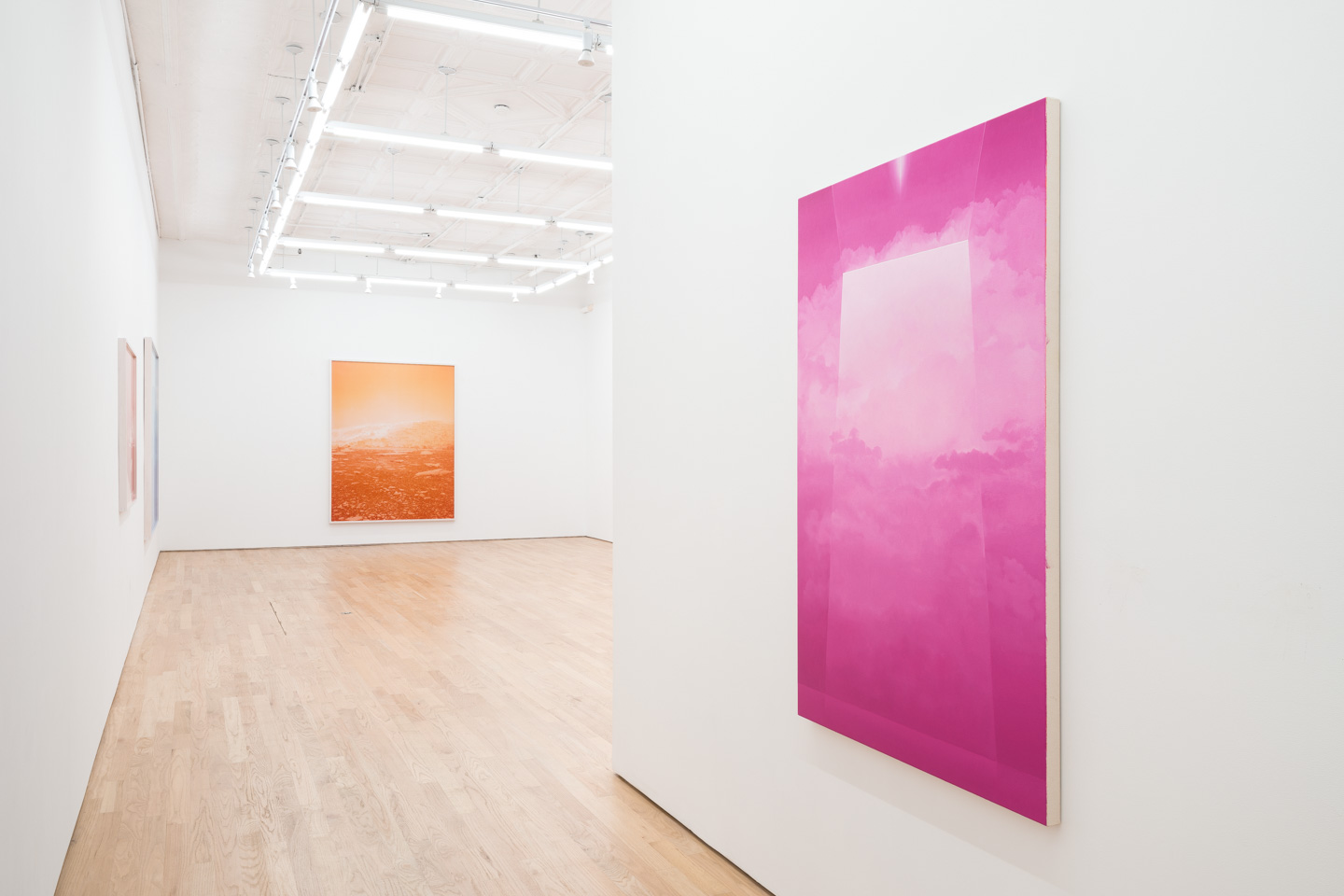
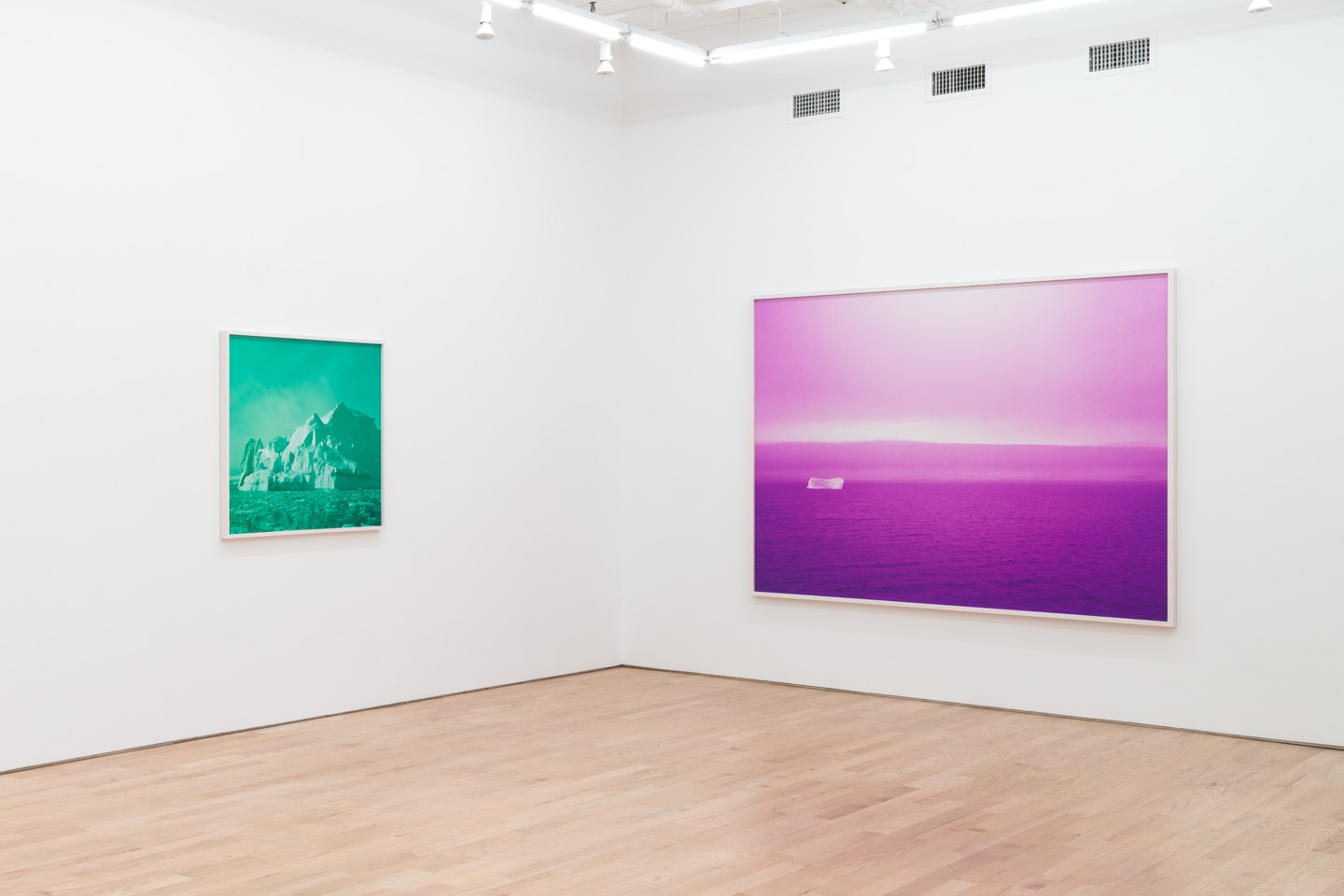
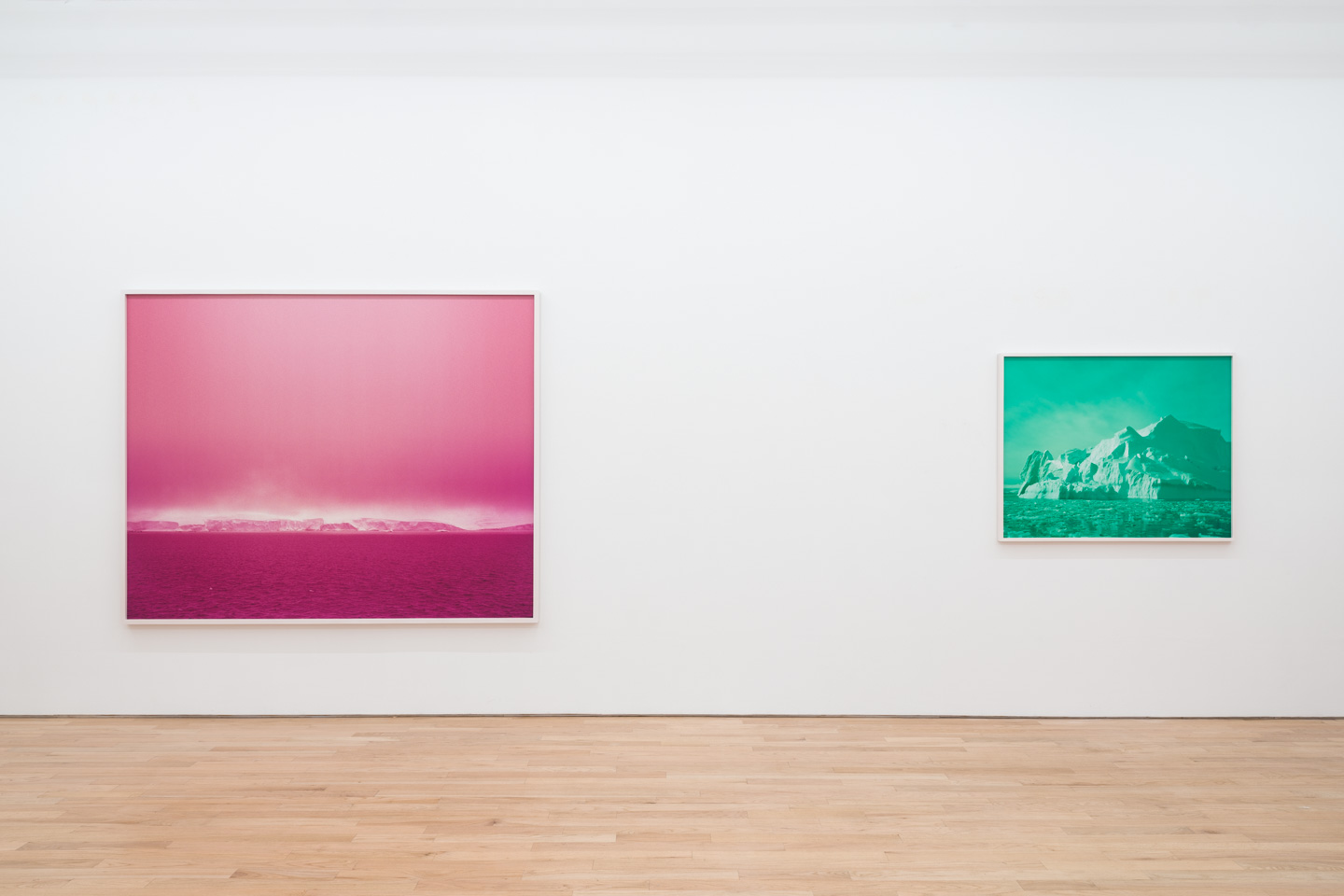
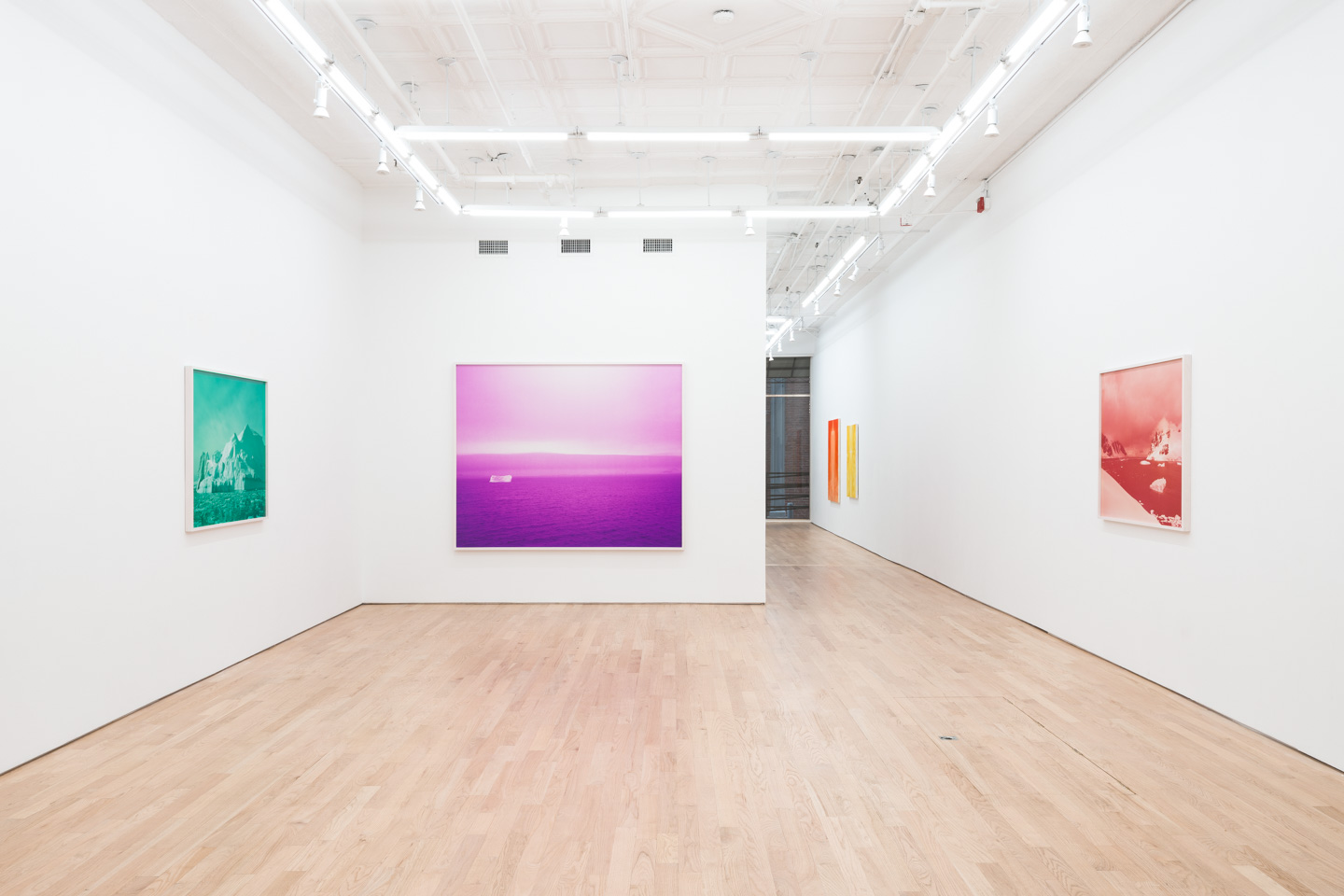

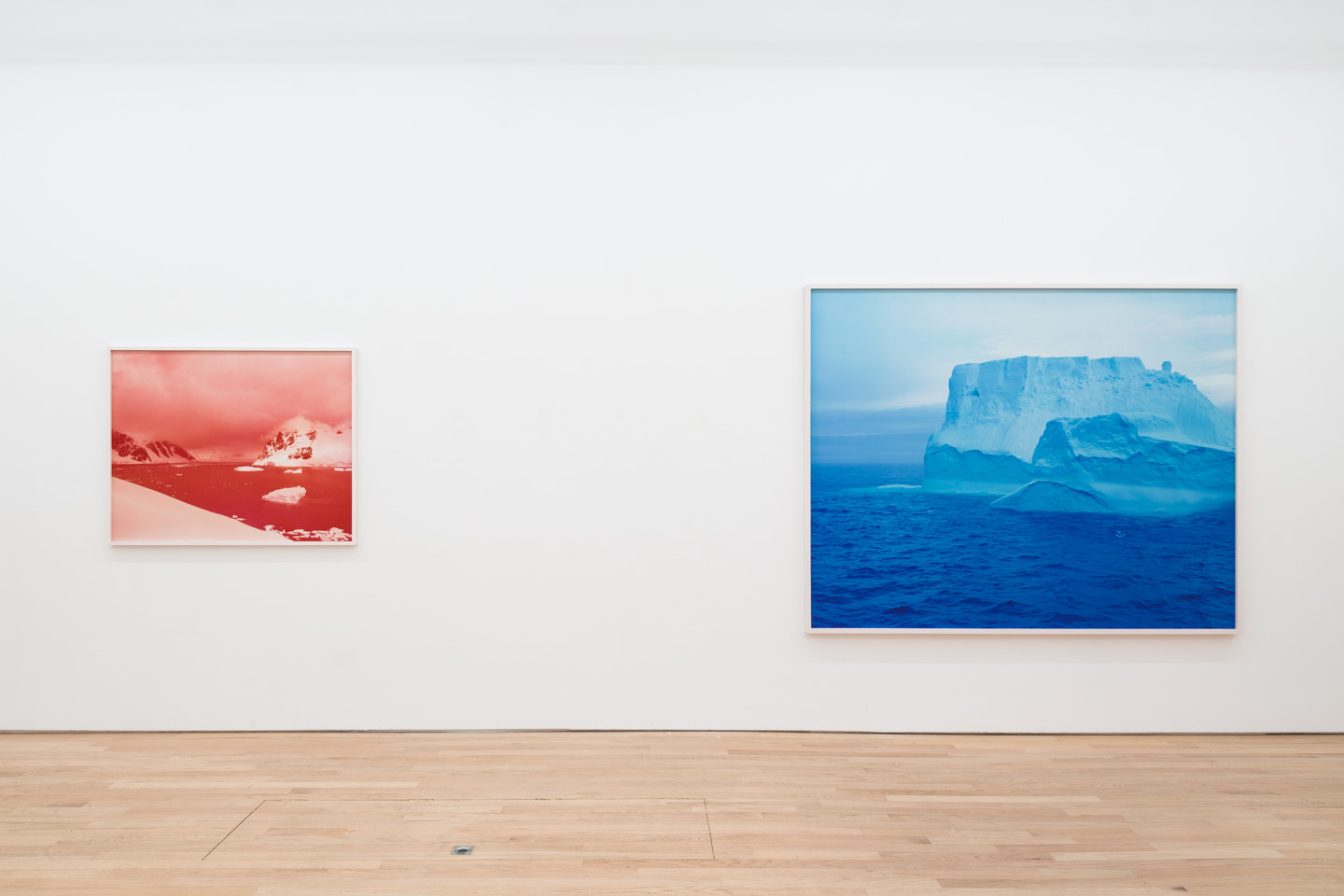
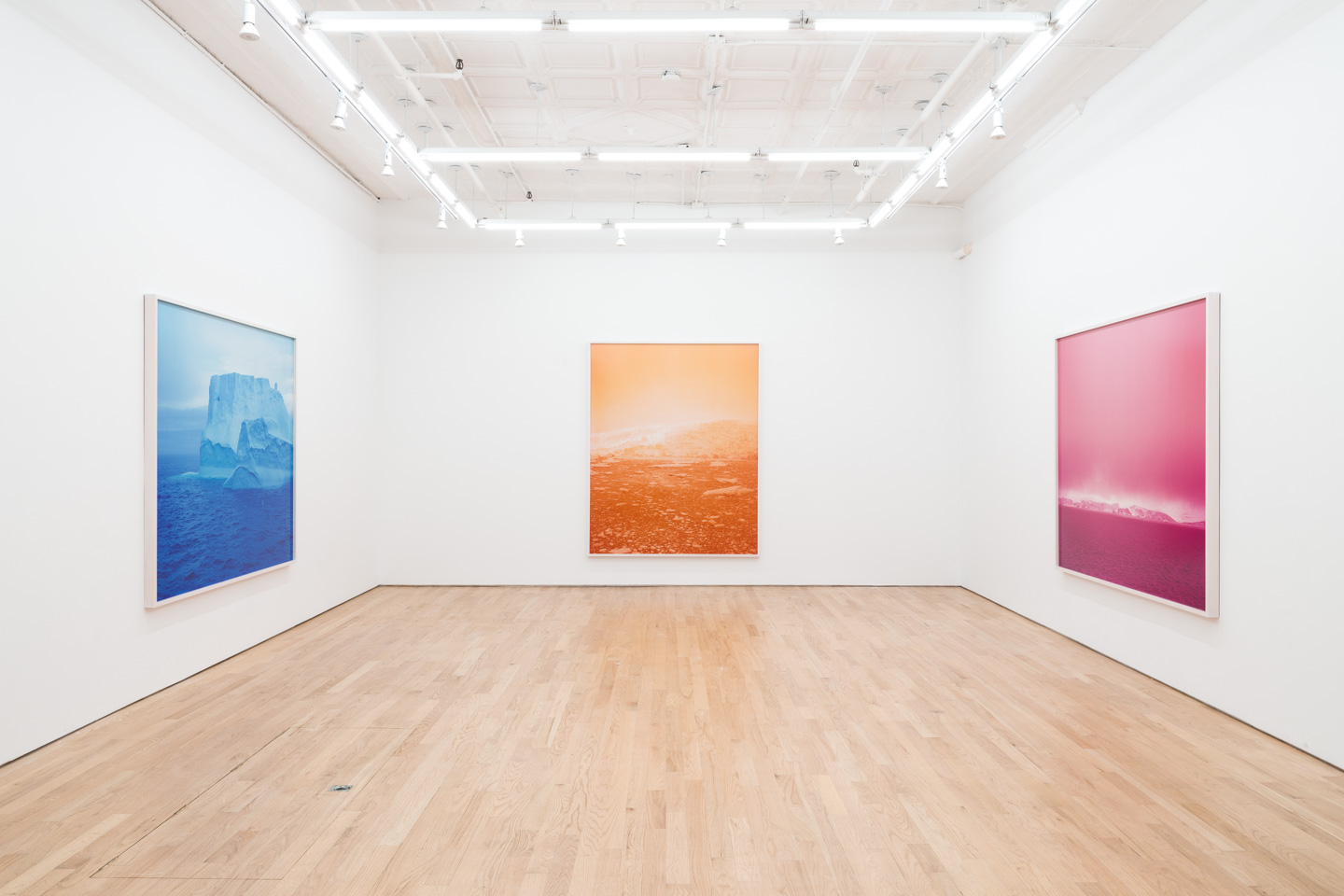
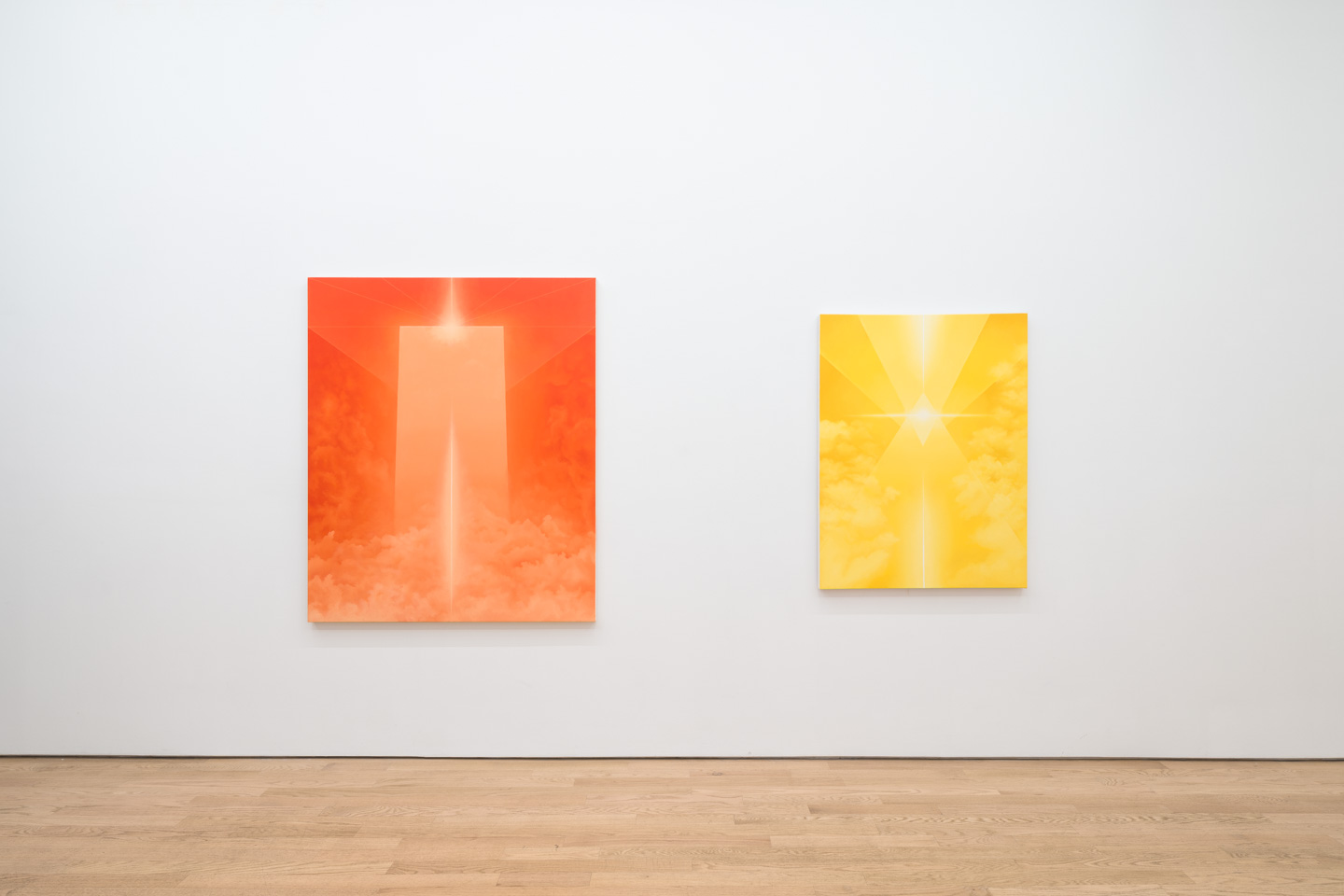
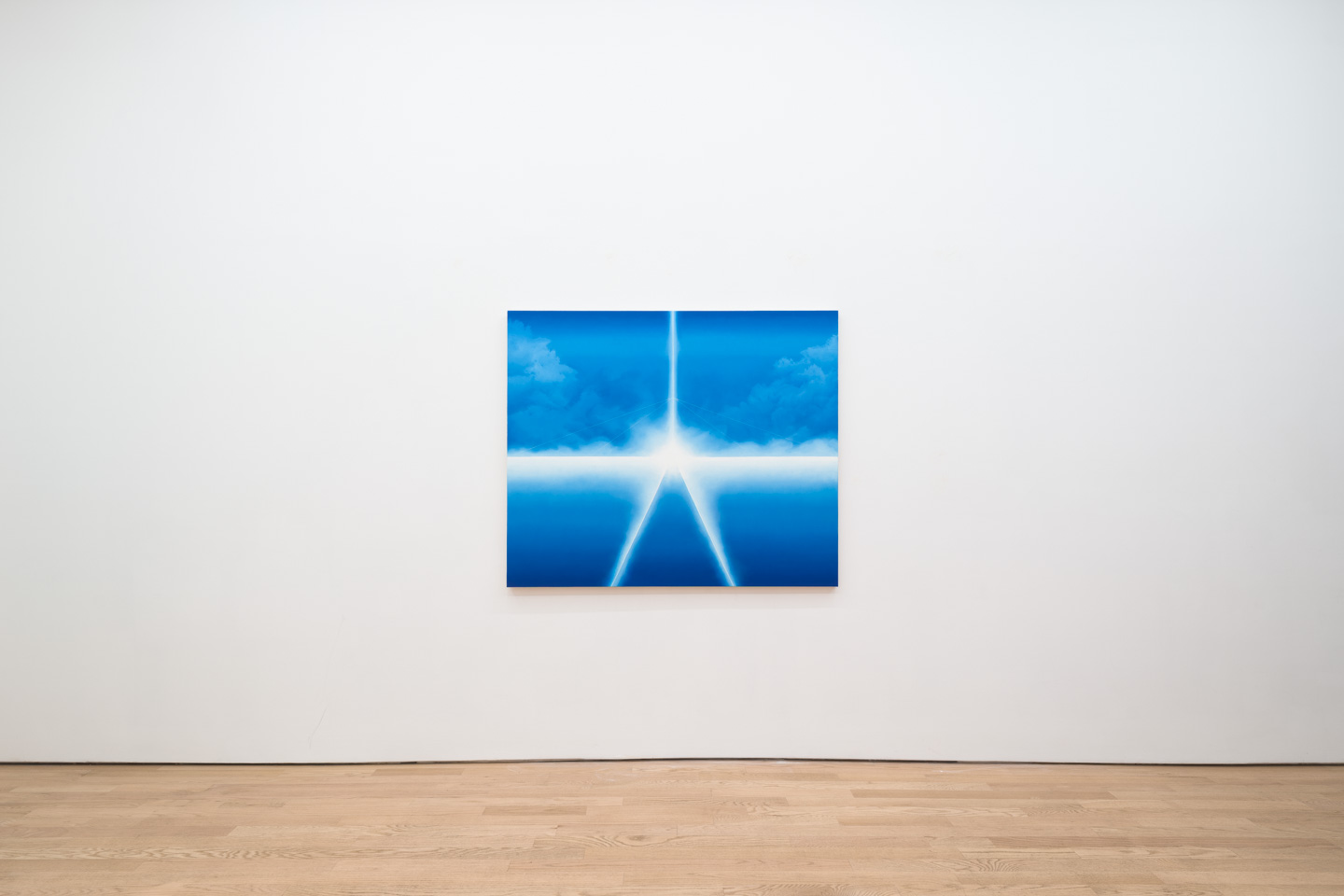
The Waves
2025
Huxley-Parlour are delighted to announce The Waves, an exhibition of new works by David Benjamin Sherry at their Swallow Street gallery, opening September 2025. Sherry’s second presentation with the gallery, the exhibition will present a suite of eight large-scale photographs taken in Antarctica last year.
This body of work is both a homecoming and an evolution for Sherry. Turning his lens to an entirely new landscape, with its unique challenges, Sherry continues his exploration of environmental change. For Sherry the project is a reaffirmation of the drive for conservation that has been prescient in all his work, yet Antarctica’s landscape simultaneously offers new mythologies and histories.
Sherry’s ethos of preservation is reflected in his choice of medium. The series is made using both medium and large-format cameras, and developed in the darkroom using traditional film techniques. Employing these analogue technologies in an era of increasing digital manipulation, Sherry seeks to both preserve and reanimate photography’s traditions. His methods situate his practice in the history of landscape photography, following the work of Ansel Adams, Carlton Watkins and other documentarians of the American West. However, Sherry does not simply look to replicate the environments which he photographs; in rendering his images in vivid hues - deep fuchsia, cool greens and warm yellows - Sherry’s work takes on an expressive quality. The icebergs and glaciers that he depicts are transformed, by Sherry’s darkroom interventions, into otherworldly forms.
This body of work is both a homecoming and an evolution for Sherry. Turning his lens to an entirely new landscape, with its unique challenges, Sherry continues his exploration of environmental change. For Sherry the project is a reaffirmation of the drive for conservation that has been prescient in all his work, yet Antarctica’s landscape simultaneously offers new mythologies and histories.
Sherry’s ethos of preservation is reflected in his choice of medium. The series is made using both medium and large-format cameras, and developed in the darkroom using traditional film techniques. Employing these analogue technologies in an era of increasing digital manipulation, Sherry seeks to both preserve and reanimate photography’s traditions. His methods situate his practice in the history of landscape photography, following the work of Ansel Adams, Carlton Watkins and other documentarians of the American West. However, Sherry does not simply look to replicate the environments which he photographs; in rendering his images in vivid hues - deep fuchsia, cool greens and warm yellows - Sherry’s work takes on an expressive quality. The icebergs and glaciers that he depicts are transformed, by Sherry’s darkroom interventions, into otherworldly forms.
For Sherry, colour can act as a memory or an evocation of feeling. The act of photographing and being immersed in the natural world is a deeply personal, spiritual, and meditative one. In the process, the artist aims to understand humanity’s place in the environment, and the responsibility that comes with it. As a queer artist operating within a genre steeped in masculine traditions, Sherry’s work generates new narratives and understandings of identity and place.
Where his previous work investigated the enduring mythologies of the American West, dominated by redolent symbols of mountains, valleys and ancient trees, Sherry’s photographs of Antarctica emphasise the entropic, transient nature of the landscape. Works from the exhibition, such as Transformer and Sleeping Deliverance exist at the boundary between Romanticism and the fraught realities of a rapidly changing environment. Bearing witness to the continent’s disorientating, undeveloped landscape, while also watching its erosion and continual atmospheric shifts was a dislocating experience for Sherry. The artist identifies a hopefulness in he coexistence of beauty and destruction. His photographs act as testament to the beauty of the natural environment and our position within it, as well as an urgent call for its protection.
Where his previous work investigated the enduring mythologies of the American West, dominated by redolent symbols of mountains, valleys and ancient trees, Sherry’s photographs of Antarctica emphasise the entropic, transient nature of the landscape. Works from the exhibition, such as Transformer and Sleeping Deliverance exist at the boundary between Romanticism and the fraught realities of a rapidly changing environment. Bearing witness to the continent’s disorientating, undeveloped landscape, while also watching its erosion and continual atmospheric shifts was a dislocating experience for Sherry. The artist identifies a hopefulness in he coexistence of beauty and destruction. His photographs act as testament to the beauty of the natural environment and our position within it, as well as an urgent call for its protection.
WORKS

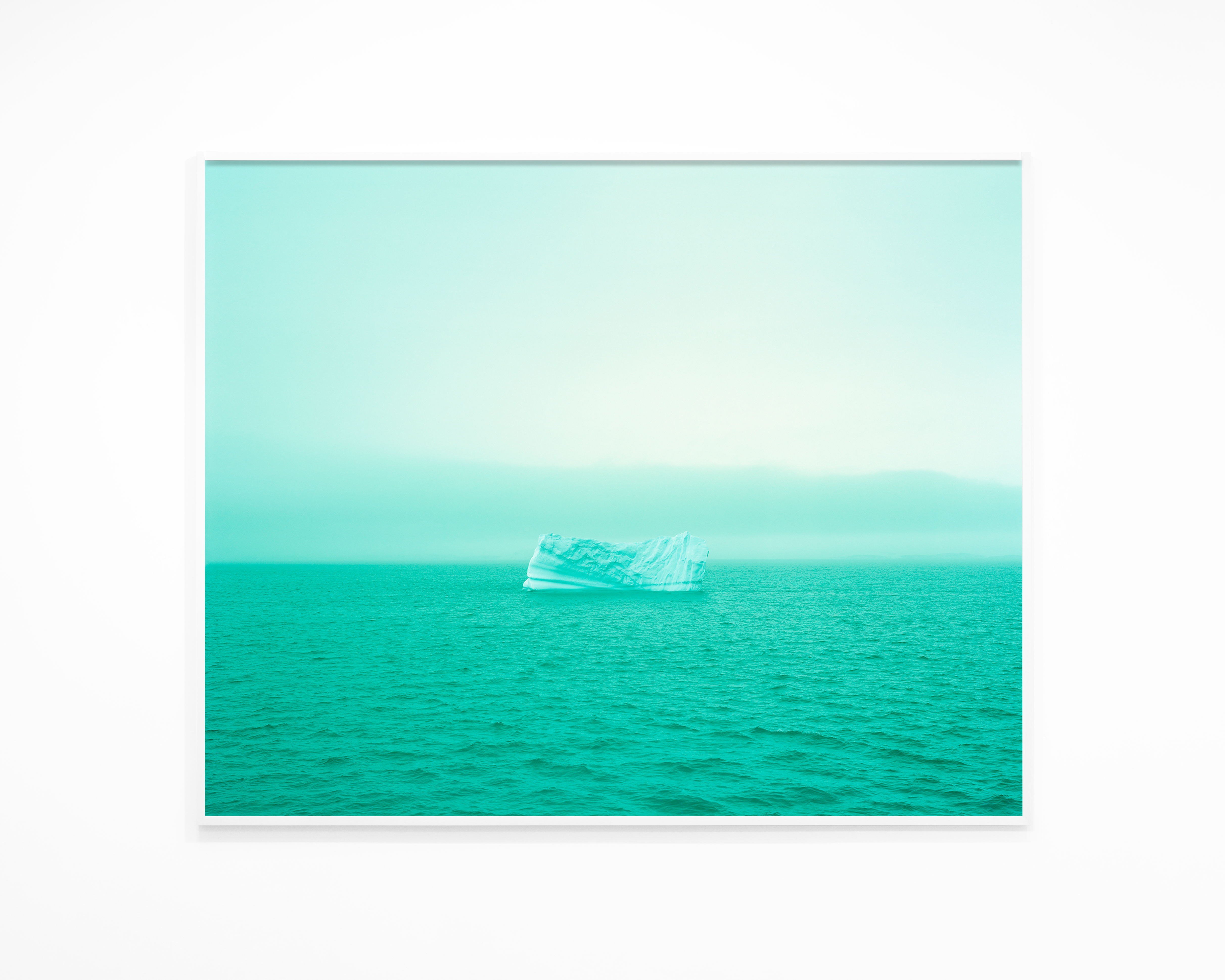


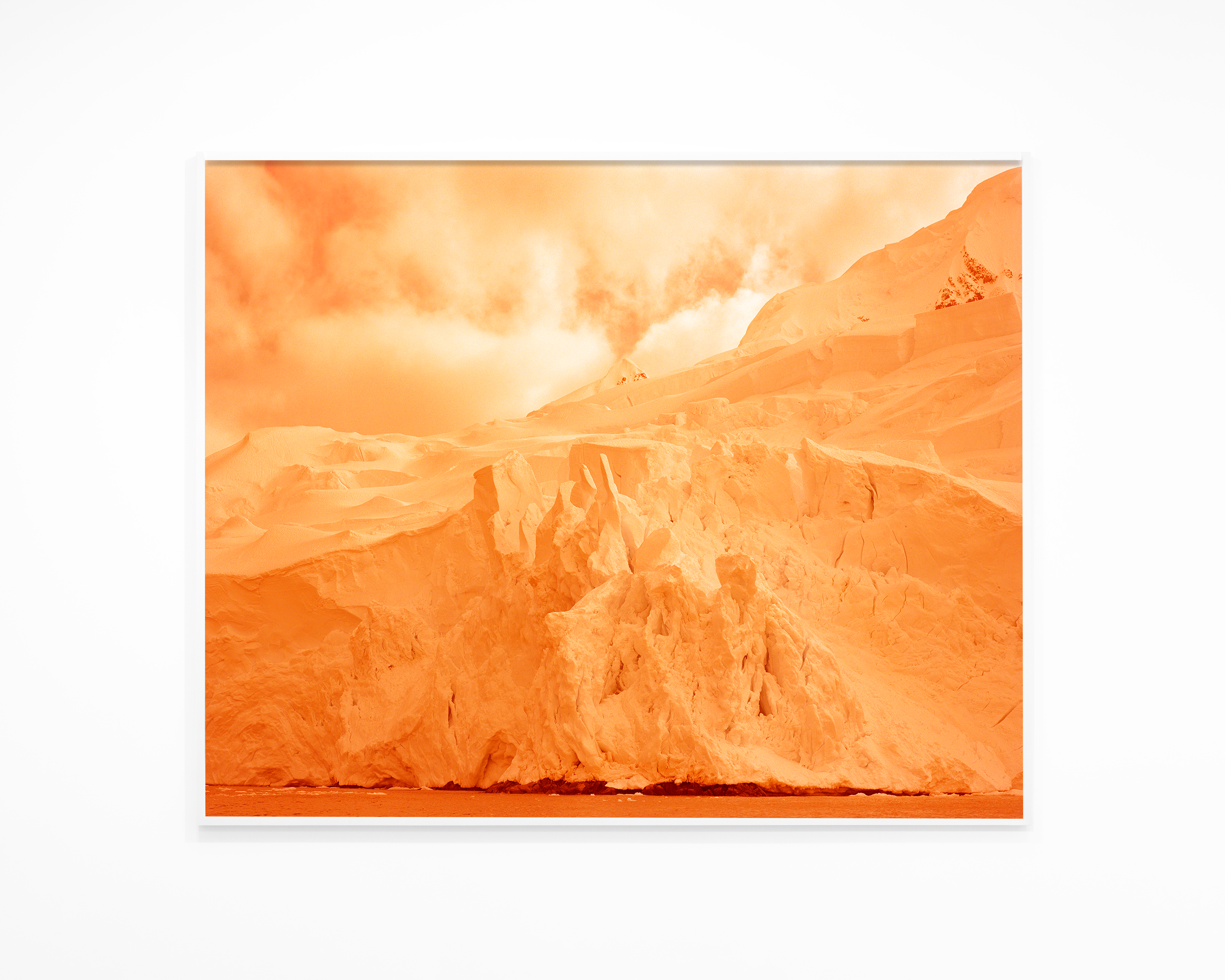
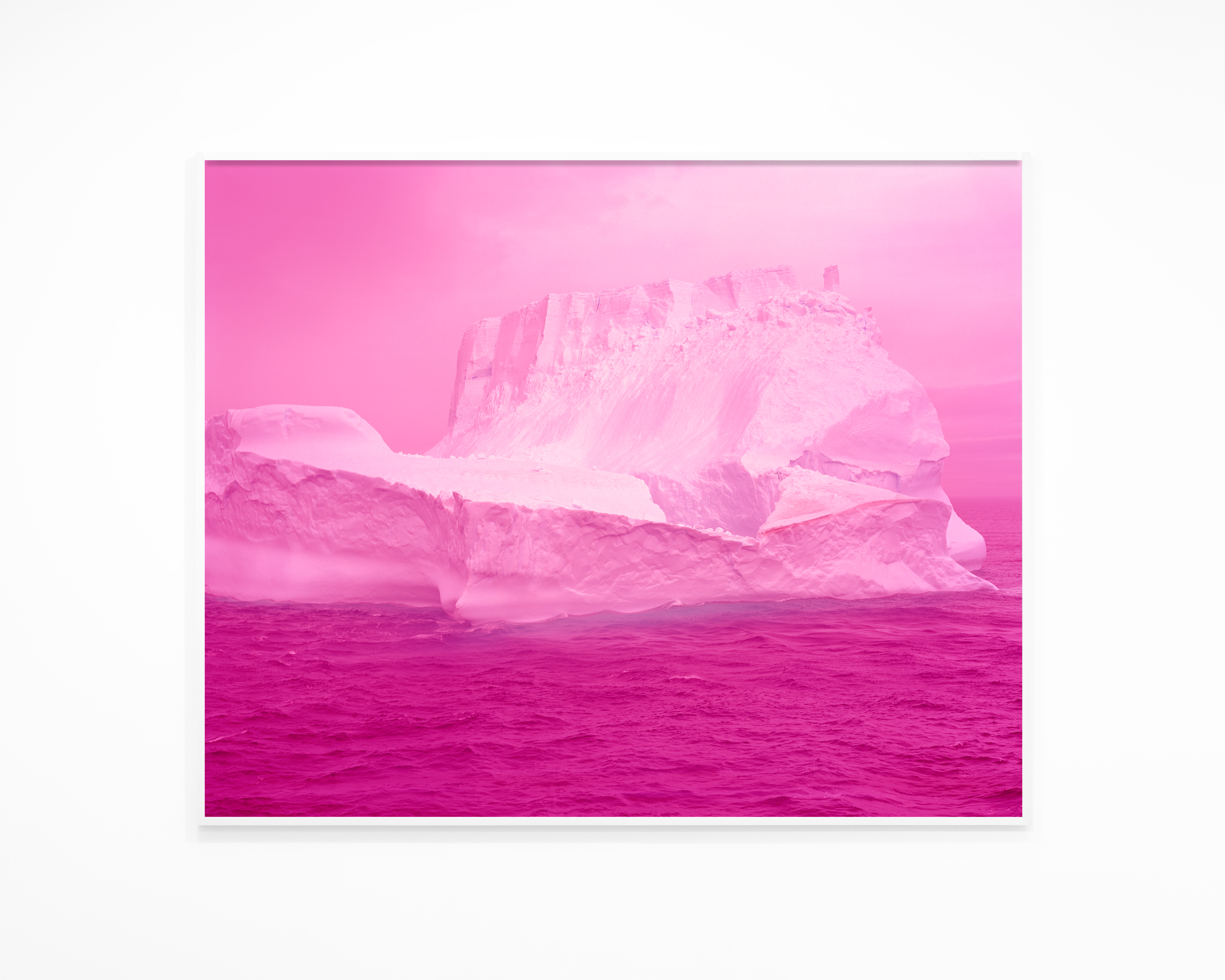


INSTALLATION
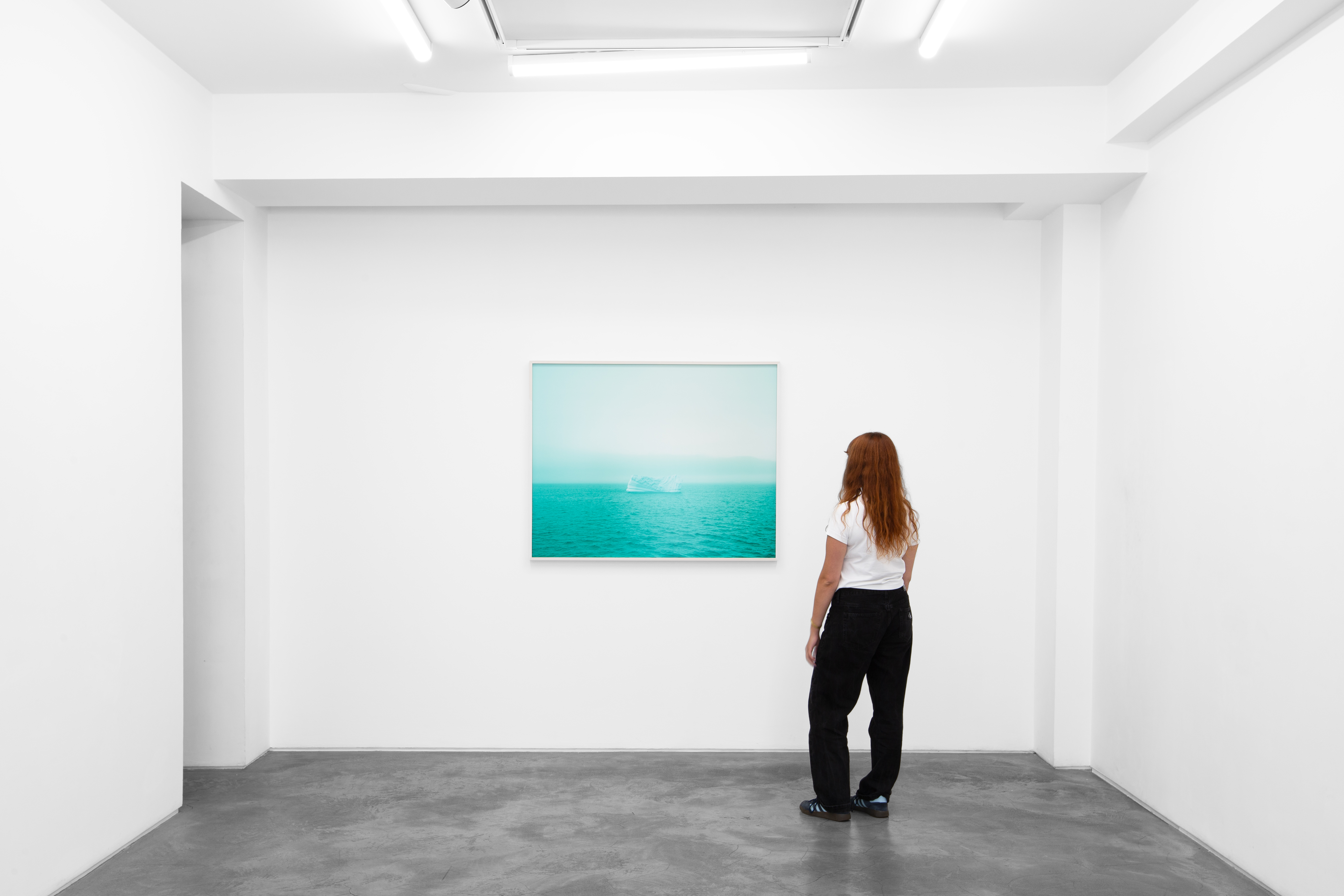

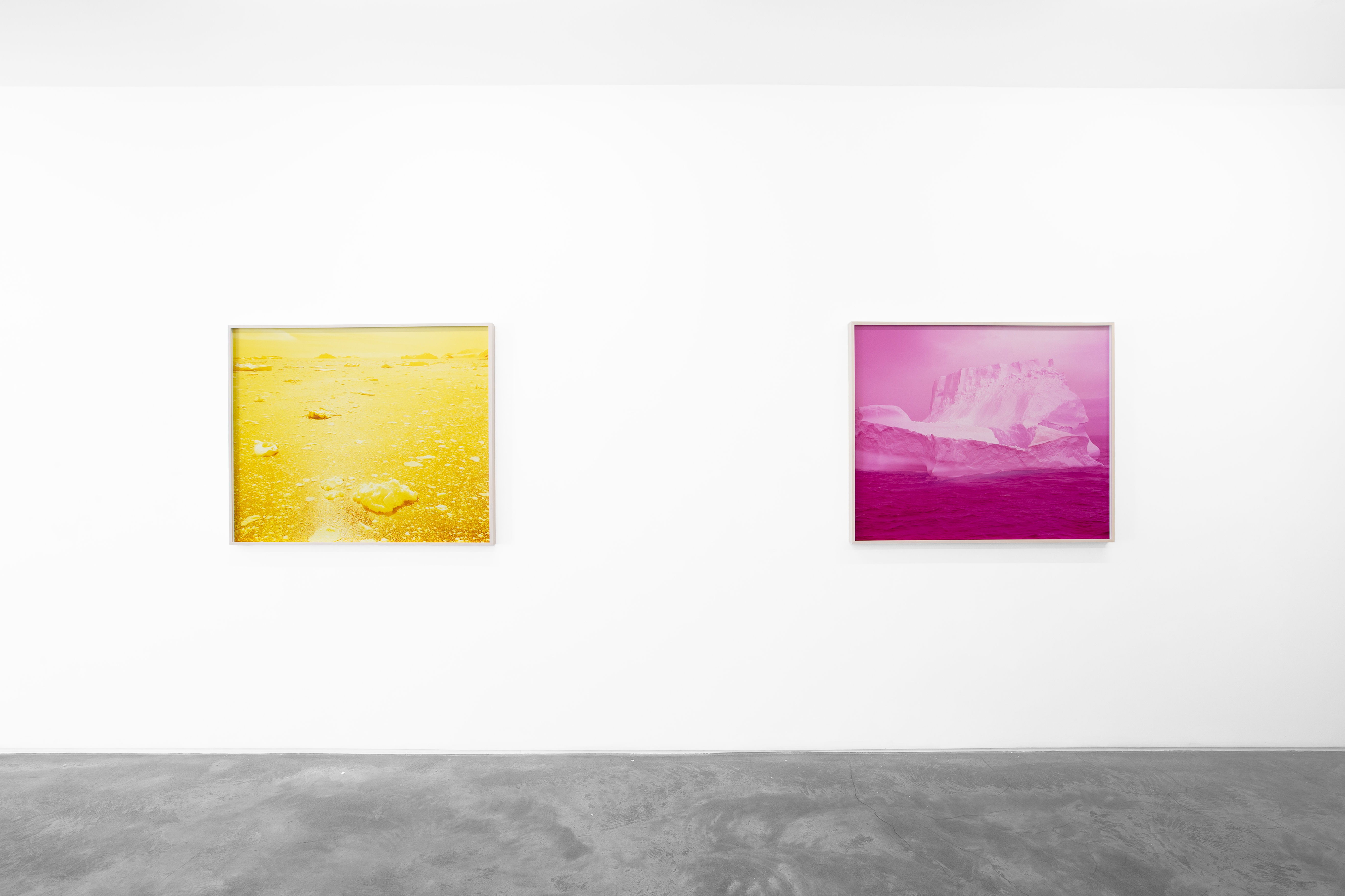
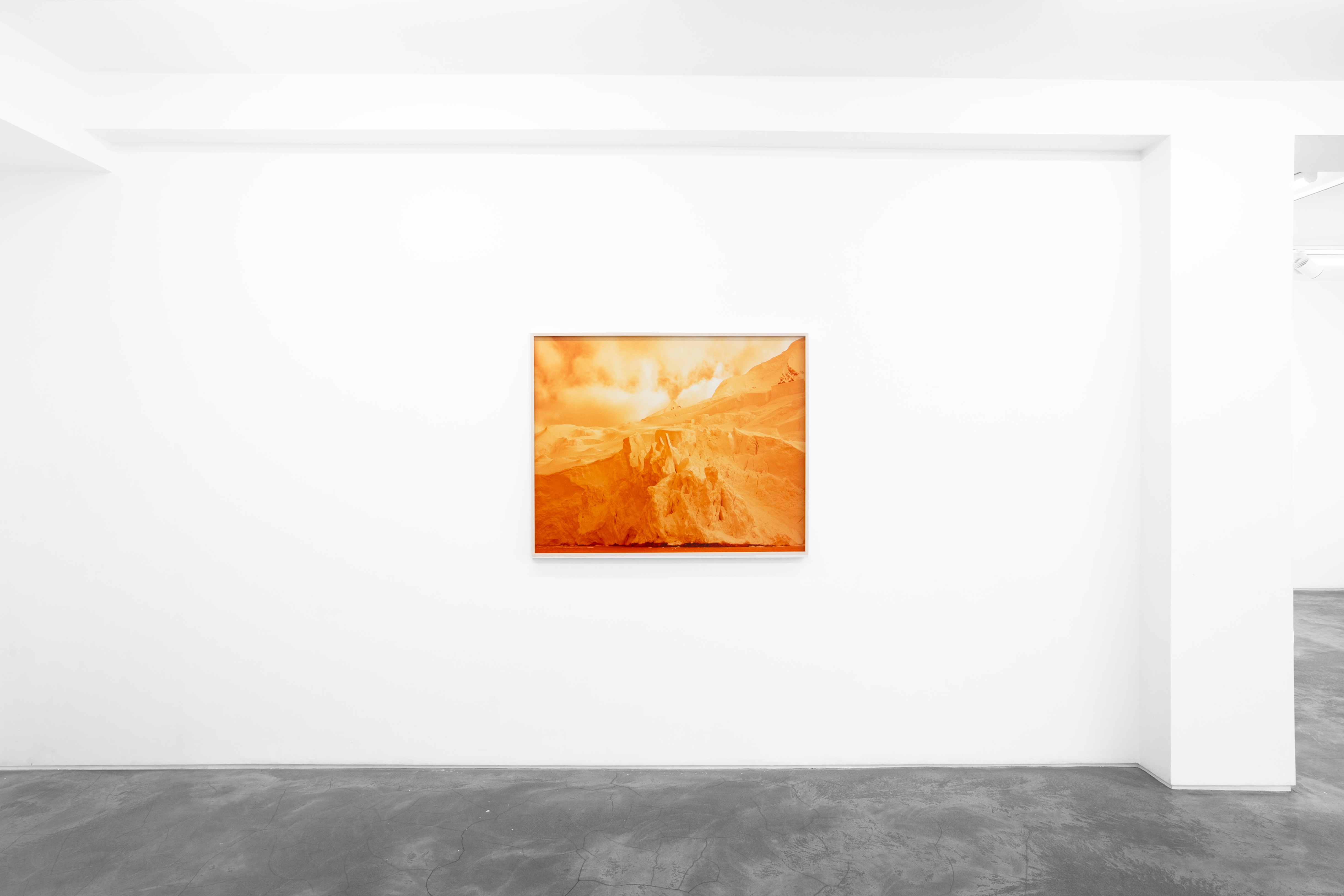


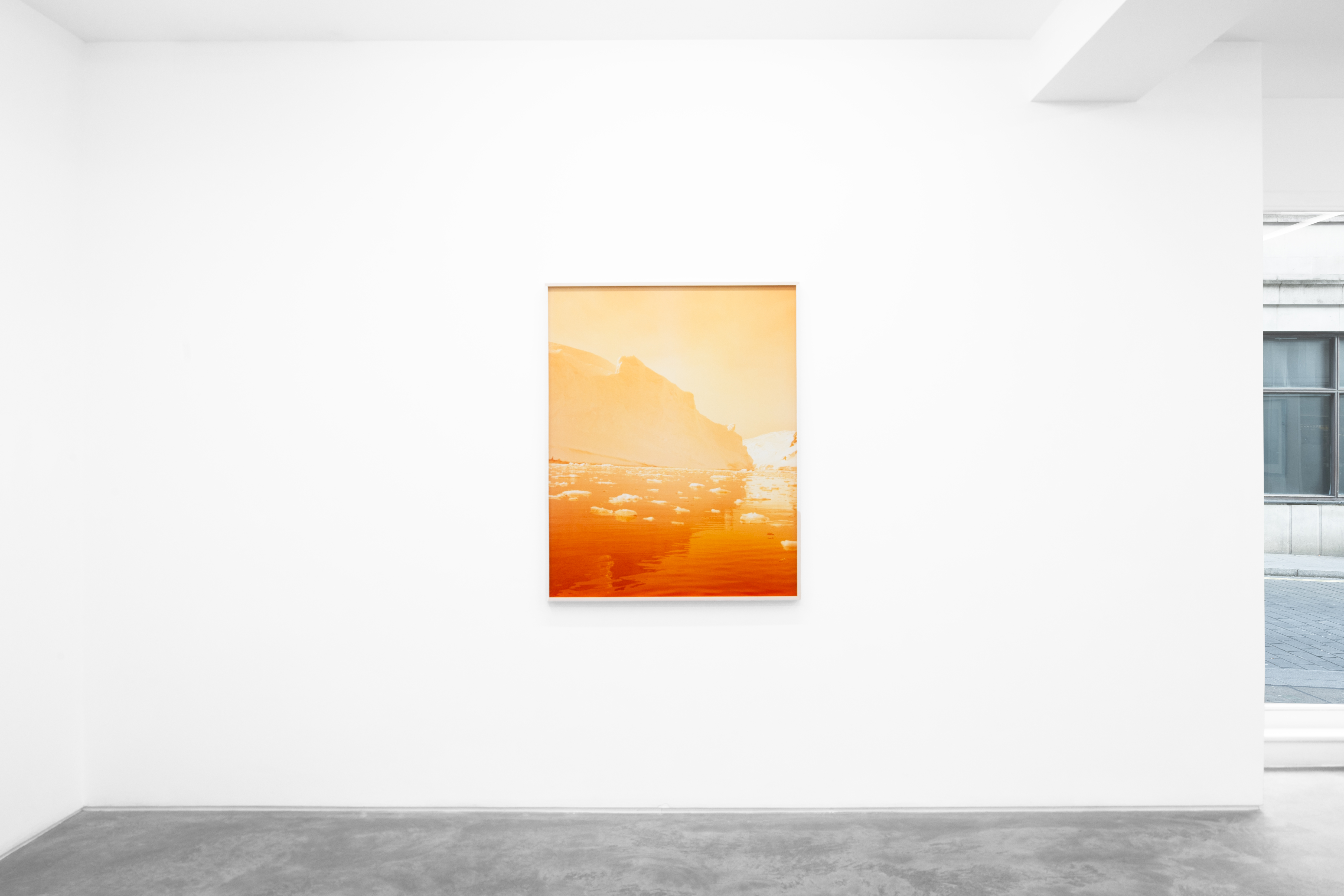

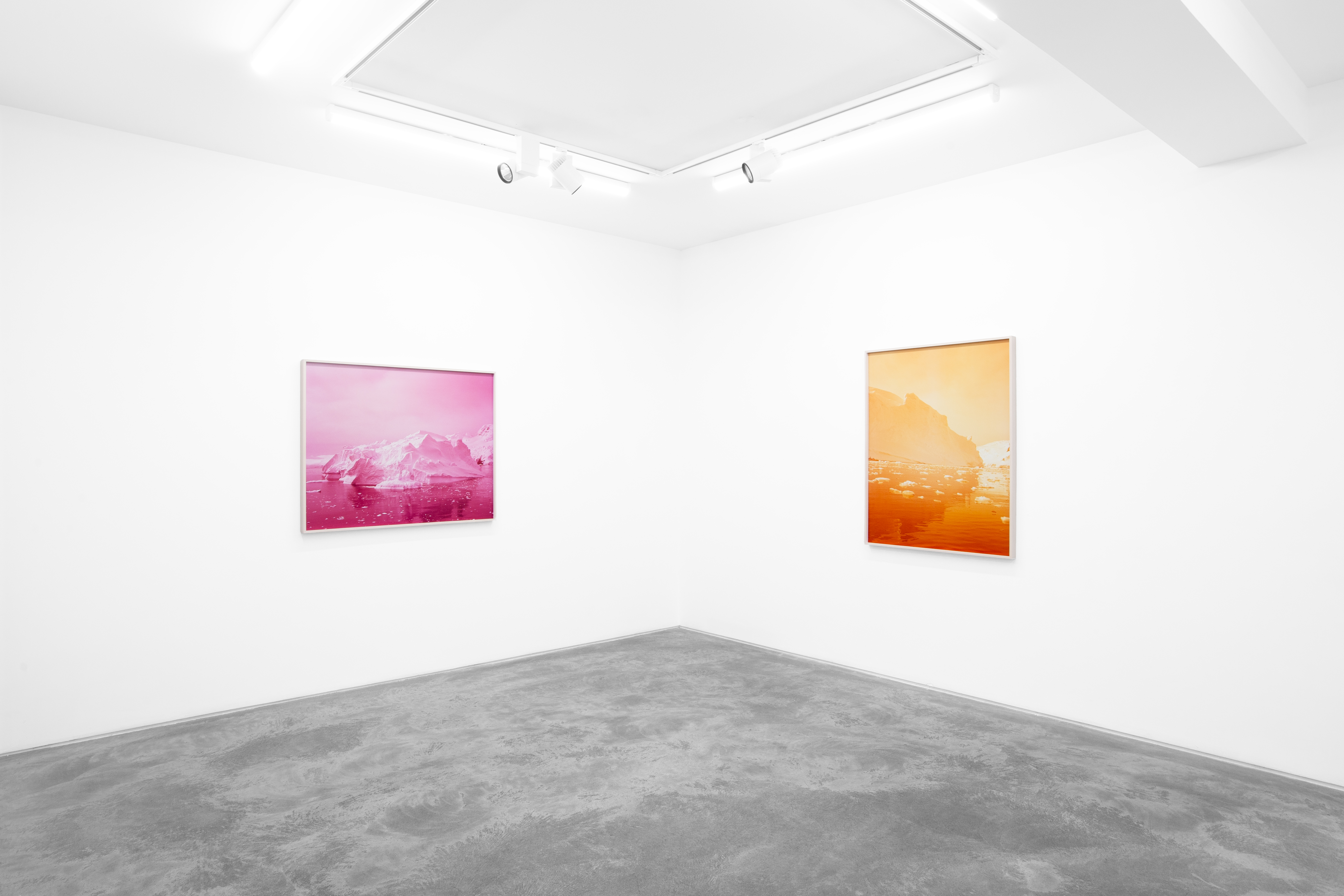

New Moon
2024
Morán Morán is pleased to announce New Moon, an exhibition showcasing ten new paintings and three
large-scale monochromatic film photographs by American artist David Benjamin Sherry at the gallery's
México City location. This will be the artist's first solo show in México City and marks his sixth with Morán
Morán since his first project with the gallery in 2009.
David Benjamin Sherry's artistic journey, spanning two decades of traversing the American West, living in his car, and exploring geological extremes like Death Valley and Glacier National Parks –– all to capture the immense meeting of elements that have opened eyes to the continent's immaculate disappearing natural environments, has culminated in his latest works. Since relocating to Santa Fe, New Mexico, in 2021, he has honed his technical skills and channeled his profound understanding of color and form into creating captivating oil paintings on canvas.
These paintings, like his acclaimed photography, offer a unique perspective on landscapes, using vividly colored monochromes to depict natural environments devoid of human presence. This exhibition is a testament to his ongoing exploration of non-lens-based graphic abstractions, manifested in his collection of photograms (2012-2017), published in Pink Genesis.
This shift in Sherry's material approach also presents a critical recalibration of perspective. Rather than depicting what is directly in front of him, as in his expansive color photographs, Sherry's latest work presents the
David Benjamin Sherry's artistic journey, spanning two decades of traversing the American West, living in his car, and exploring geological extremes like Death Valley and Glacier National Parks –– all to capture the immense meeting of elements that have opened eyes to the continent's immaculate disappearing natural environments, has culminated in his latest works. Since relocating to Santa Fe, New Mexico, in 2021, he has honed his technical skills and channeled his profound understanding of color and form into creating captivating oil paintings on canvas.
These paintings, like his acclaimed photography, offer a unique perspective on landscapes, using vividly colored monochromes to depict natural environments devoid of human presence. This exhibition is a testament to his ongoing exploration of non-lens-based graphic abstractions, manifested in his collection of photograms (2012-2017), published in Pink Genesis.
This shift in Sherry's material approach also presents a critical recalibration of perspective. Rather than depicting what is directly in front of him, as in his expansive color photographs, Sherry's latest work presents the
natural world as something not only to bear witness to but to be felt: a revelatory event
happening to their creator. Pairing these otherworldly, painted mystical abstractions alongside a series of
monochromatic, large-scale 8x10 film photographs of billowing cumulus clouds, each bathed in his
signature saturated tones of magenta, cyan, and yellow, Sherry unites that which is atmospheric,
ethereal, and symbolic, ultimately developing a visual language that departs from realism while
maintaining a sense of the sublime.
New Moon, the title of his exhibition, references an astrological event when the moon is between the Earth and the sun in its orbit, causing the moon's dark side to appear invisible in the sky. This phase marks the beginning of the moon's cycle, and in this way, Sherry's work points to the renewal of the self, a rebirth of light after a period of darkness. It is simultaneously about that which is visible to the naked eye and a realm of possibilities that lie in what we cannot see, the frontier between the known and the unknown.
These new paintings, says Sherry, "are indebted to the color of the photographs and of my time spent looking into the sky and looking into myself, longing for a connection to the universe, looking for answers." Like the paintings featured in his 2022 exhibition, poignantly titled Gloria, these abstract and minimal landscapes reflect the artist's desire to communicate an internal sense of landscape, the topography of the mind––a delirium of intangible territory even more challenging to map than any National Park.
– Lola Kramer
New Moon, the title of his exhibition, references an astrological event when the moon is between the Earth and the sun in its orbit, causing the moon's dark side to appear invisible in the sky. This phase marks the beginning of the moon's cycle, and in this way, Sherry's work points to the renewal of the self, a rebirth of light after a period of darkness. It is simultaneously about that which is visible to the naked eye and a realm of possibilities that lie in what we cannot see, the frontier between the known and the unknown.
These new paintings, says Sherry, "are indebted to the color of the photographs and of my time spent looking into the sky and looking into myself, longing for a connection to the universe, looking for answers." Like the paintings featured in his 2022 exhibition, poignantly titled Gloria, these abstract and minimal landscapes reflect the artist's desire to communicate an internal sense of landscape, the topography of the mind––a delirium of intangible territory even more challenging to map than any National Park.
– Lola Kramer
WORKS

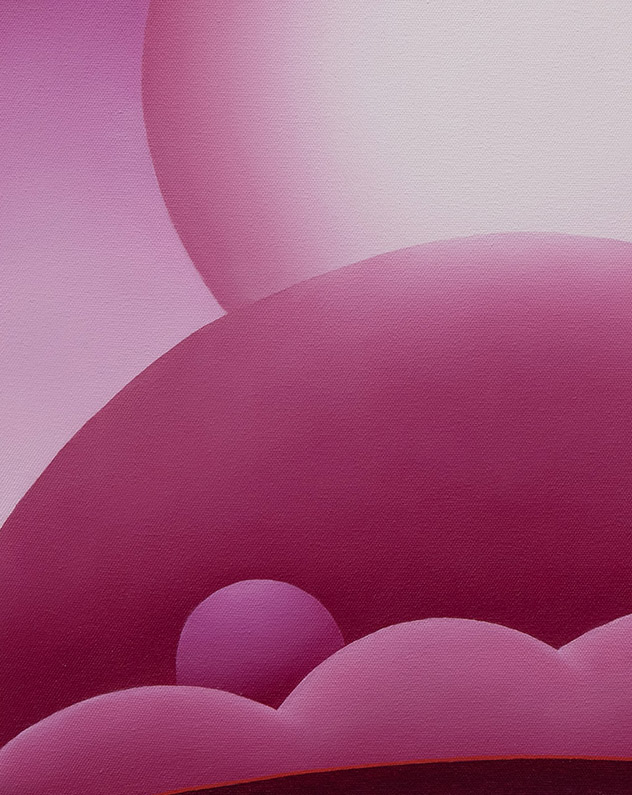

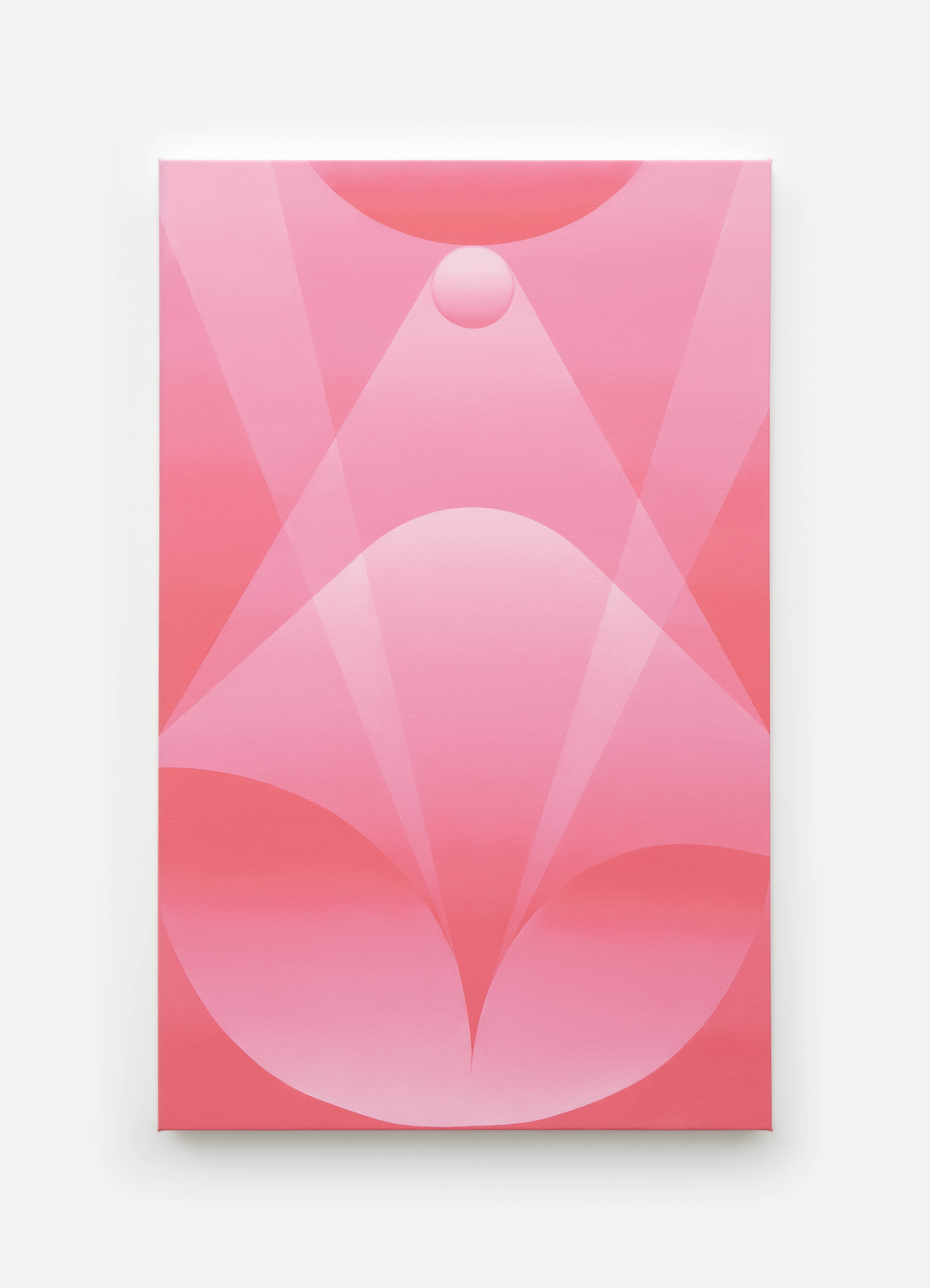
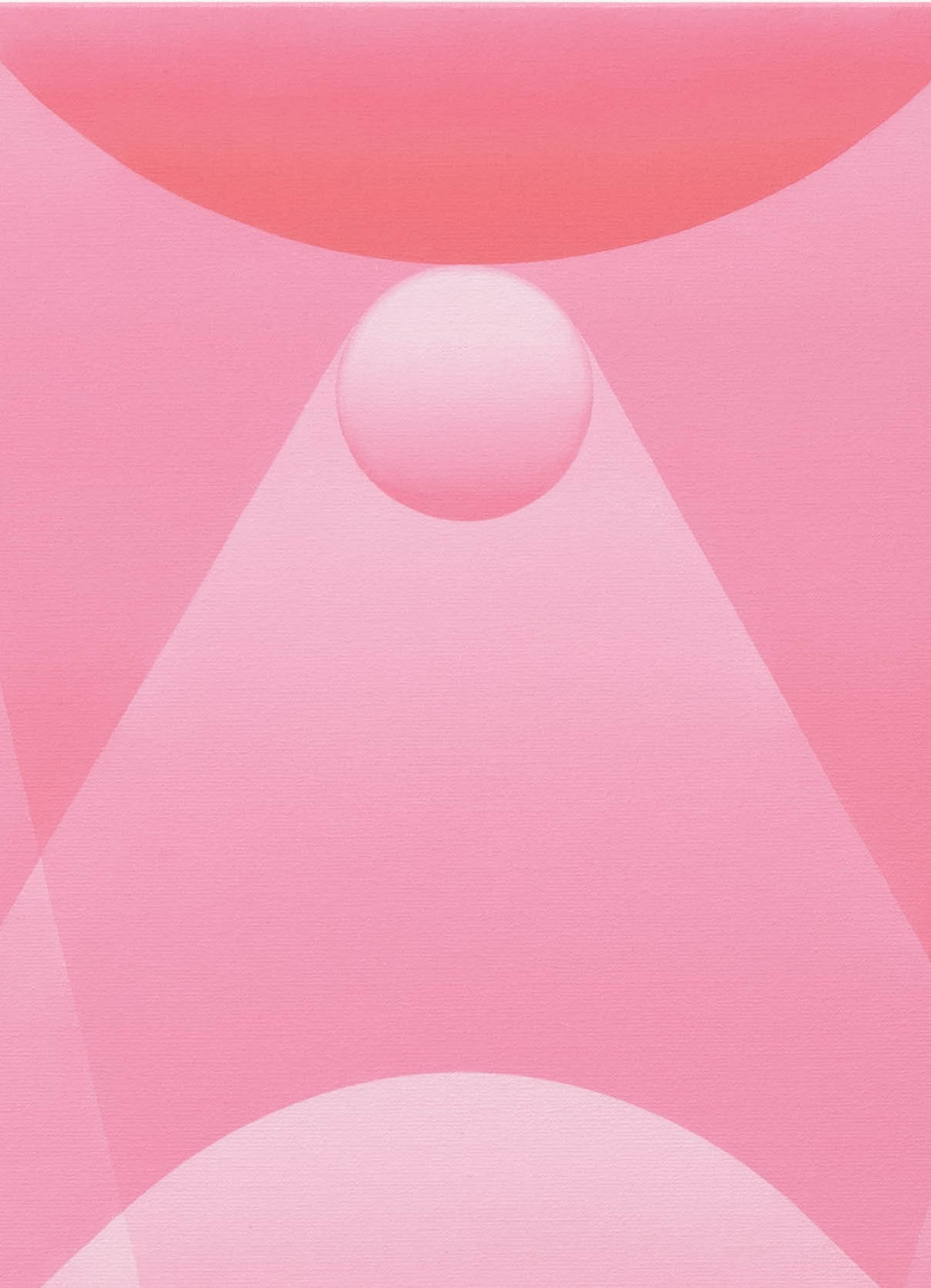
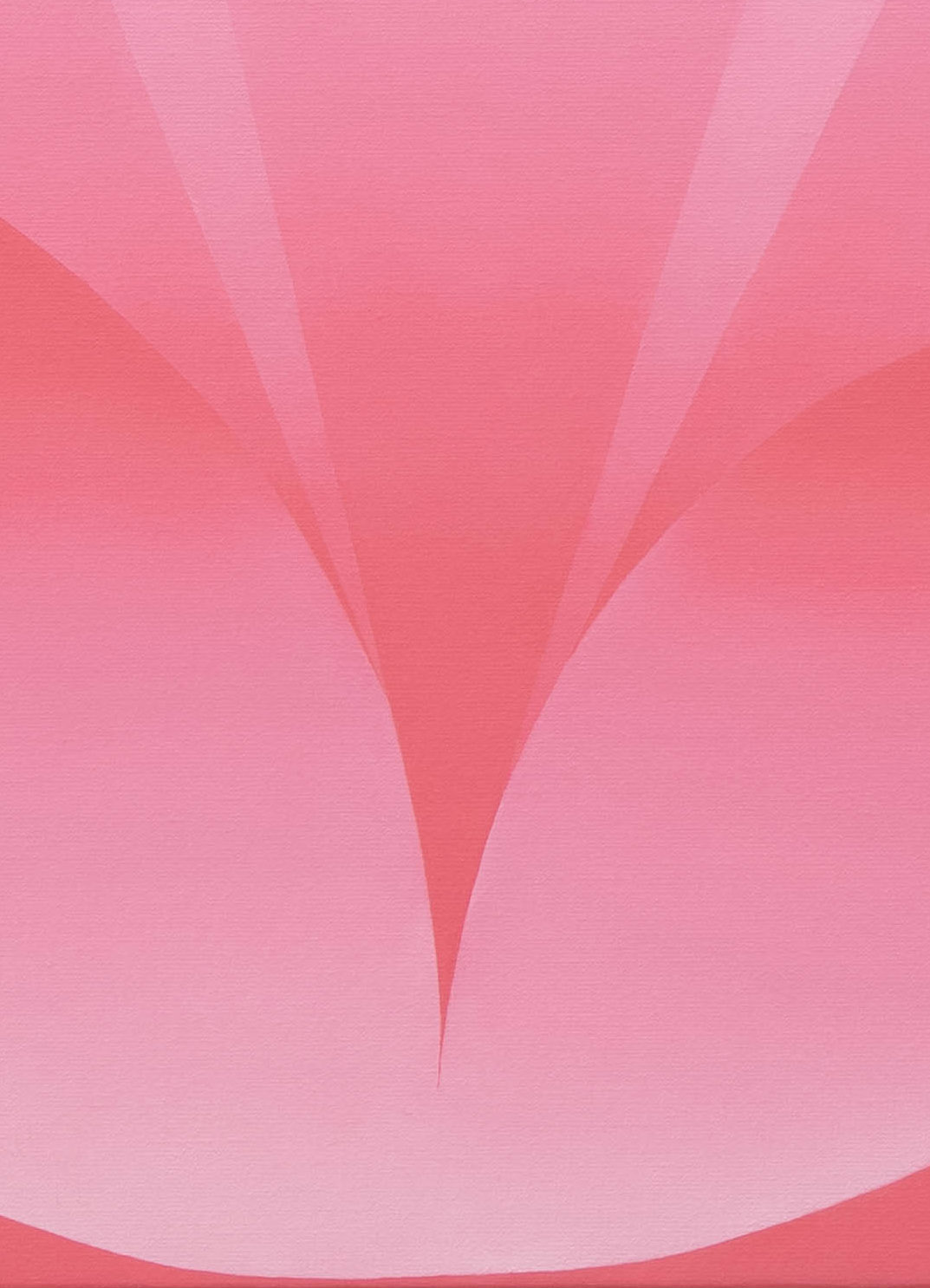
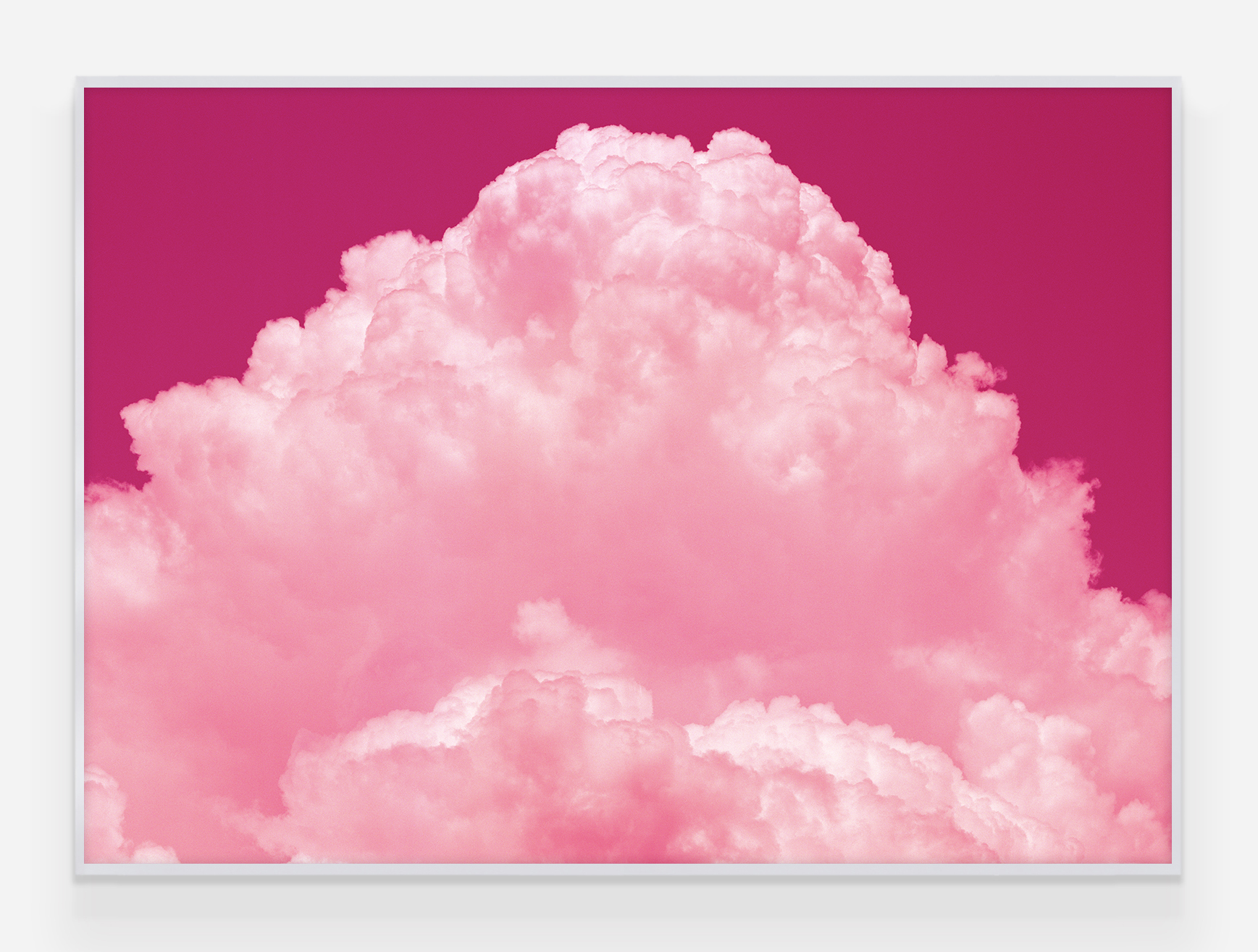
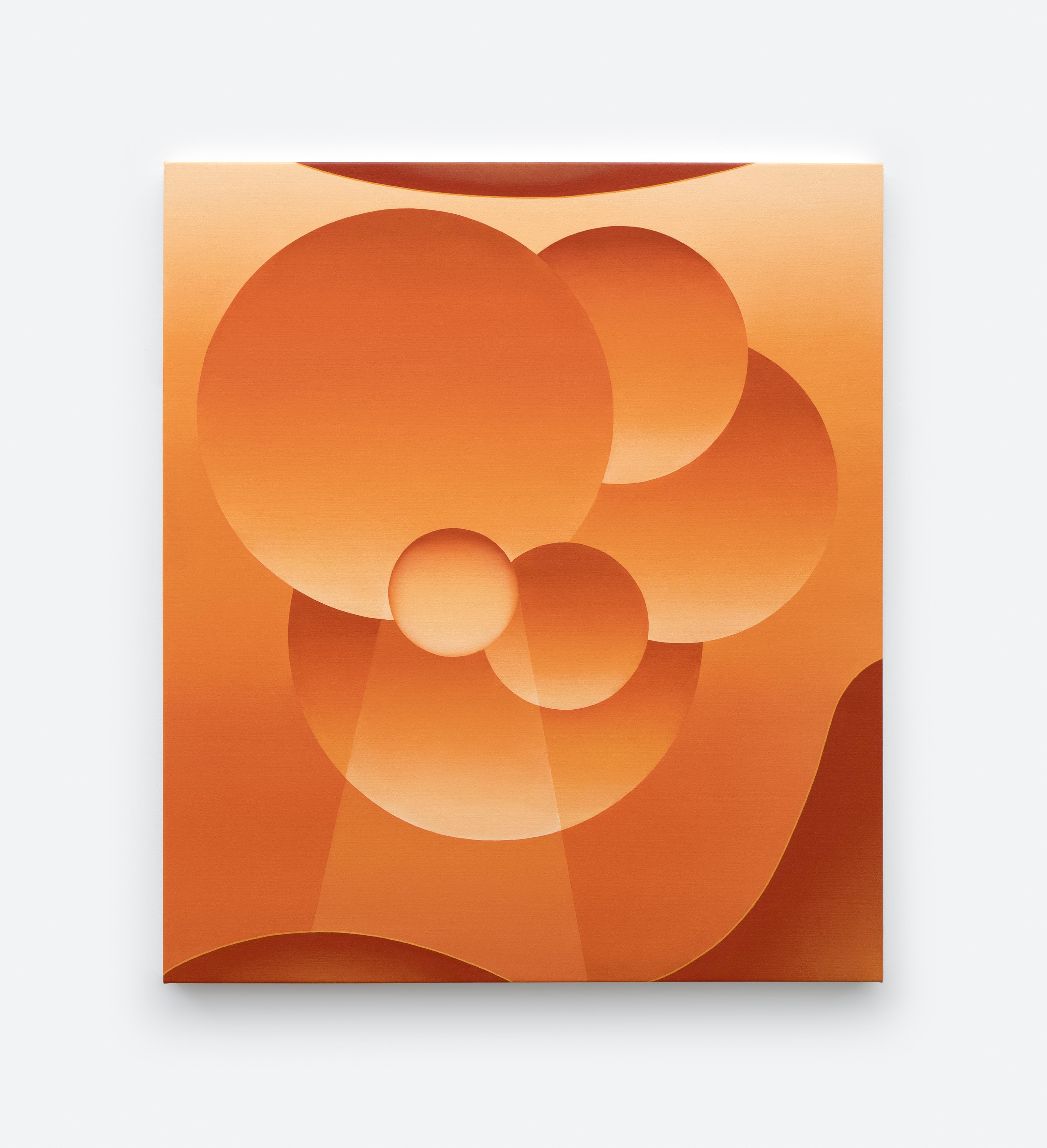
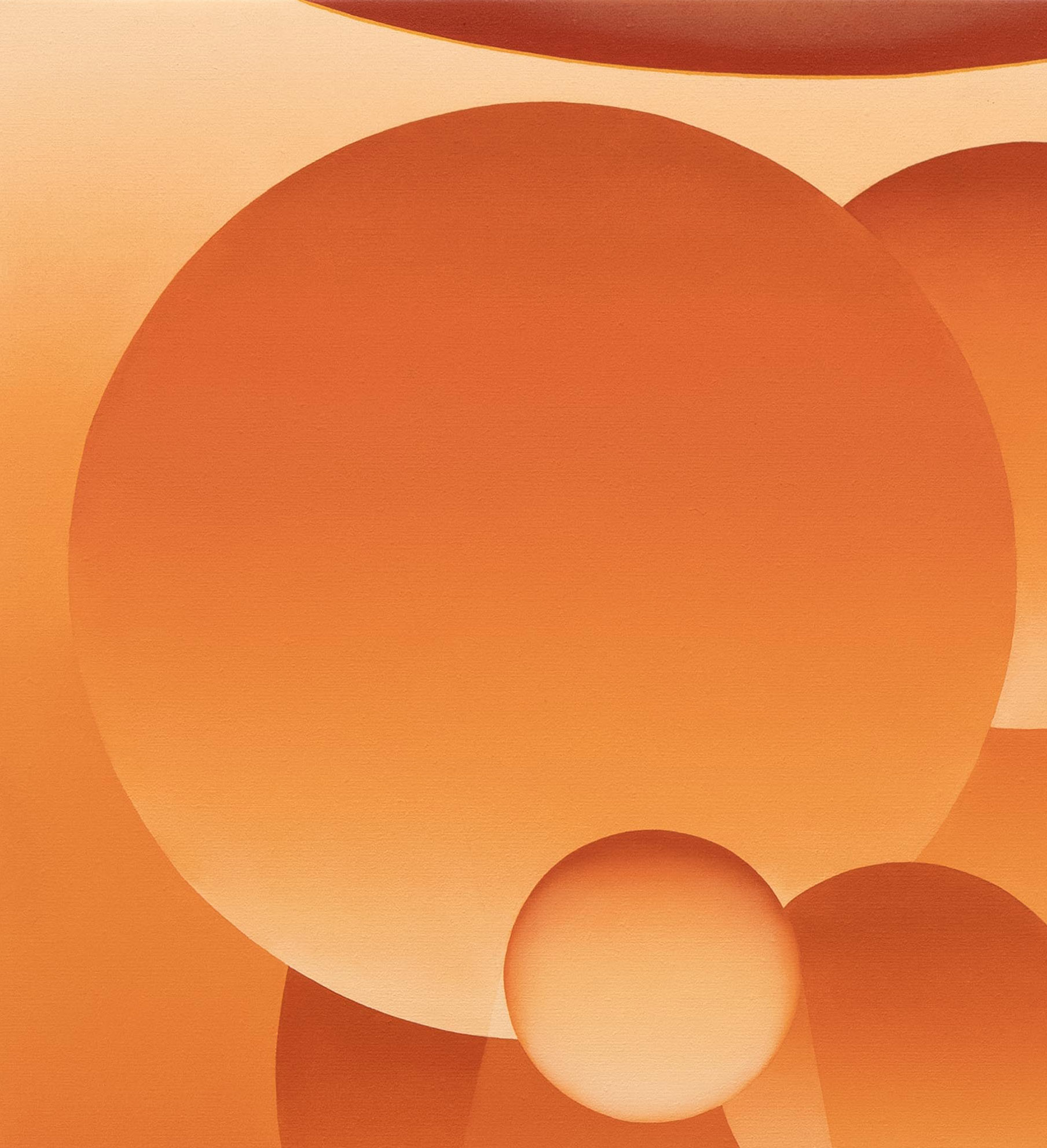
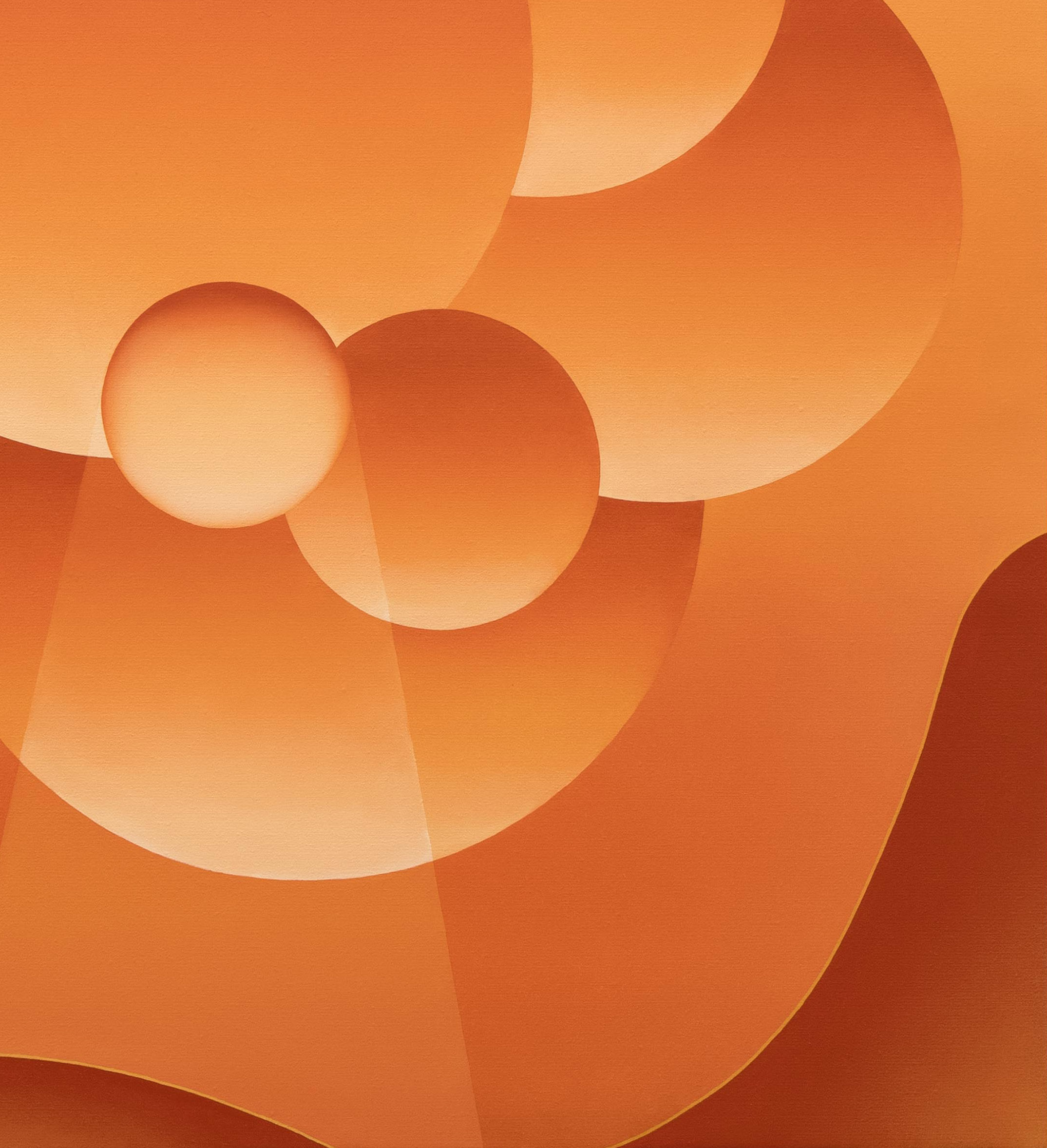
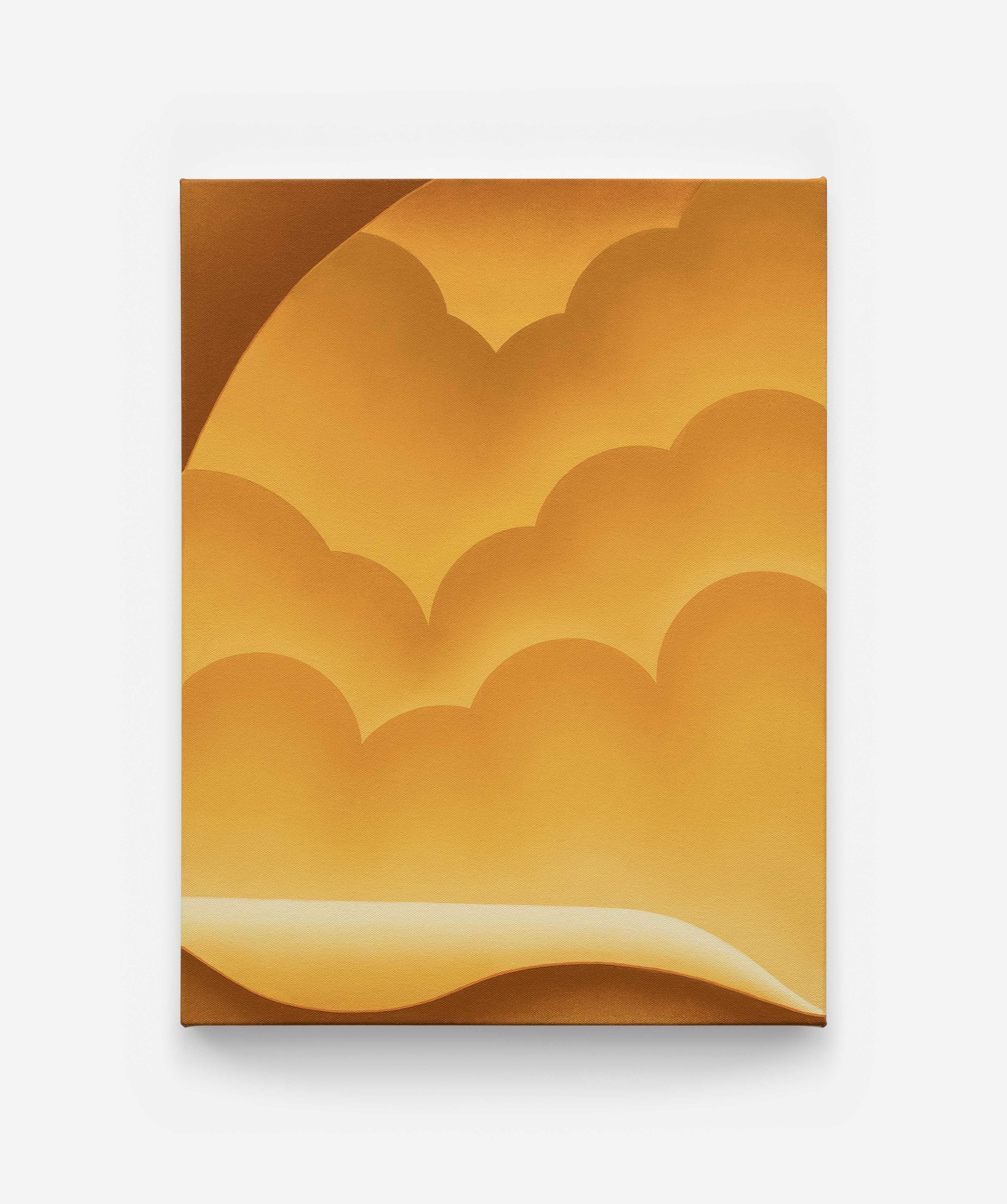
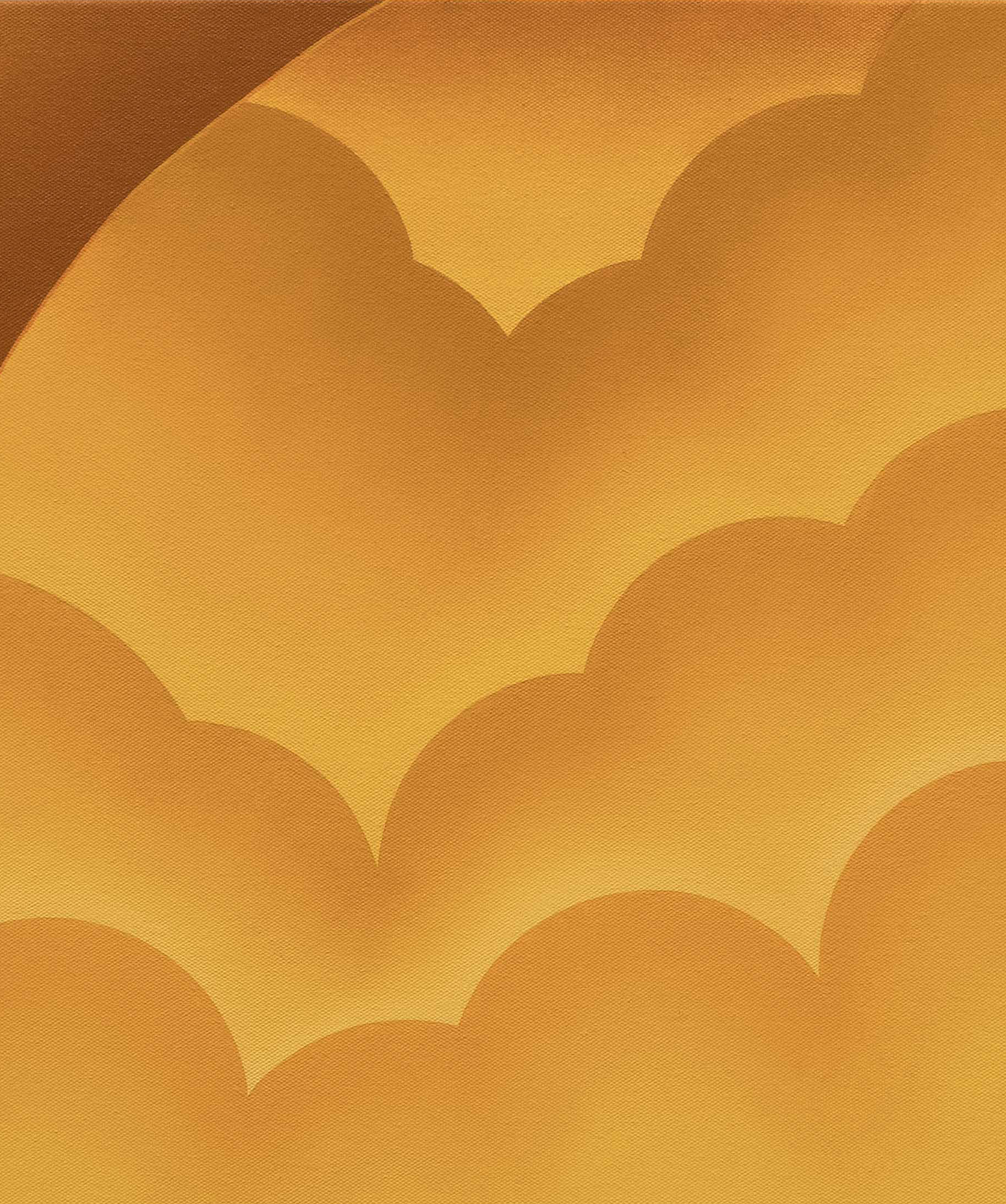
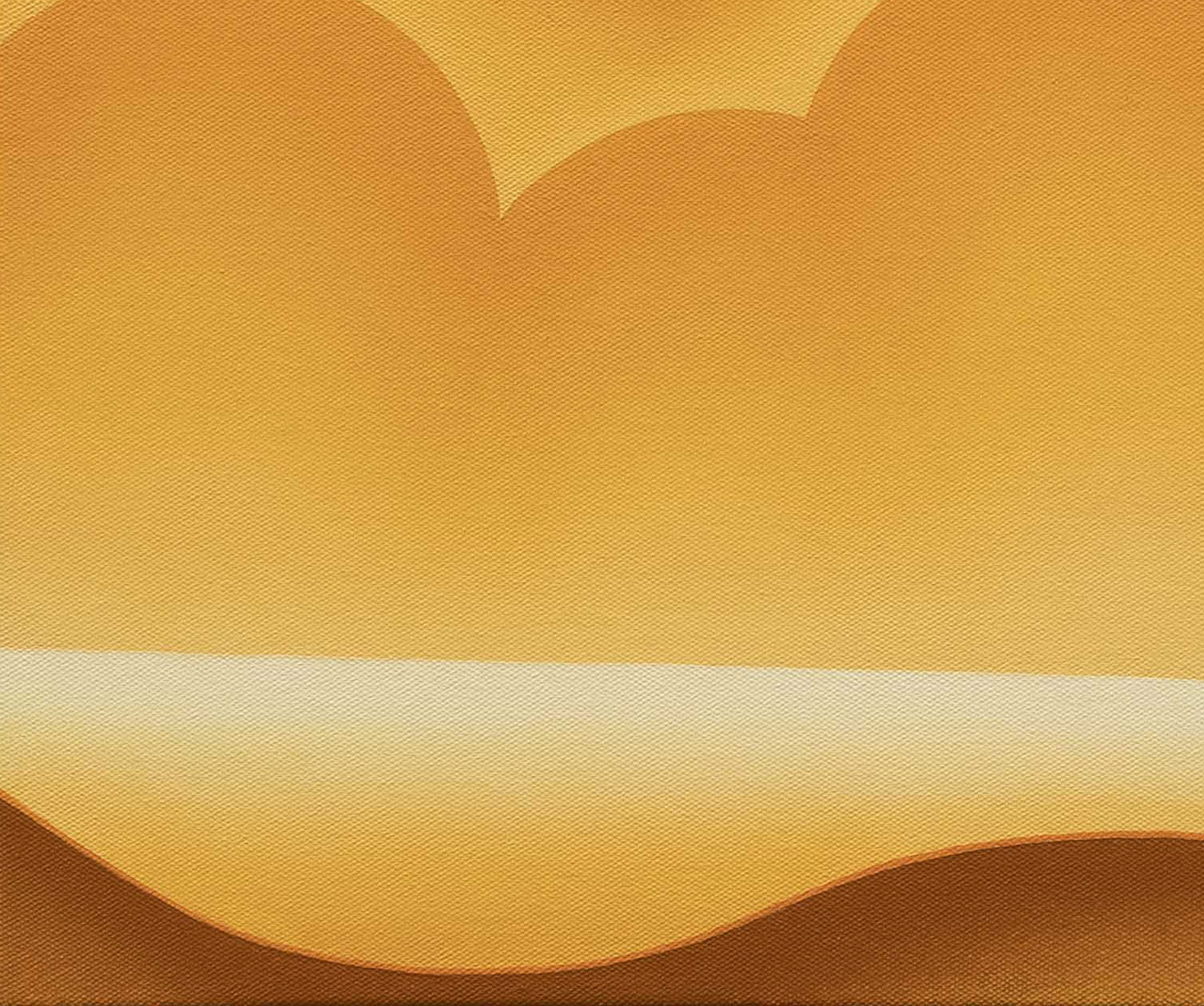
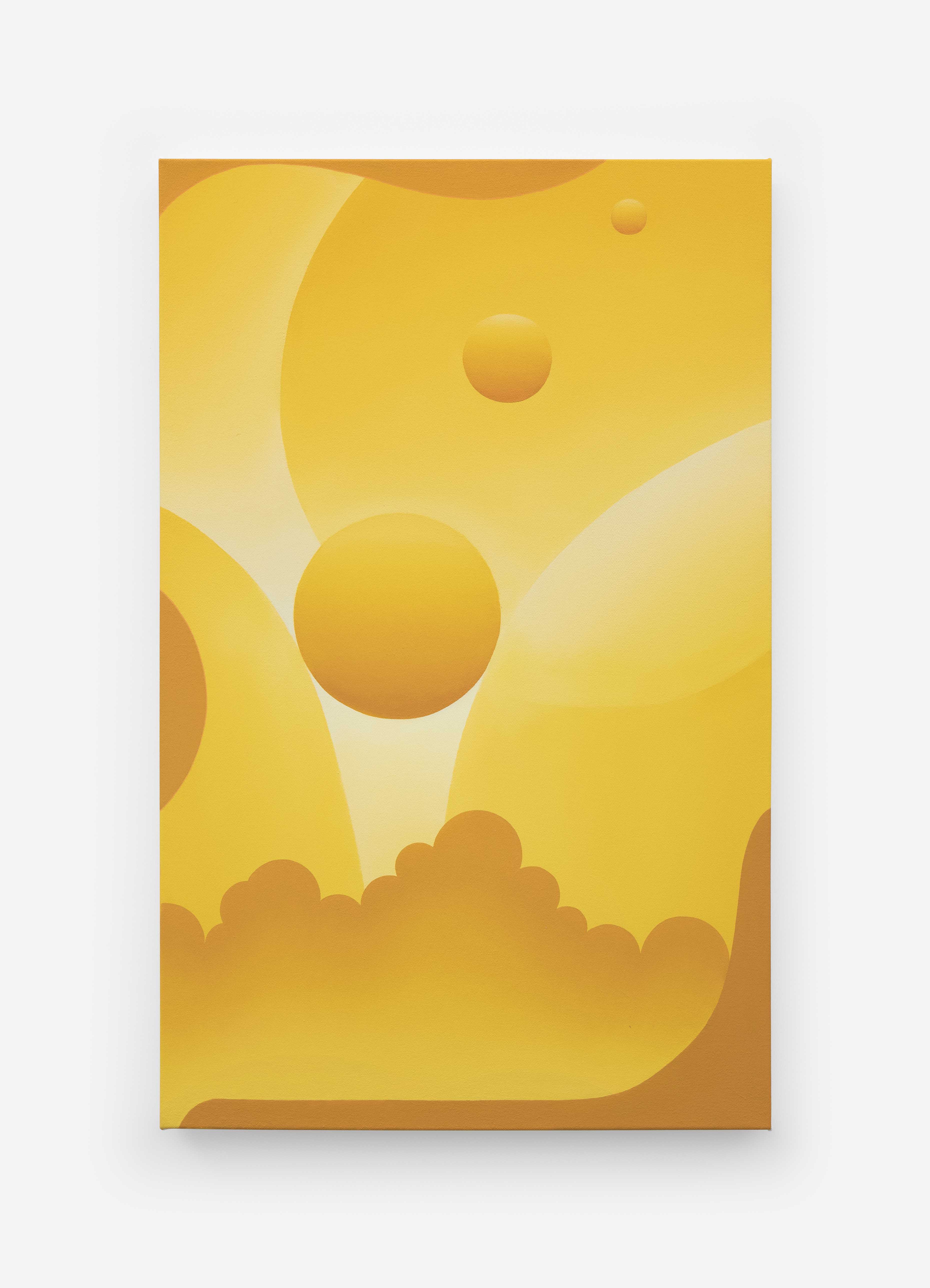


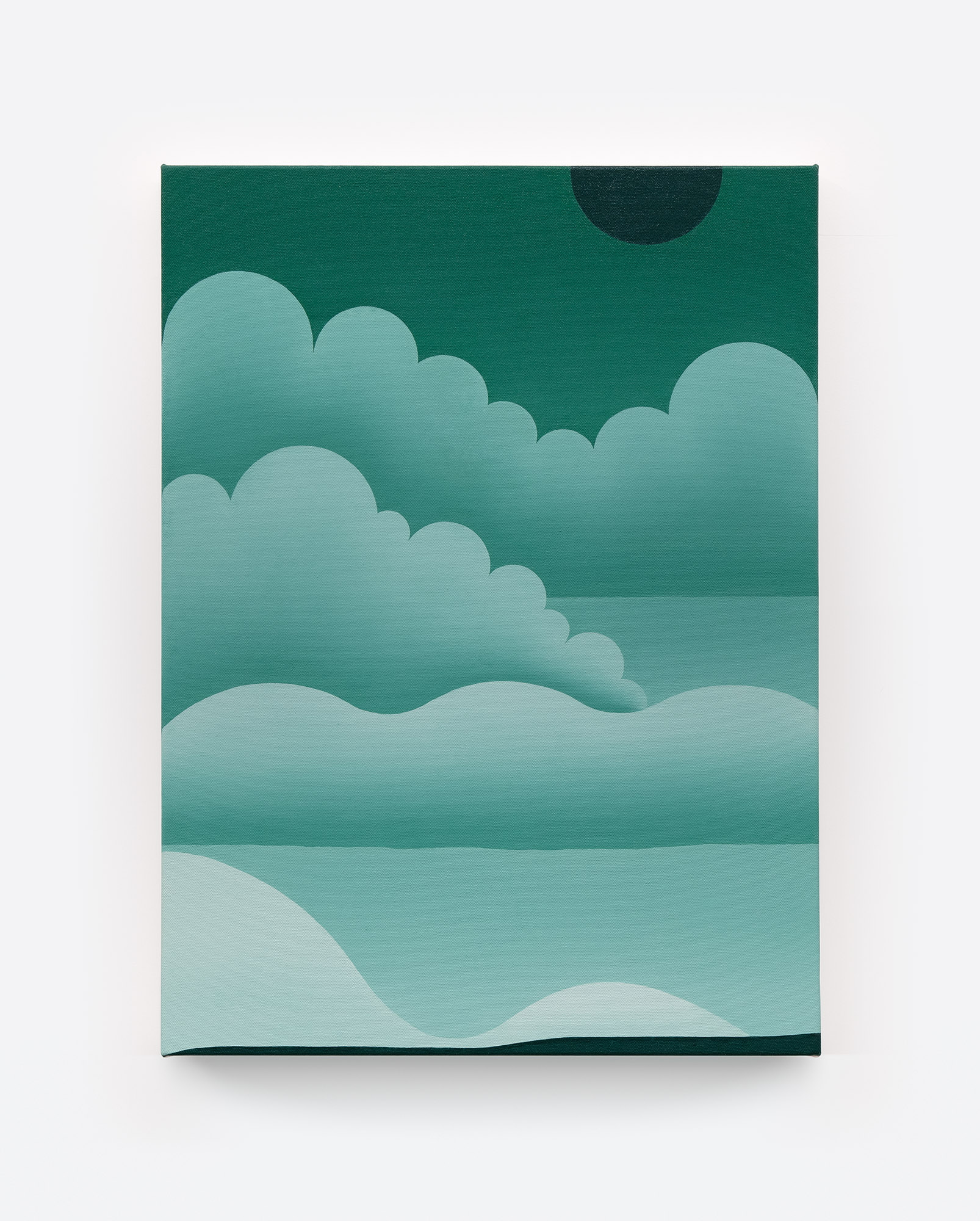

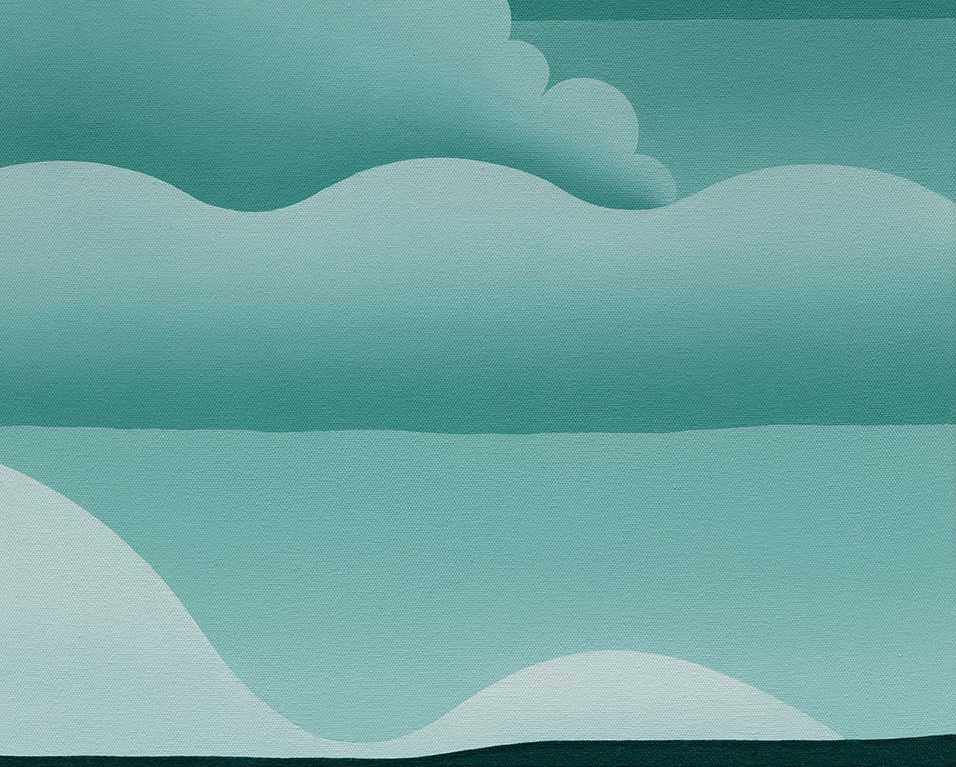

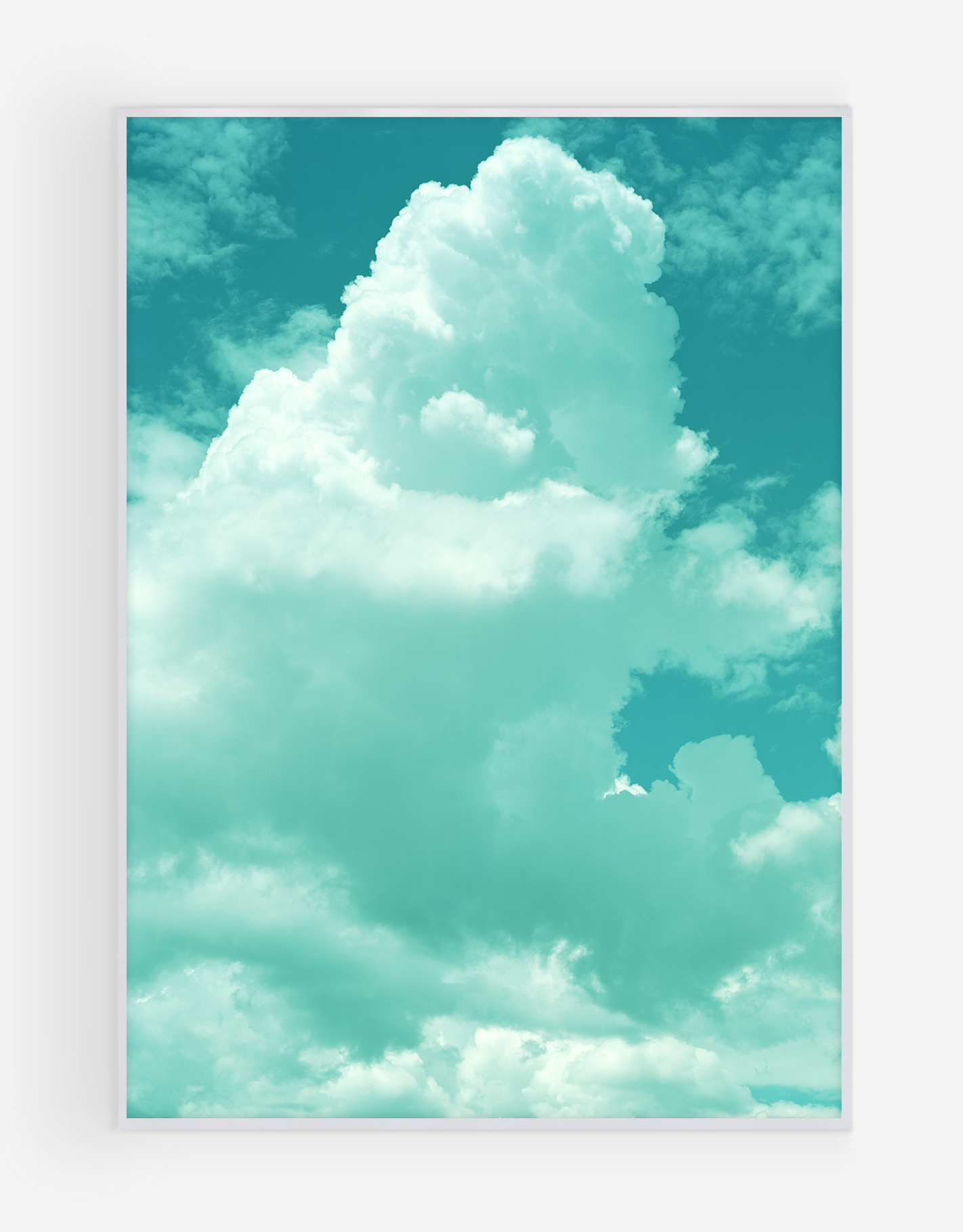


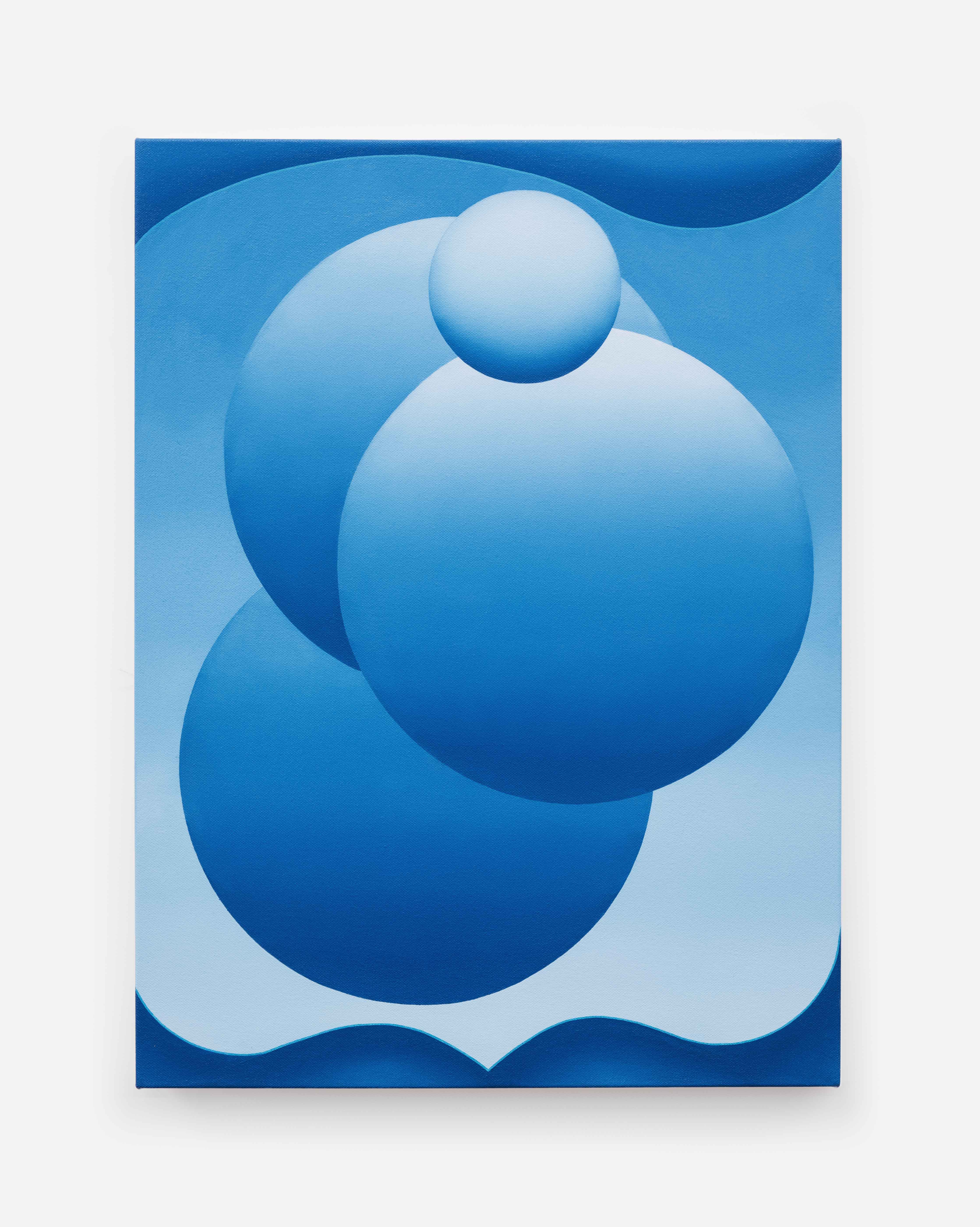
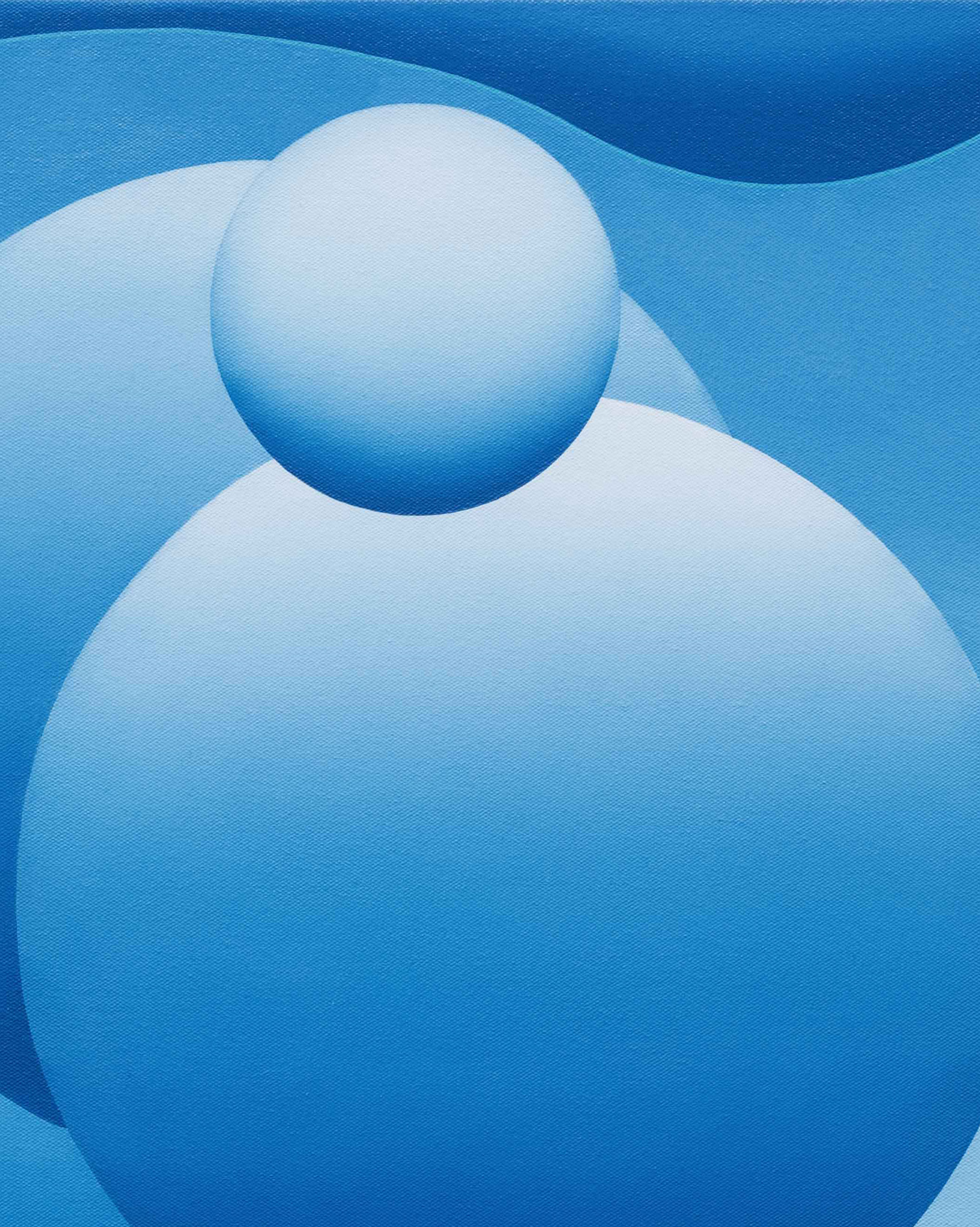
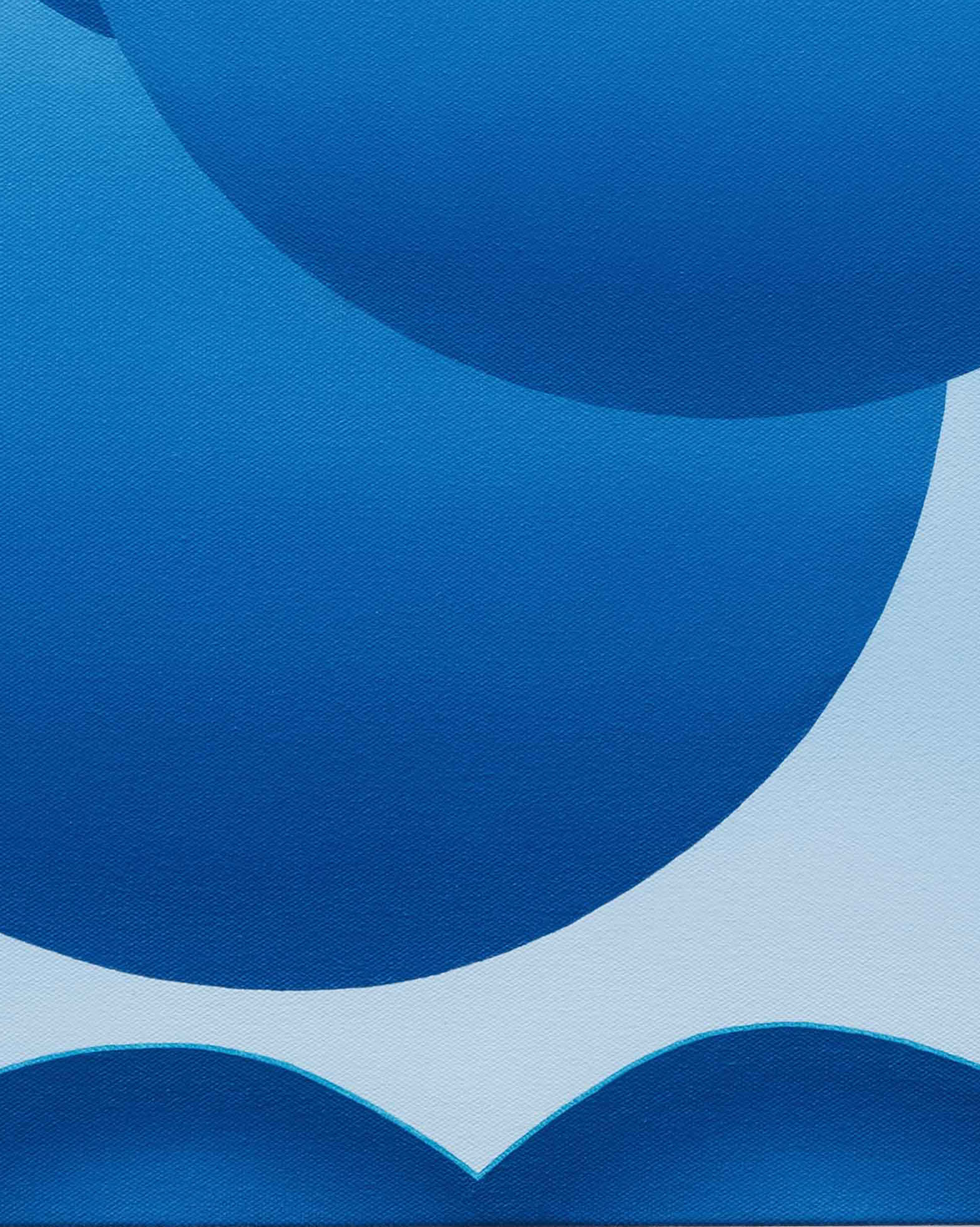
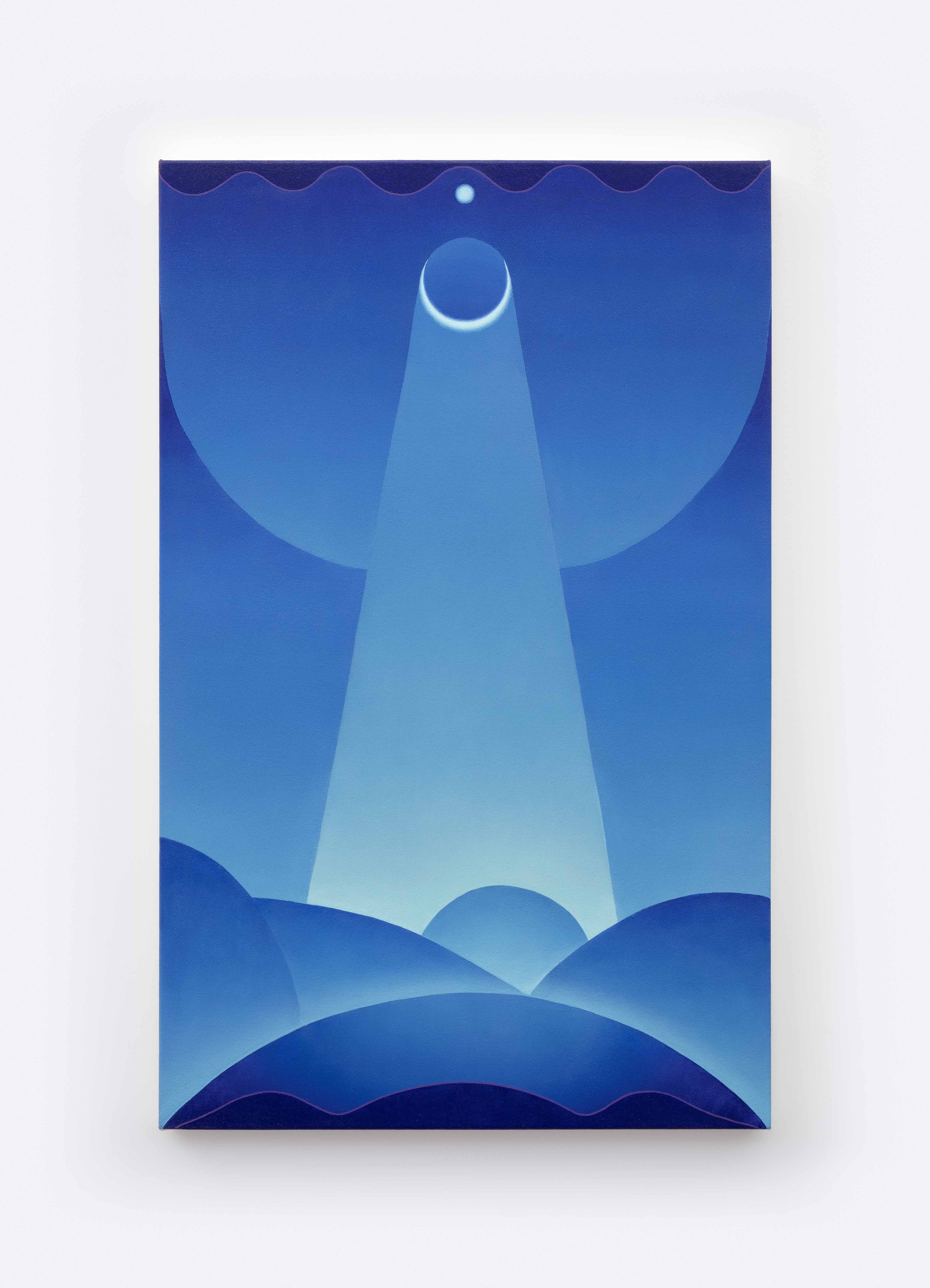
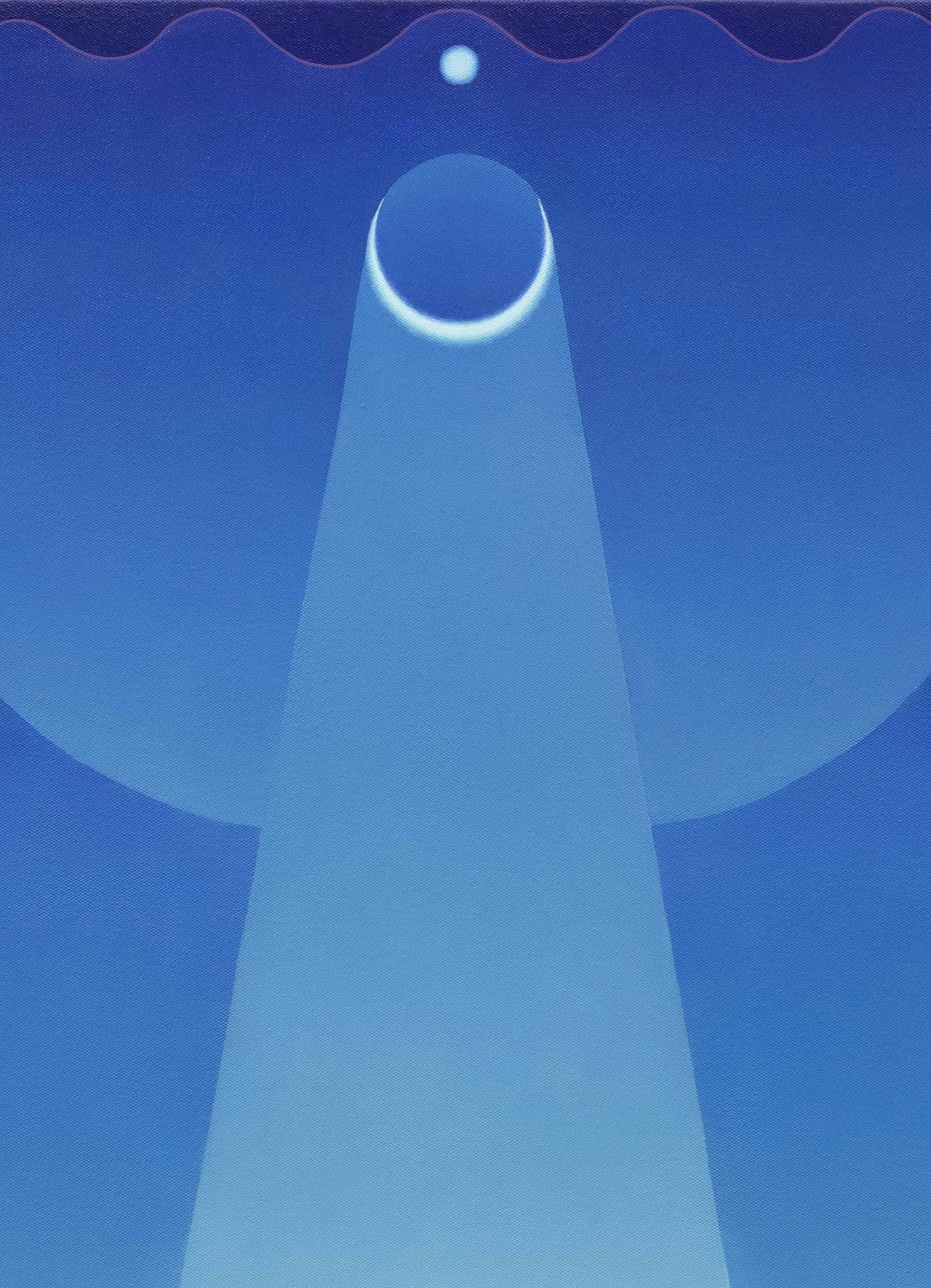
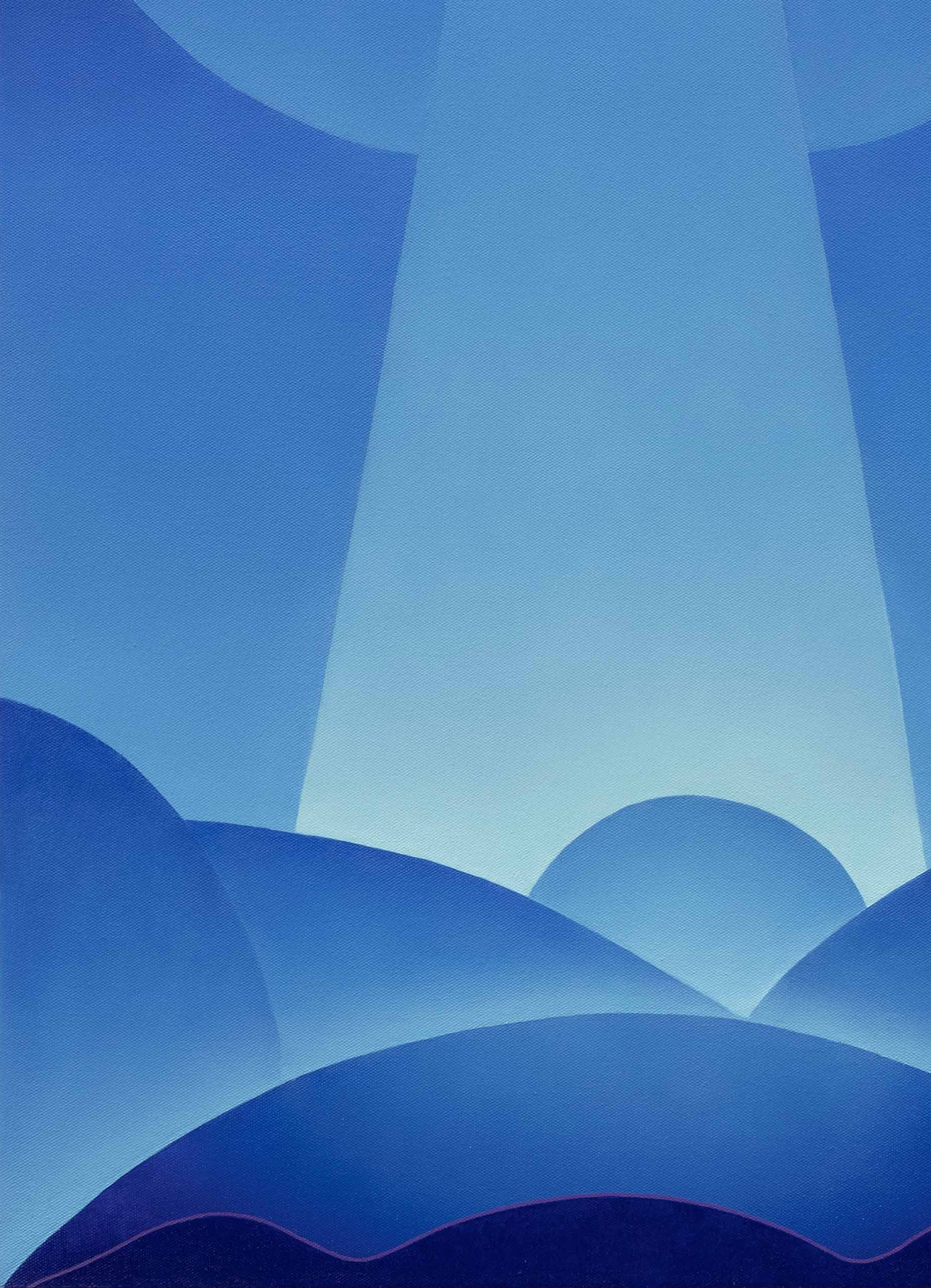
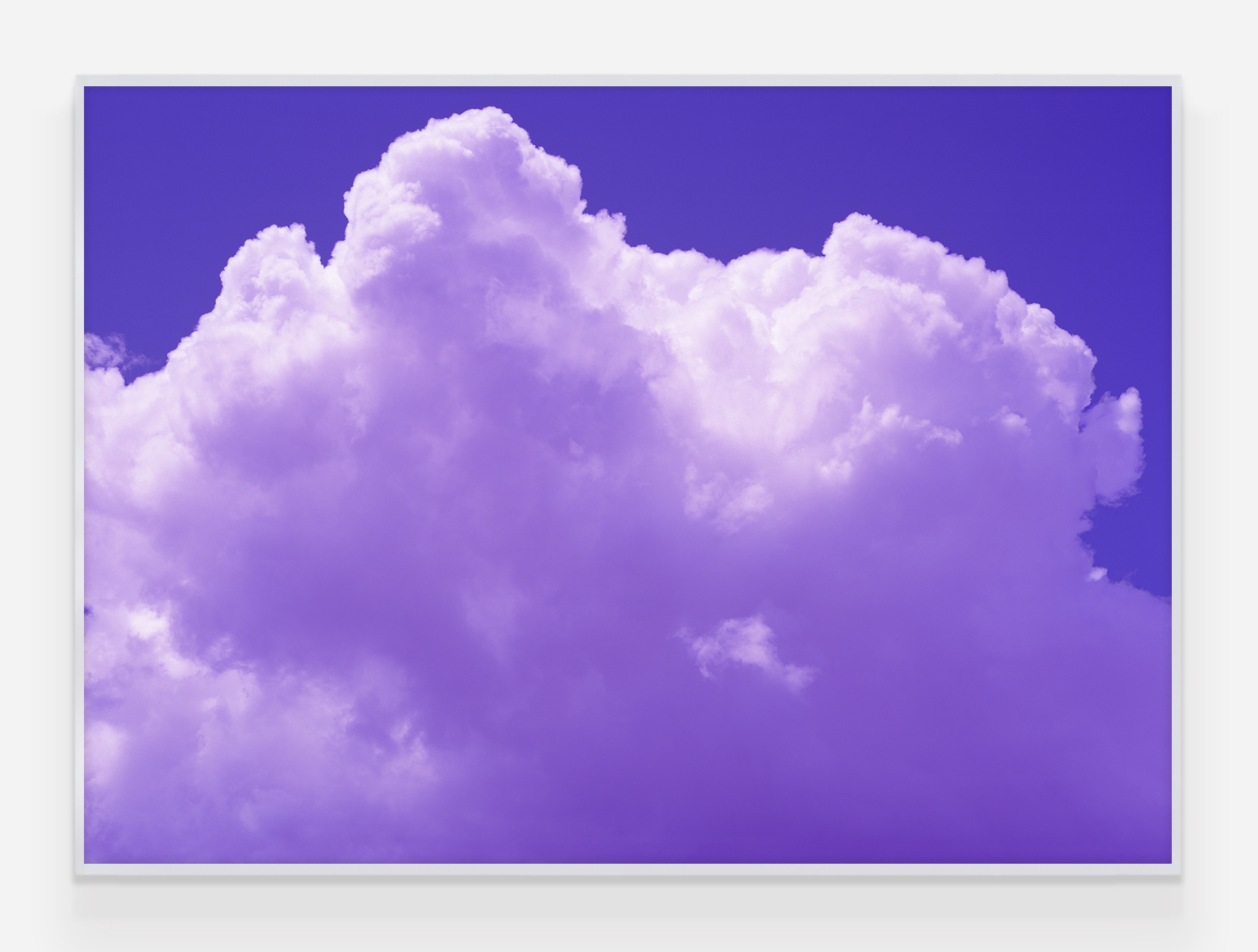
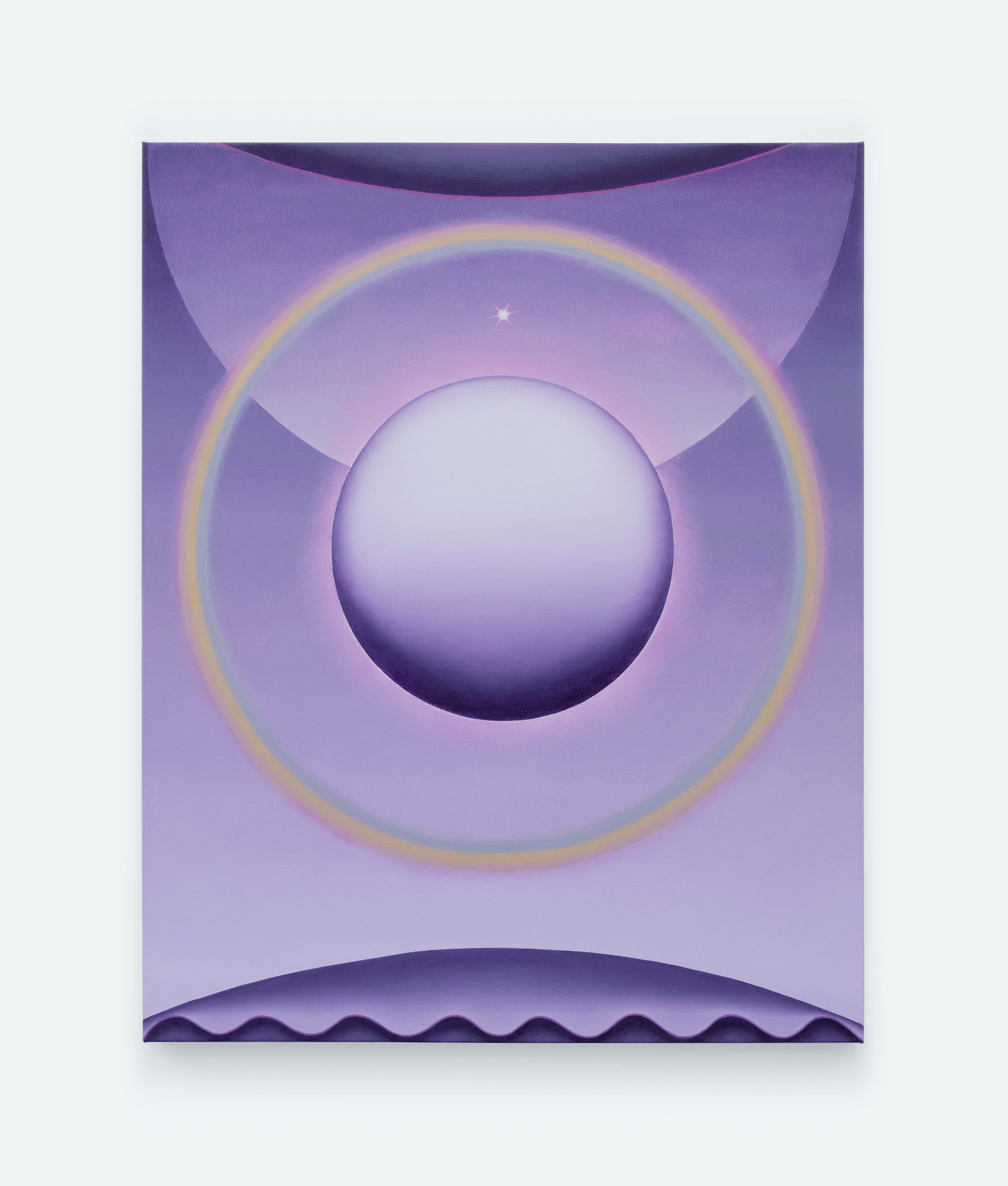
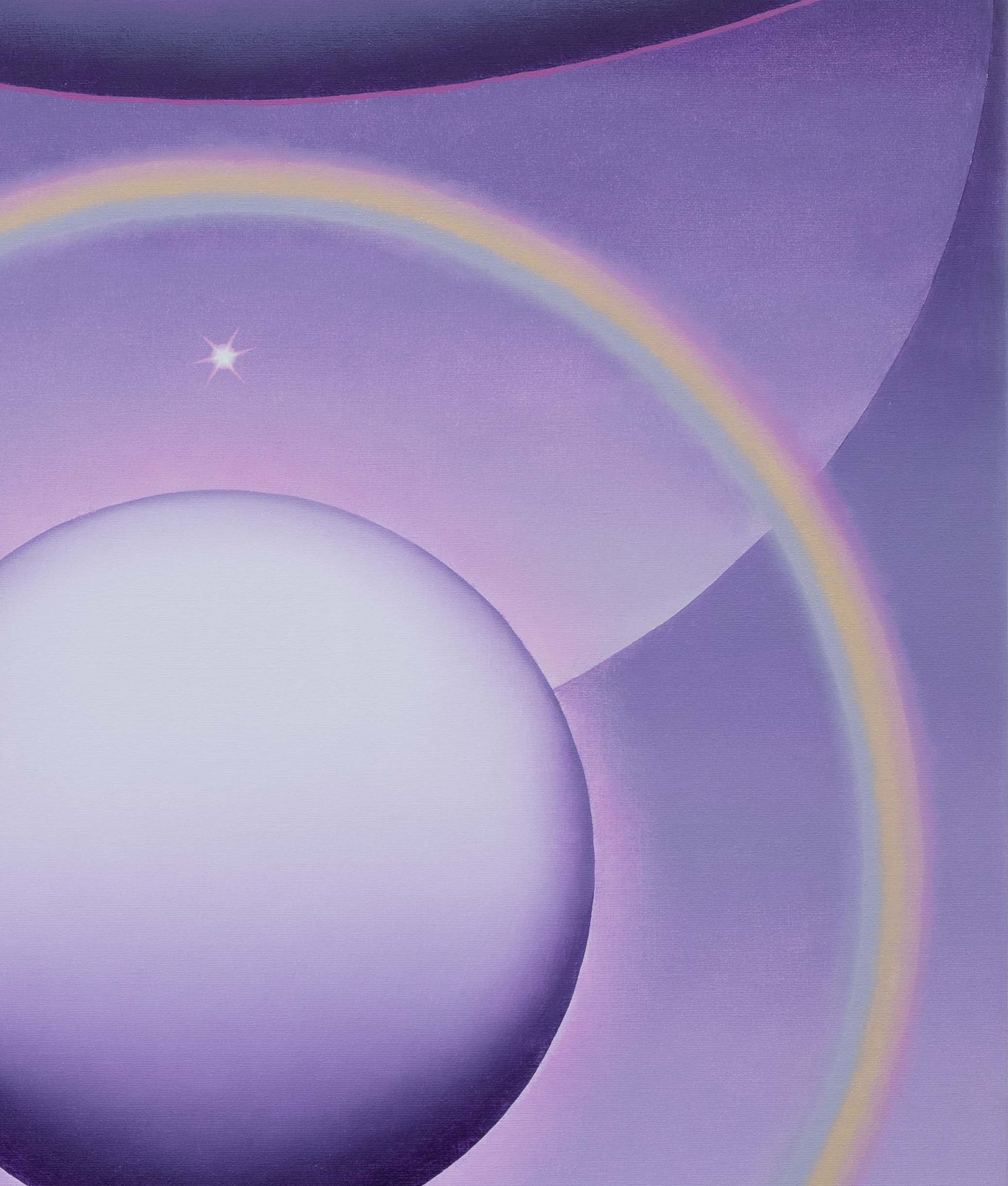
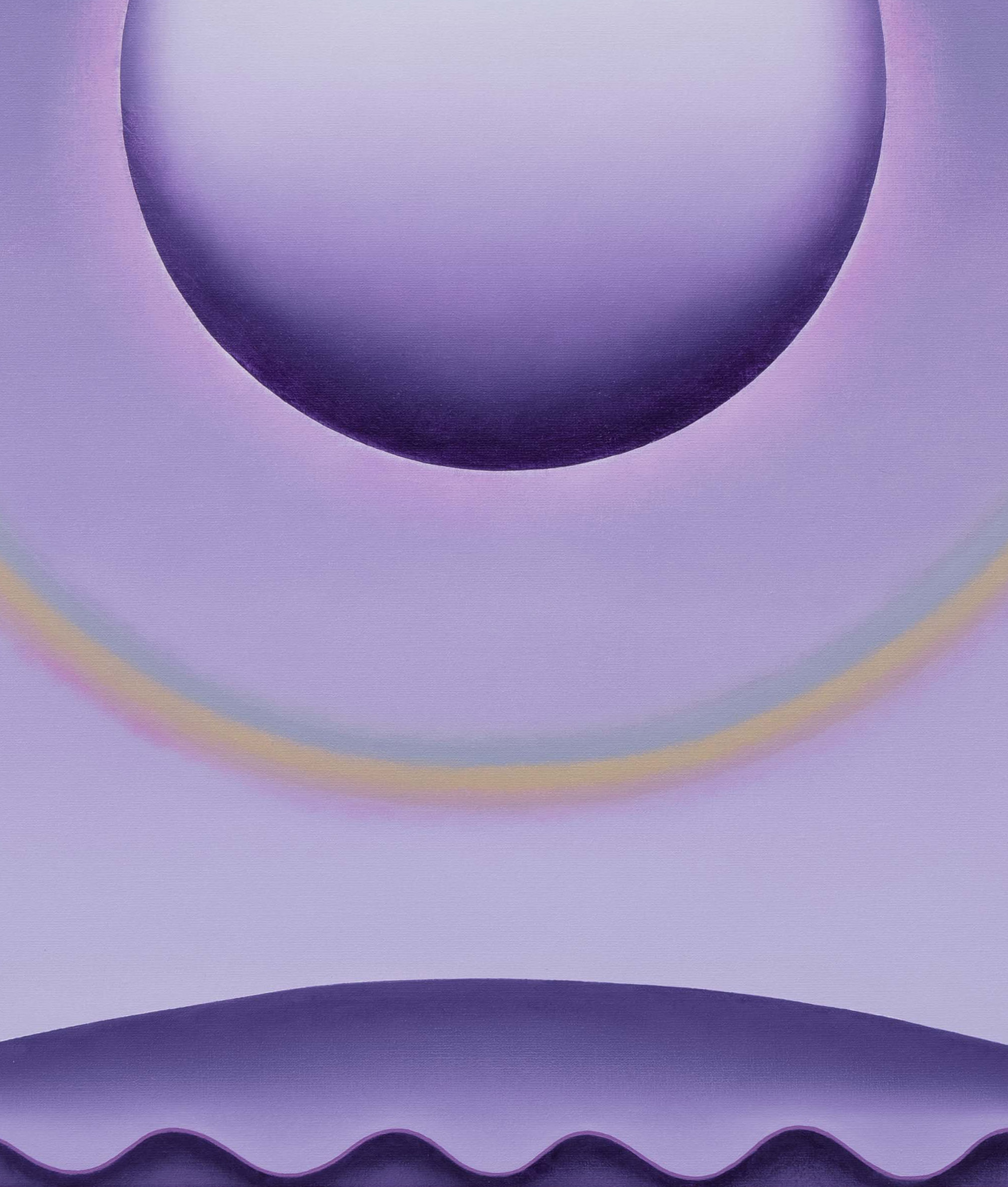
INSTALLATION
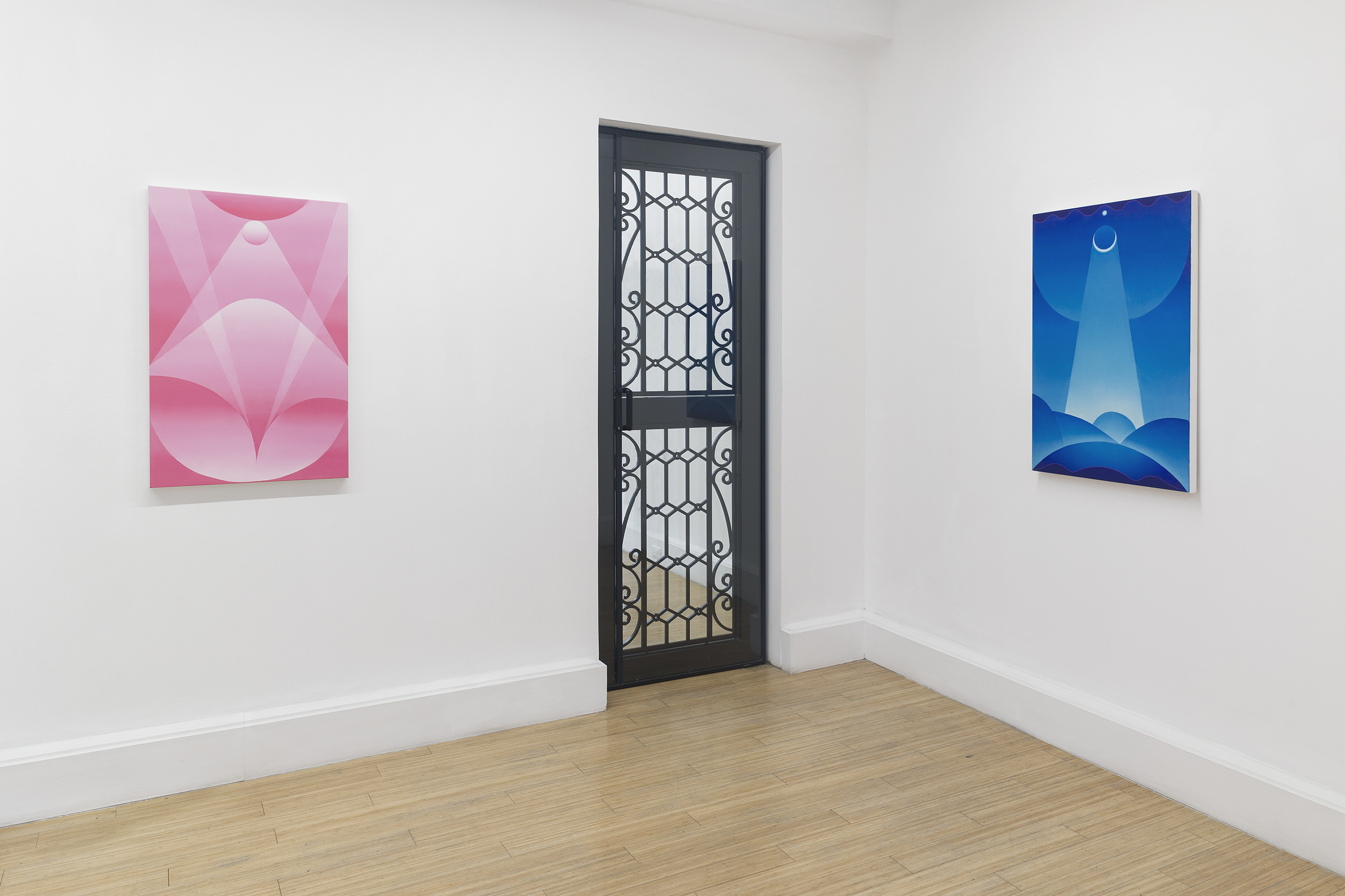
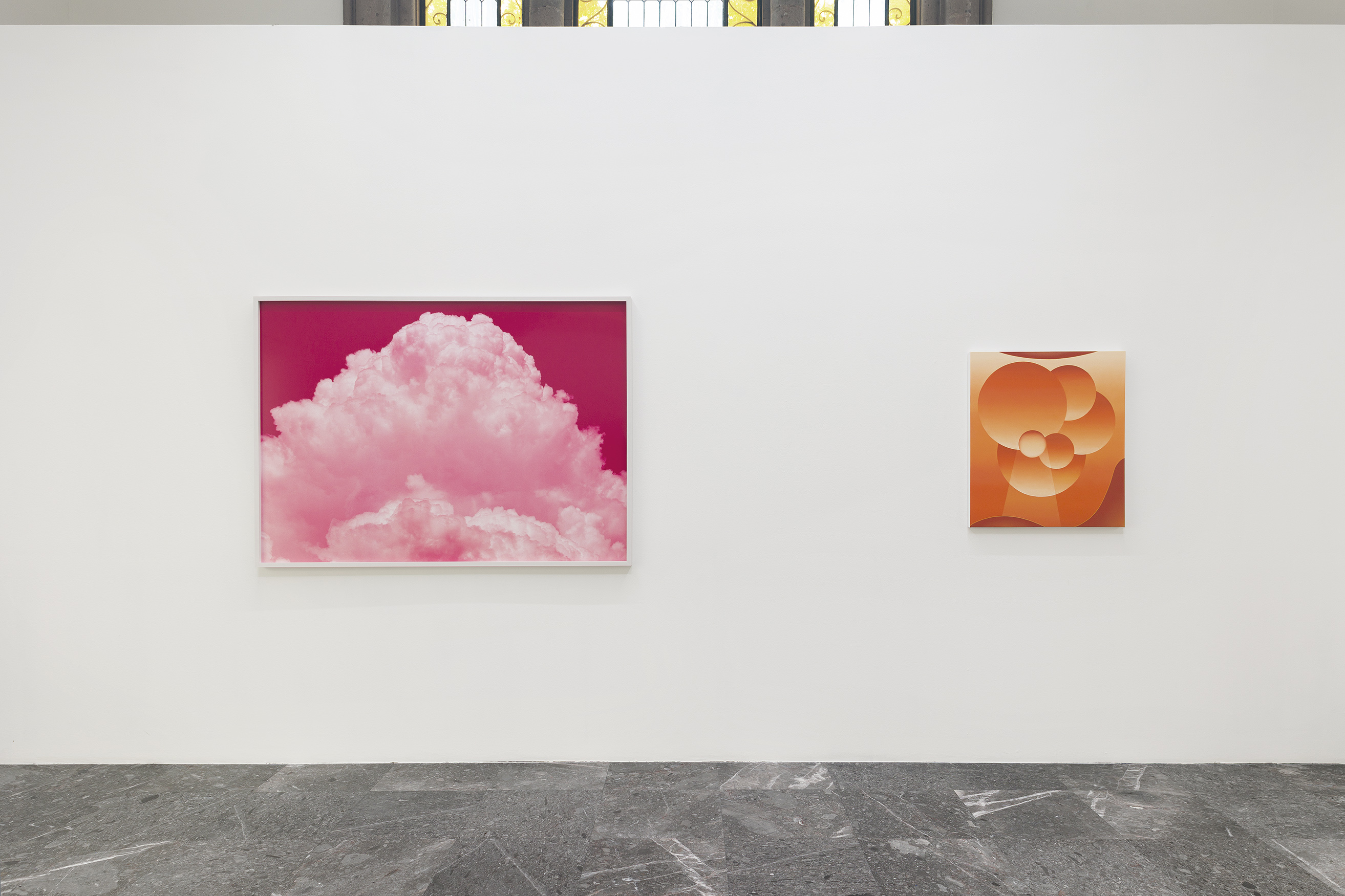

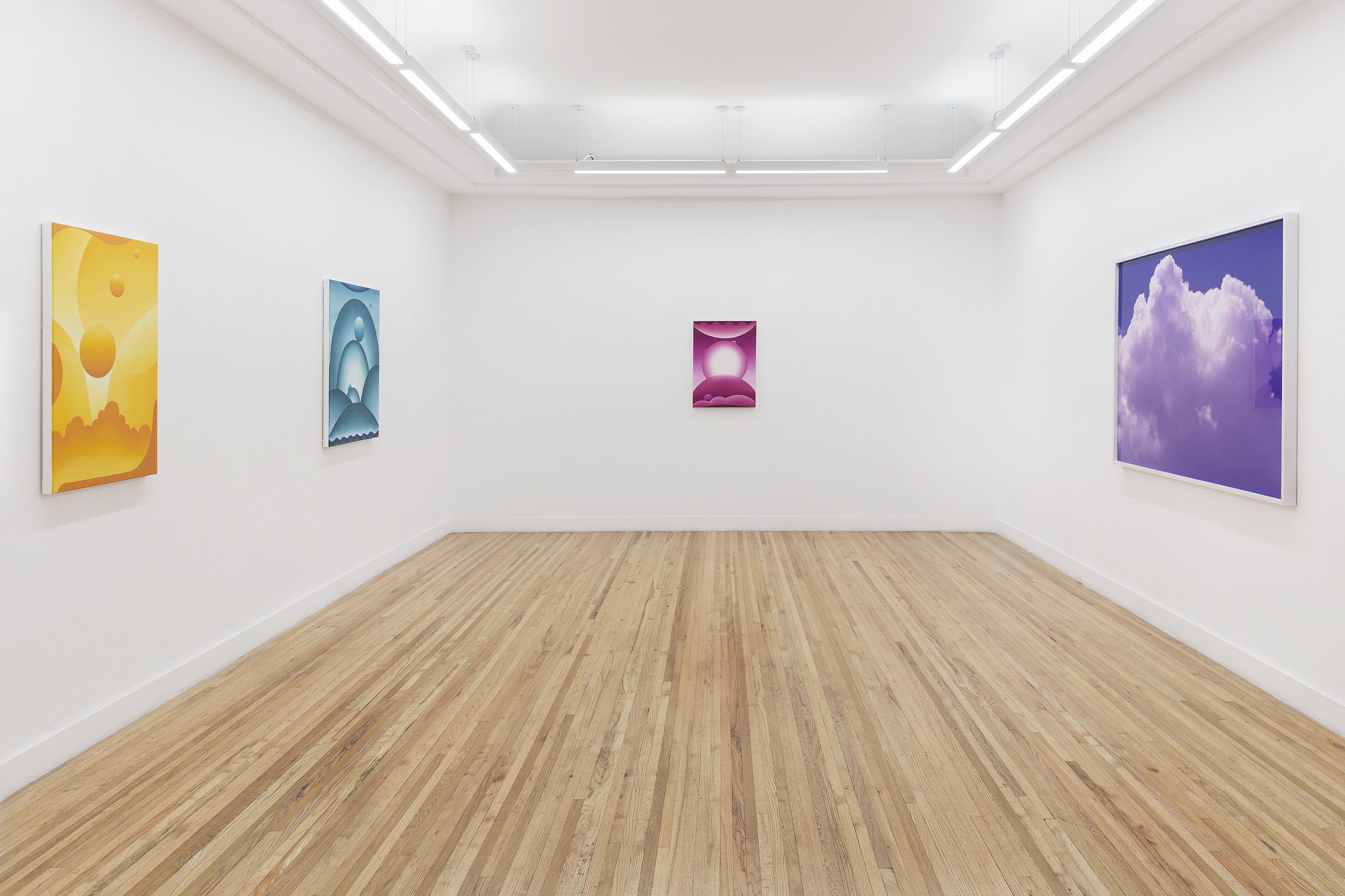
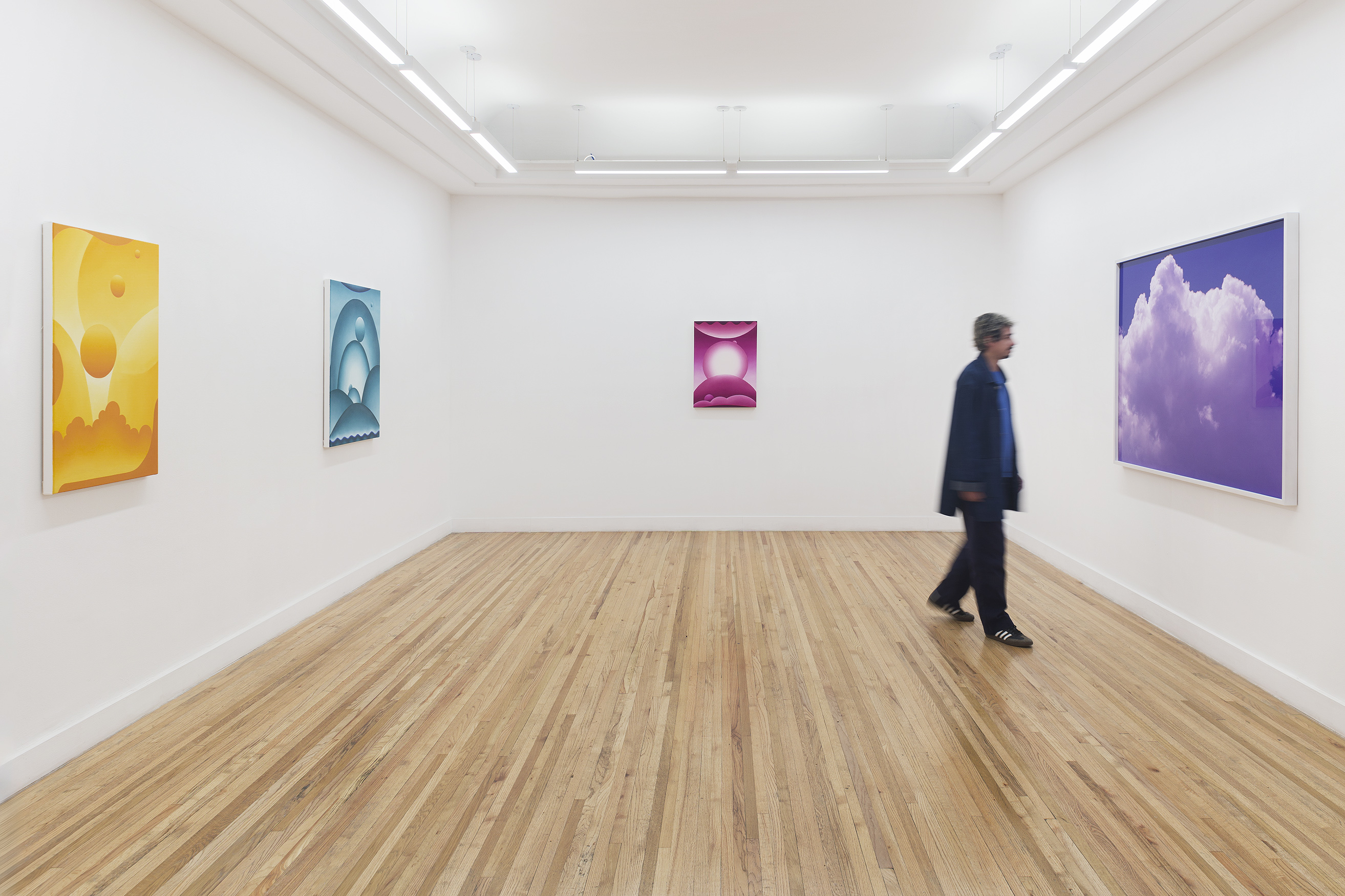
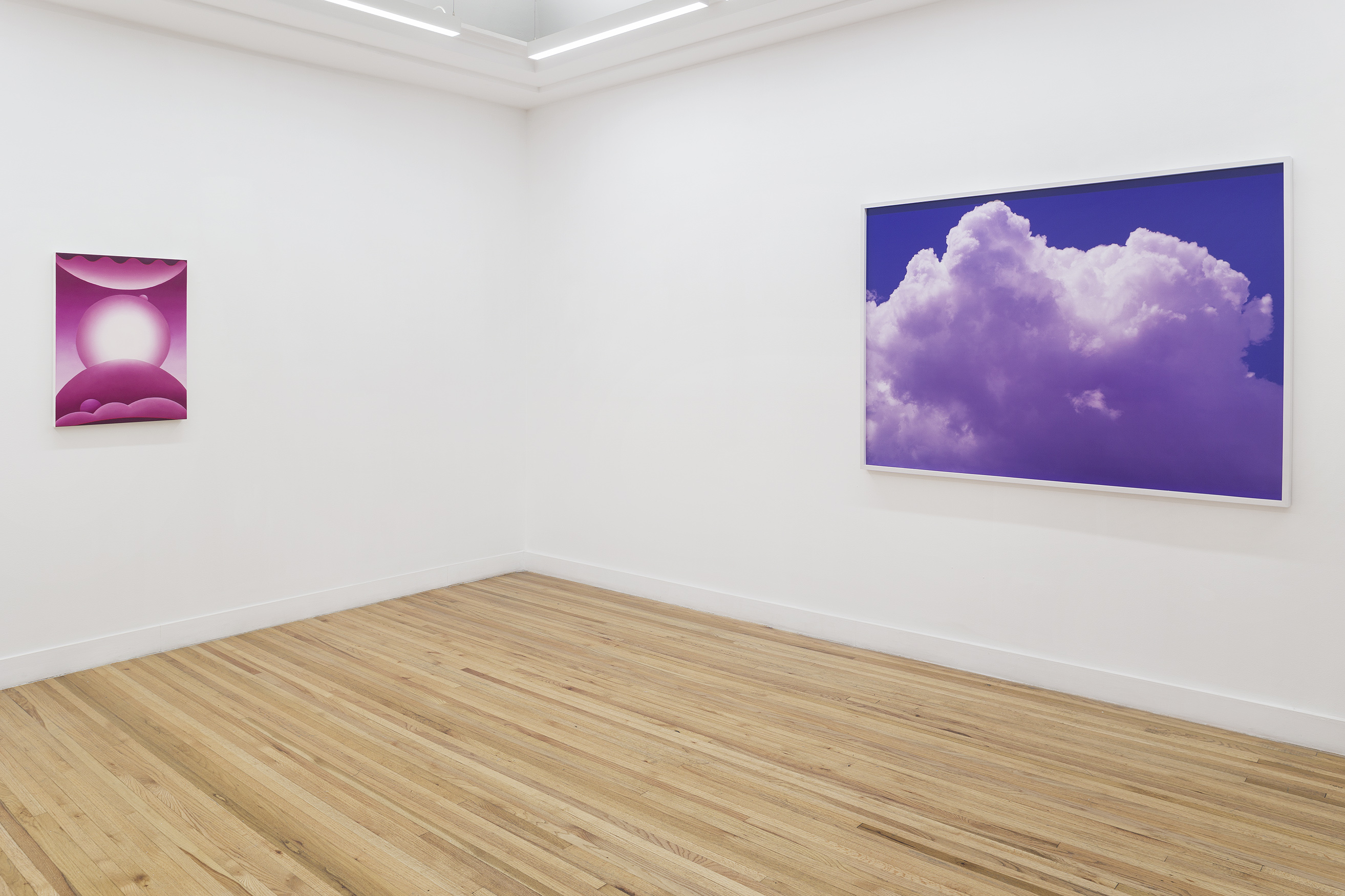
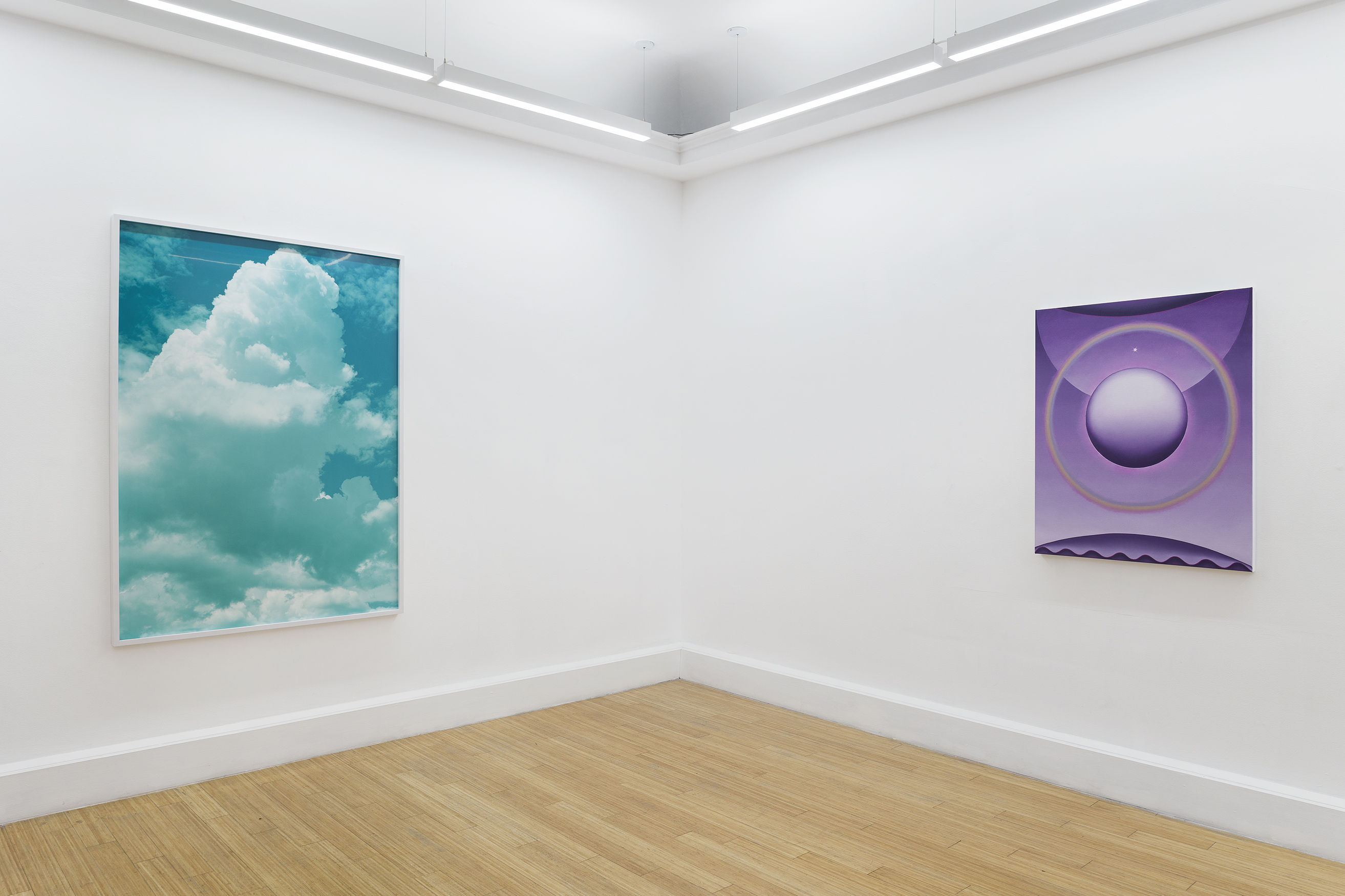
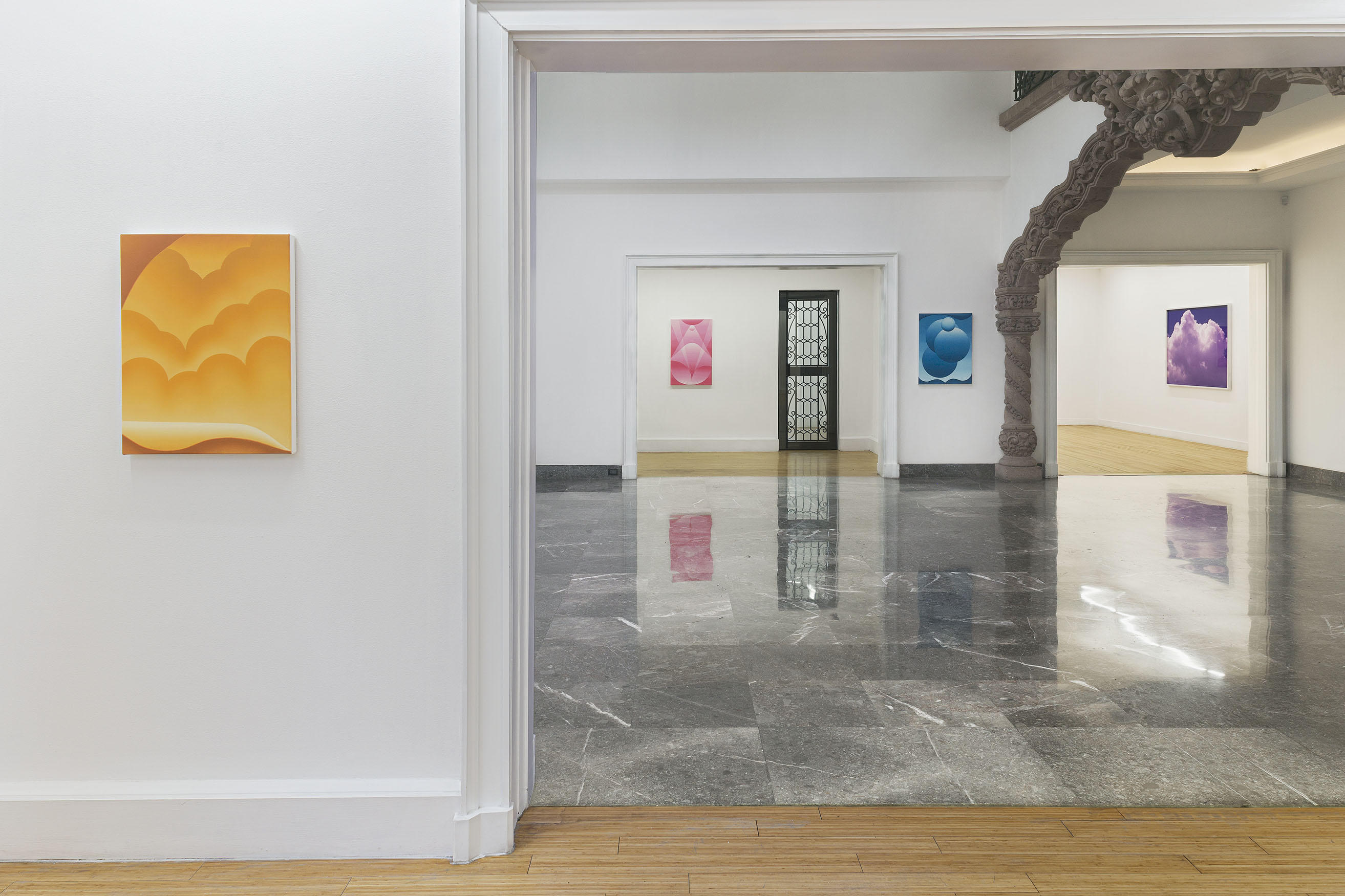
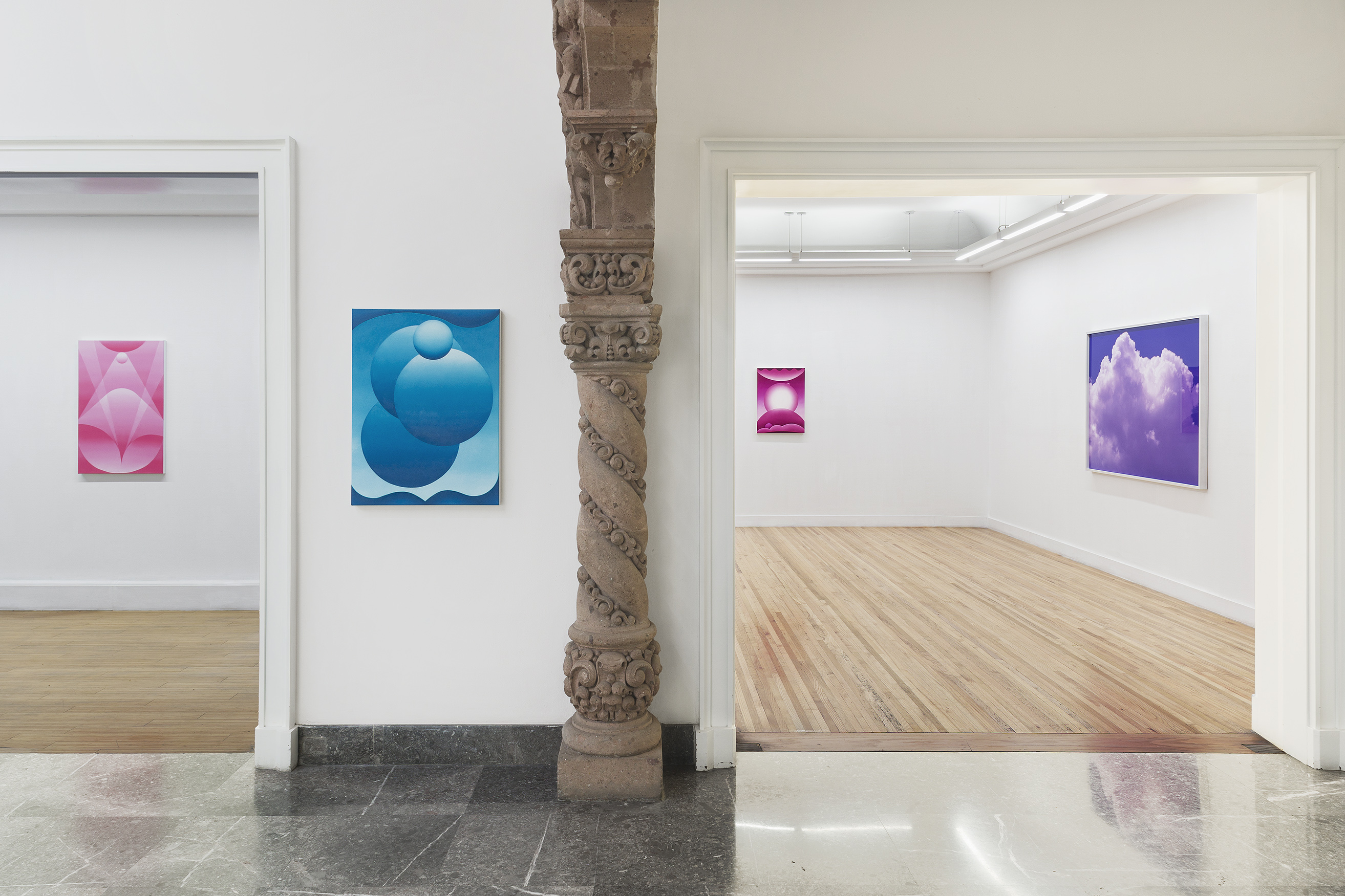

Mother
2023
Huxley-Parlour gallery is delighted to announce the first UK exhibition by American artist, David Benjamin Sherry. Sherry’s practice examines the mythologies and iconography of the American Midwest, while opening them up as sites for queer potential.
Sherry’s photographic practice bears witness to the changing landscapes of the Western United States. Reinventing the well-trodden views of the country’s national parks, Sherry’s landscapes are each rendered in a single, vivid colour. In doing so, Sherry seeks to challenge the West’s colonialist trope of the individualist, with all its corollary connotations of straightness, whiteness and maleness, to present a more inclusive discourse around the region and its preservation.
Sherry’s photographic practice bears witness to the changing landscapes of the Western United States. Reinventing the well-trodden views of the country’s national parks, Sherry’s landscapes are each rendered in a single, vivid colour. In doing so, Sherry seeks to challenge the West’s colonialist trope of the individualist, with all its corollary connotations of straightness, whiteness and maleness, to present a more inclusive discourse around the region and its preservation.
The landscapes included in Mother are made where the artist resides, in the American West - specifically, California, Utah, and New Mexico. Sites include Yosemite Valley and Joshua Tree and range from the highest mountains of California to the lowest desert on Earth. Sherry’s work traces its roots to his own personal climate grief, as he experiences the loss of entire ecosystems firsthand. He states that he uses photography ‘as a means to see, understand and commune with our sacred landscape in new, provocative ways.’
This exhibition reveals how, through a nuanced interplay of colour, form and scale, Sherry’s work promotes an urgent liberation of ecological and queer potentialities. At a time when reconnection with landscapes and ecosystems may be essential for our continued existence, this exhibition displays how Sherry offers new, empathetic and sublime ways of viewing the natural world.
This exhibition reveals how, through a nuanced interplay of colour, form and scale, Sherry’s work promotes an urgent liberation of ecological and queer potentialities. At a time when reconnection with landscapes and ecosystems may be essential for our continued existence, this exhibition displays how Sherry offers new, empathetic and sublime ways of viewing the natural world.
PHOTOGRAPHS
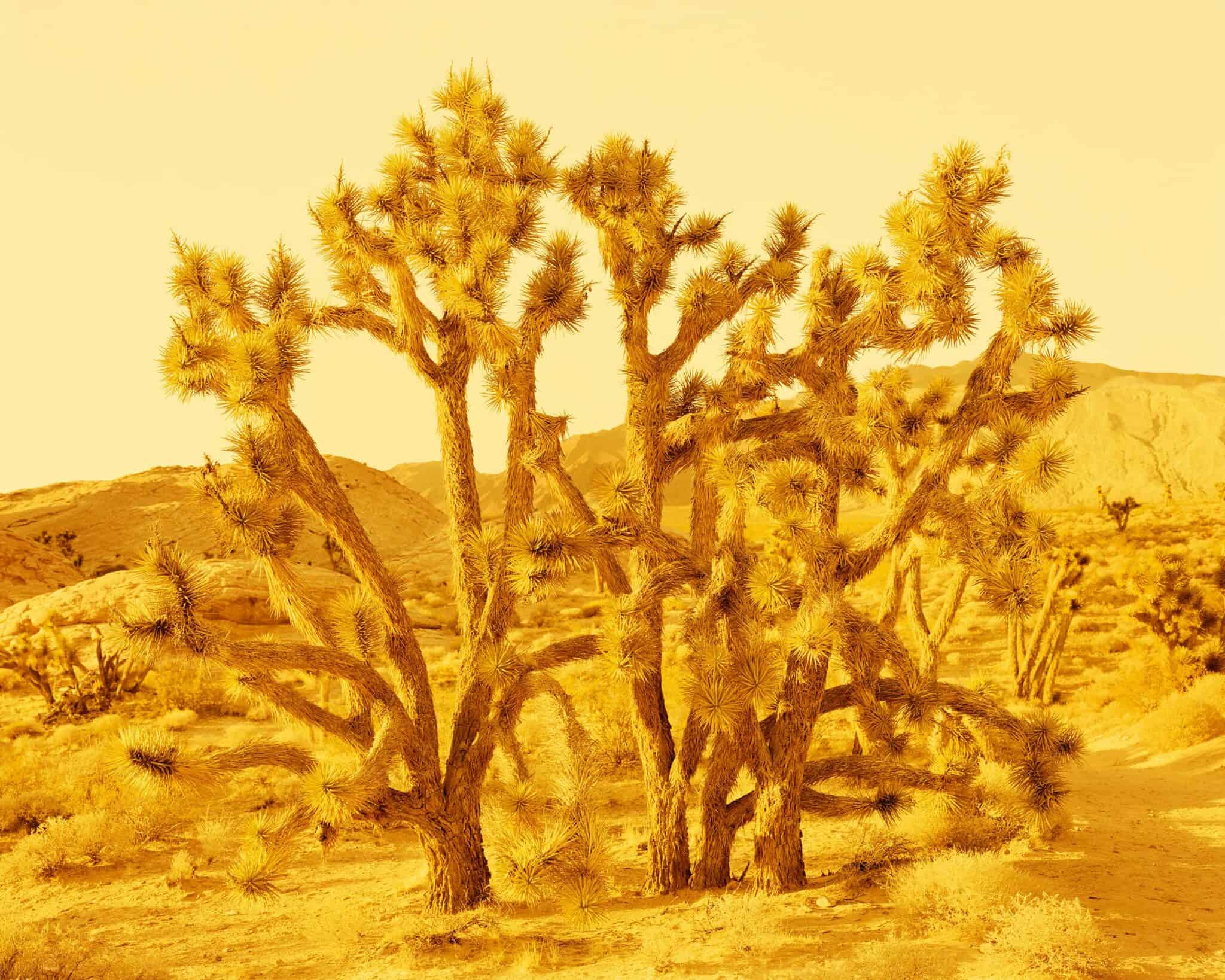
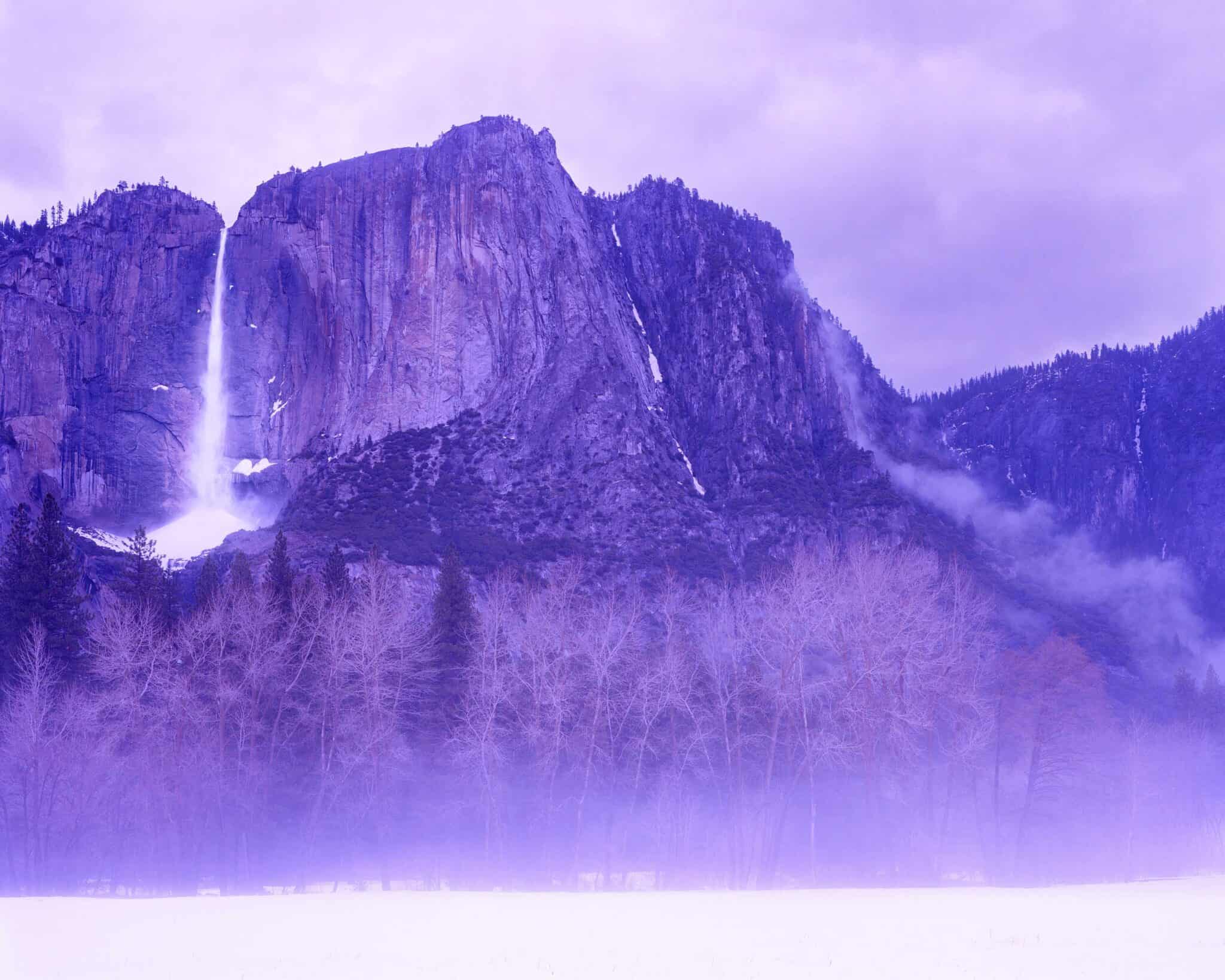
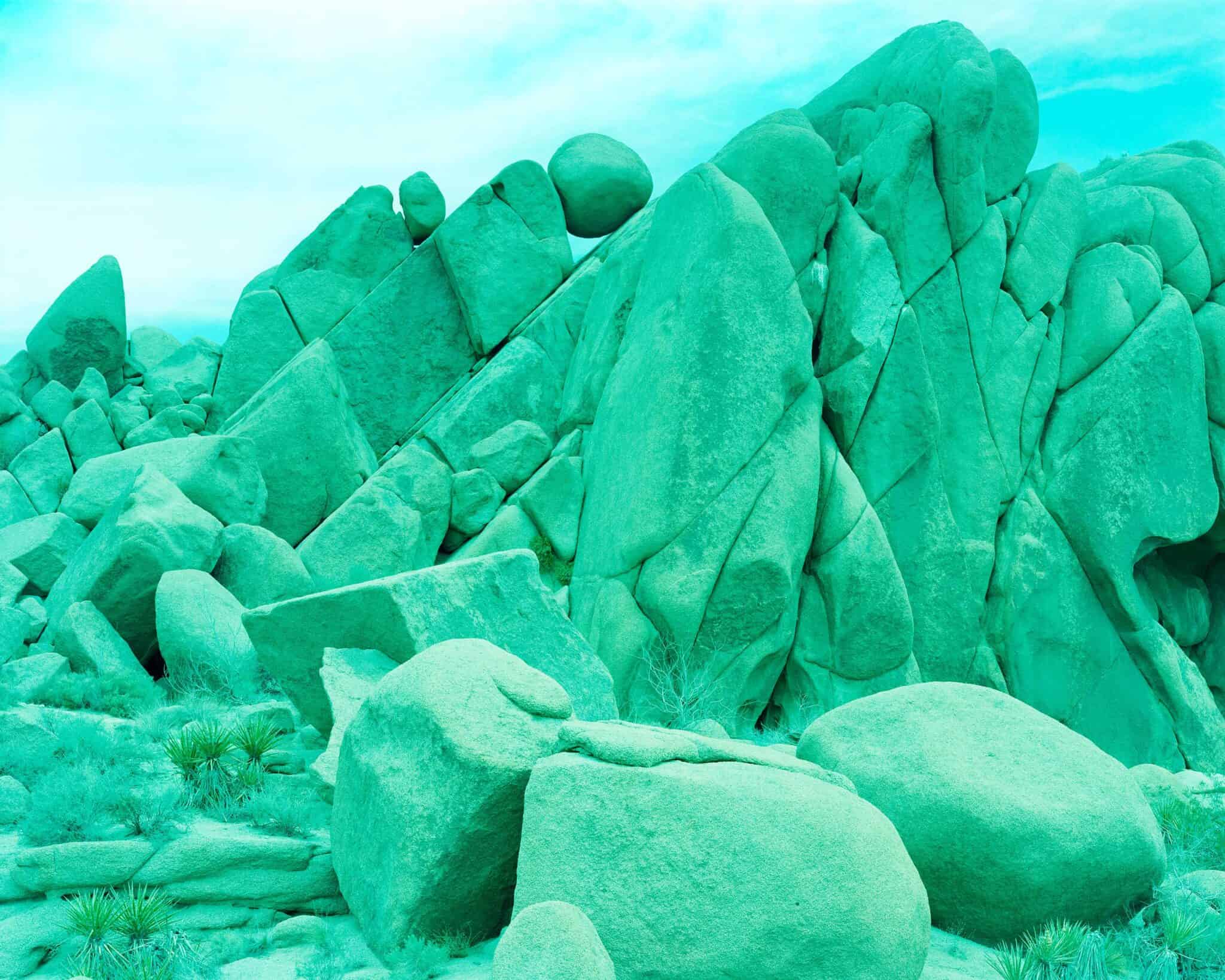
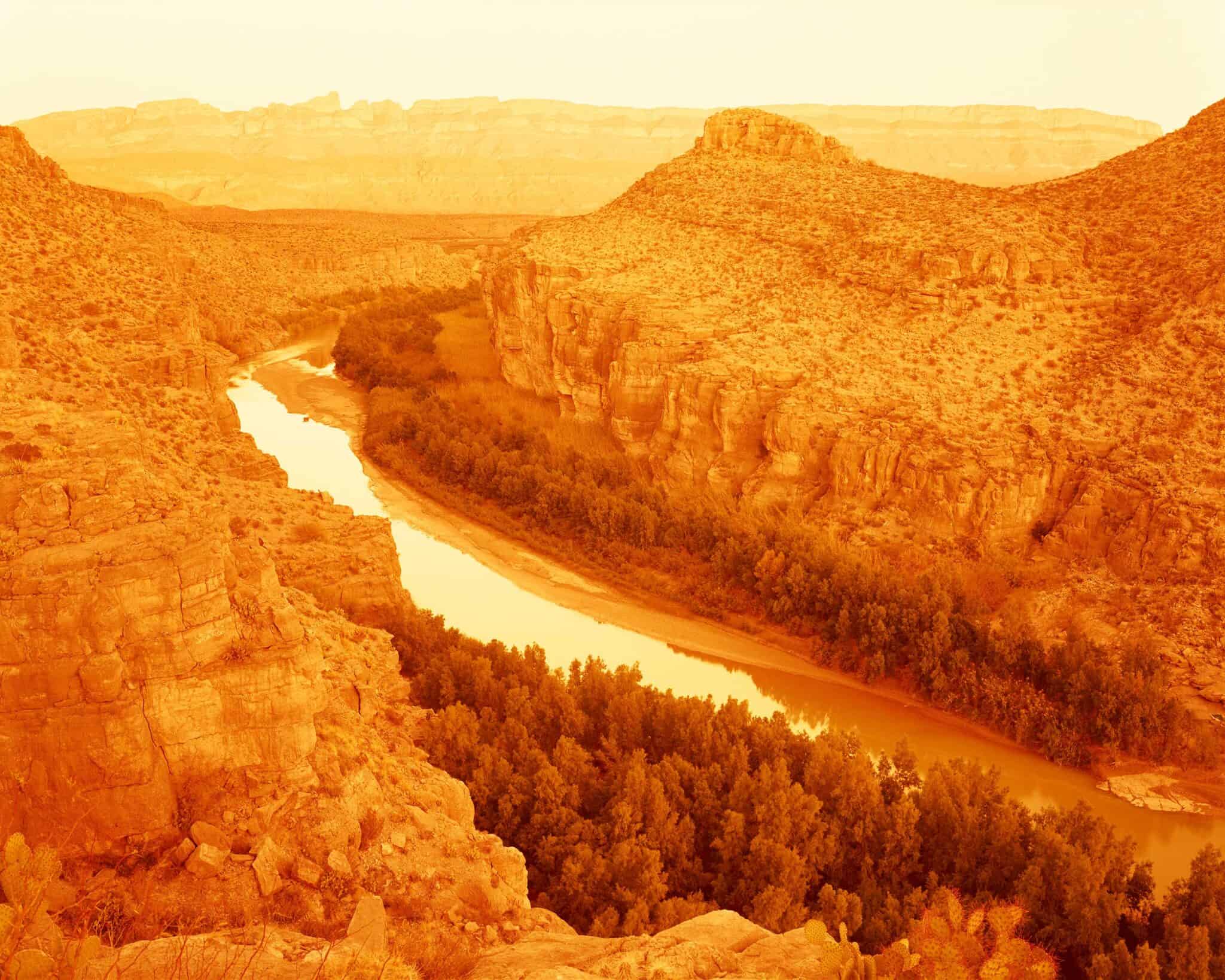




INSTALLATION
![]()
![]()
![]()
![]()
![]()
![]()
![]()
![]()
![]()
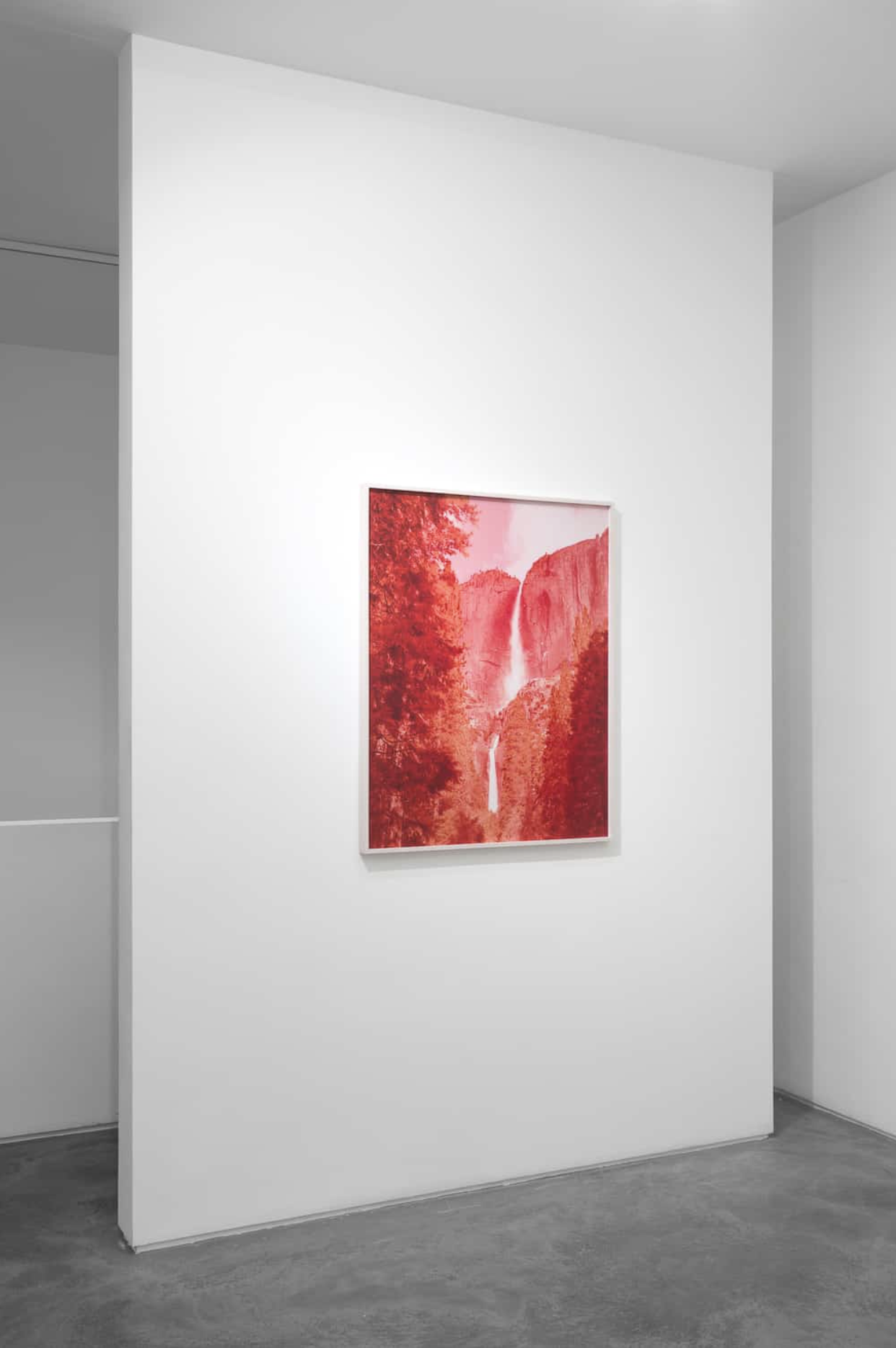

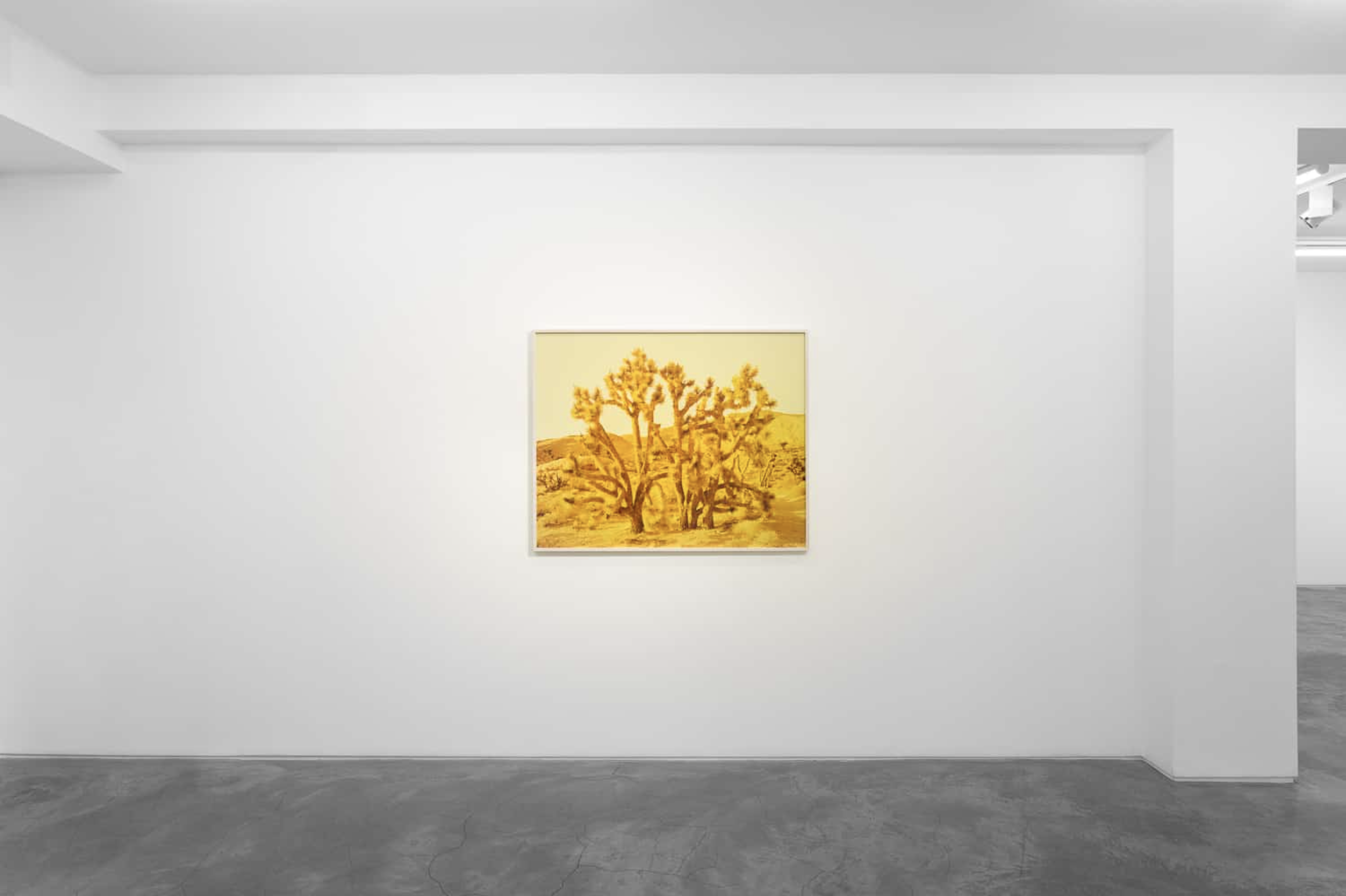


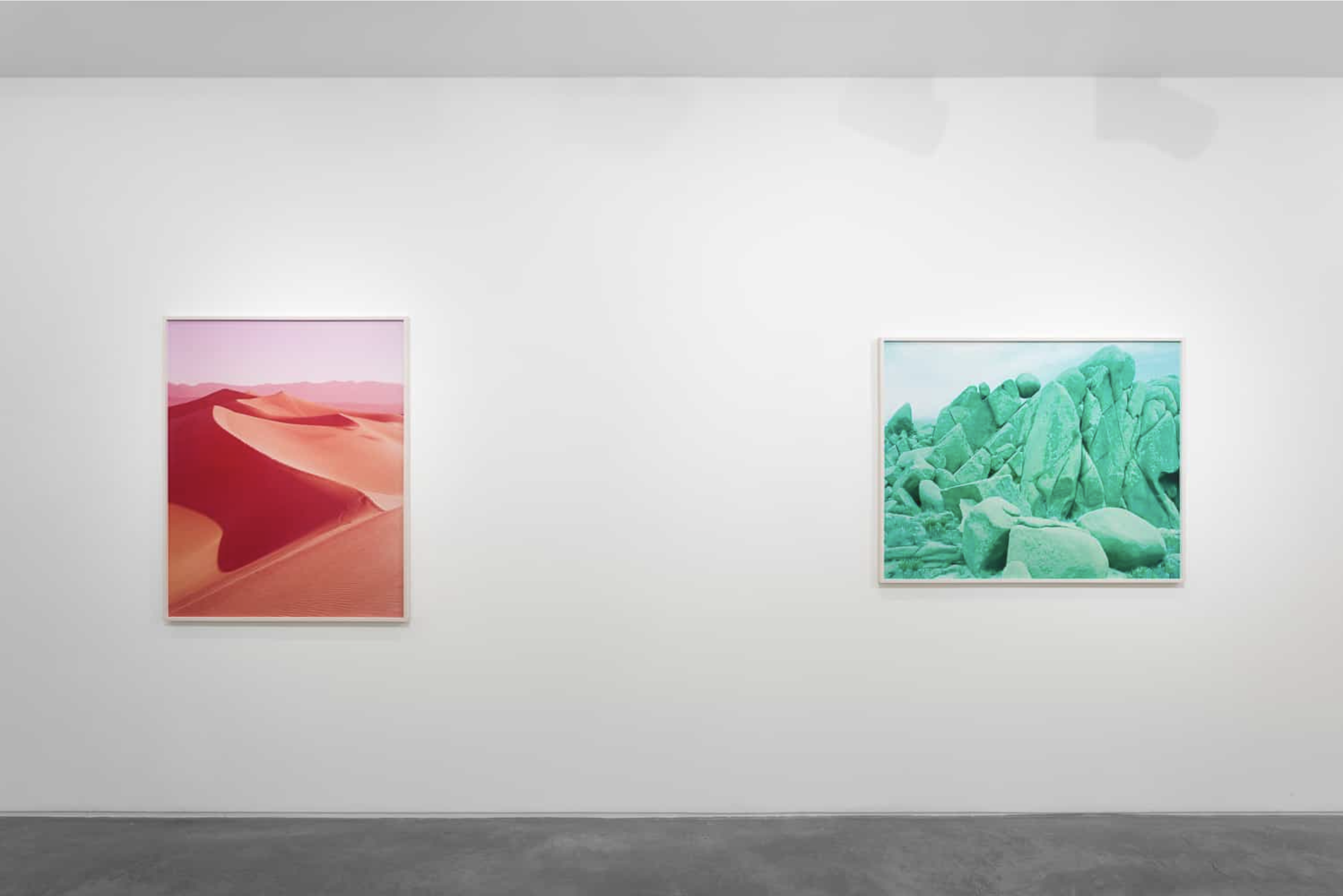
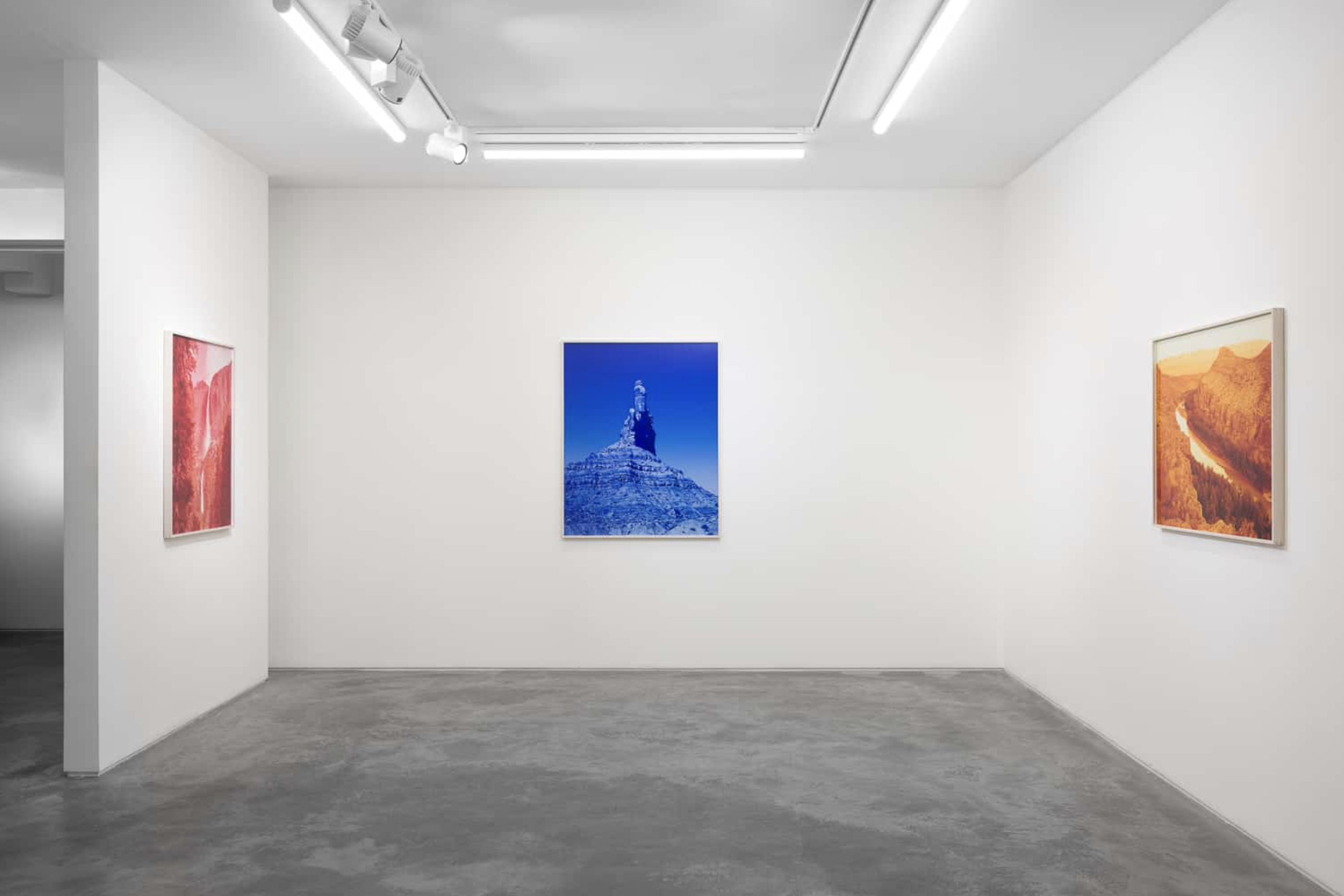
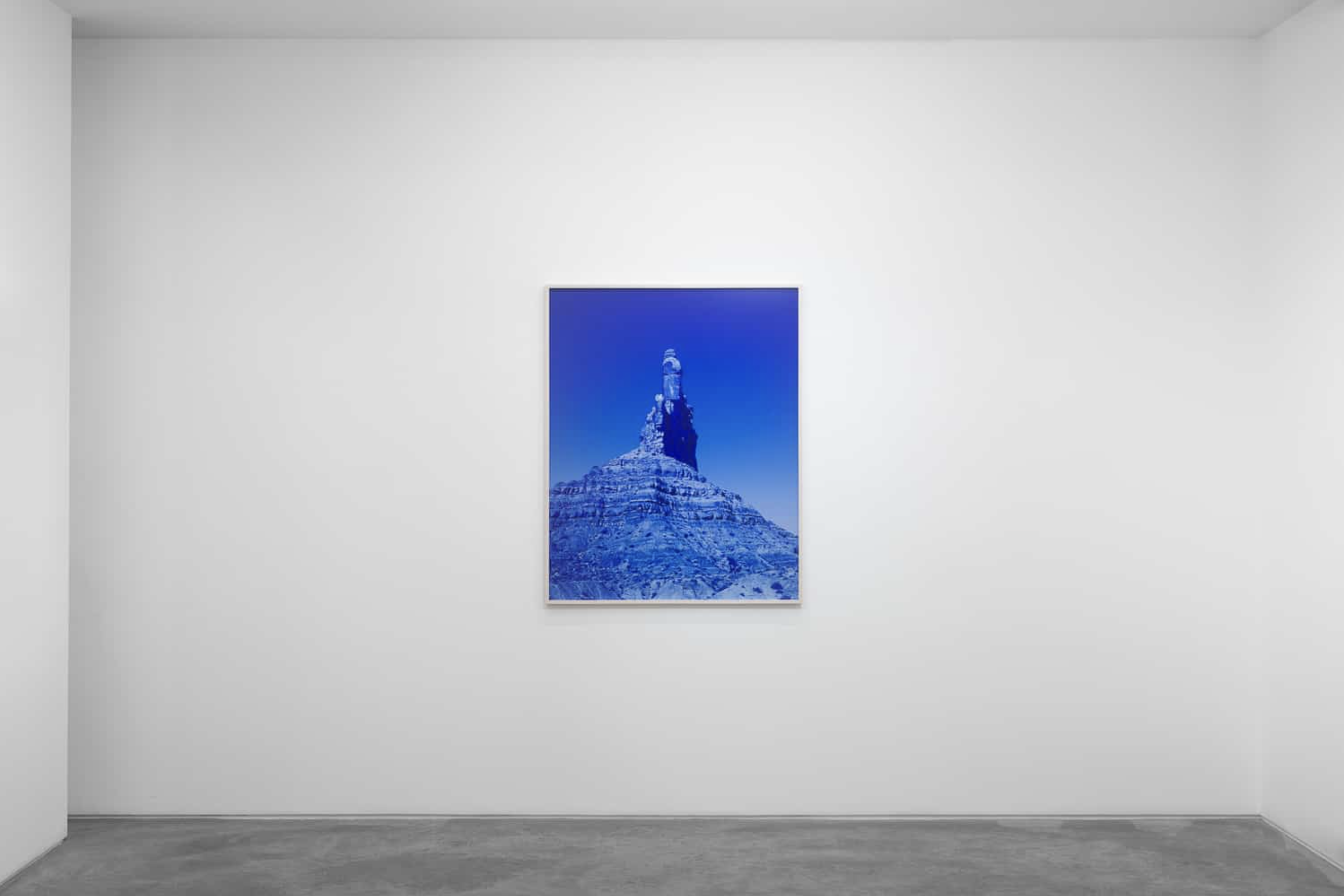

Blue Monsson
2023
Smoke The Moon is pleased to present Blue Monsoon, a solo presentation of paintings and photography by David Benjamin Sherry. The exhibition is the artist's first solo show in Santa Fe, where he works and lives. On view from July 14th to August 20th, the show will debut twelve paintings and six contact prints that define the acclaimed artist’s evolving reverence of landscape, light and spirit.
As Sherry dives deeper into his subject matter, his resulting work has trended toward the manual. Pink Genesis (2017) presented a collection of photograms in characteristic monochrome. The suite consists of vibrant color field compositions created through a C-Print stencil and overlay method done in the darkroom. His technique is analog photography in its most alchemical sense, and the subsequent images are radiant and emotive. This is perhaps the most direct precursor to his current iteration of image-making: painting.
As Sherry dives deeper into his subject matter, his resulting work has trended toward the manual. Pink Genesis (2017) presented a collection of photograms in characteristic monochrome. The suite consists of vibrant color field compositions created through a C-Print stencil and overlay method done in the darkroom. His technique is analog photography in its most alchemical sense, and the subsequent images are radiant and emotive. This is perhaps the most direct precursor to his current iteration of image-making: painting.
Sherry’s painting process is a ritual. He spends several days mixing pigments to find the perfect hue; builds color layer by layer, softening gradients and creating a completely smooth, rich surface. The process is tactile, performative and also meditative. Drawing inspiration from Transcendental Painting Group artists like Agnes Pelton, Florence Miller Pierce and Raymond Jonson, as well as New Mexico icon Georgia O’Keeffe, Sherry distills the desert landscape into shape and color, transcending the bounds of realism. Sherry looks to painting as a holistic means of capturing, even embodying, the most sublime aspects of existence.
Fusing op-art with landscape, the innate sensuality that has always underlied Sherry's photography merges with its surface in his paintings. Organic forms blissfully reverberate along a spectrum of a singular pigment: Orange, Pink, Yellow, Blue play out respectively like the crisp notes of a chromatic piano. There is a wondrous clarity and ease to Sherry's interpretations that will feel familiar to those who have gazed into the desert and felt at home.
Fusing op-art with landscape, the innate sensuality that has always underlied Sherry's photography merges with its surface in his paintings. Organic forms blissfully reverberate along a spectrum of a singular pigment: Orange, Pink, Yellow, Blue play out respectively like the crisp notes of a chromatic piano. There is a wondrous clarity and ease to Sherry's interpretations that will feel familiar to those who have gazed into the desert and felt at home.
PAINTINGS
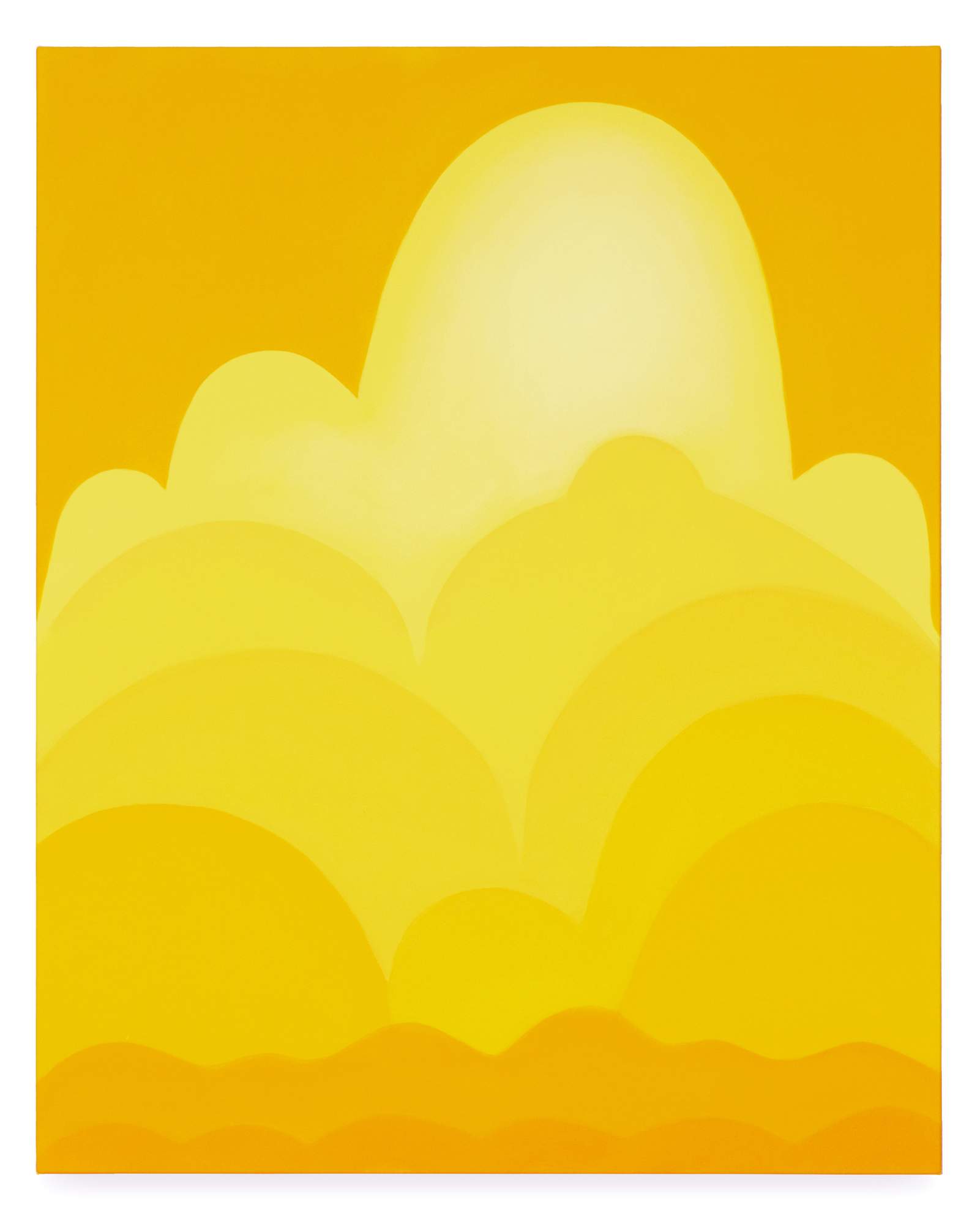
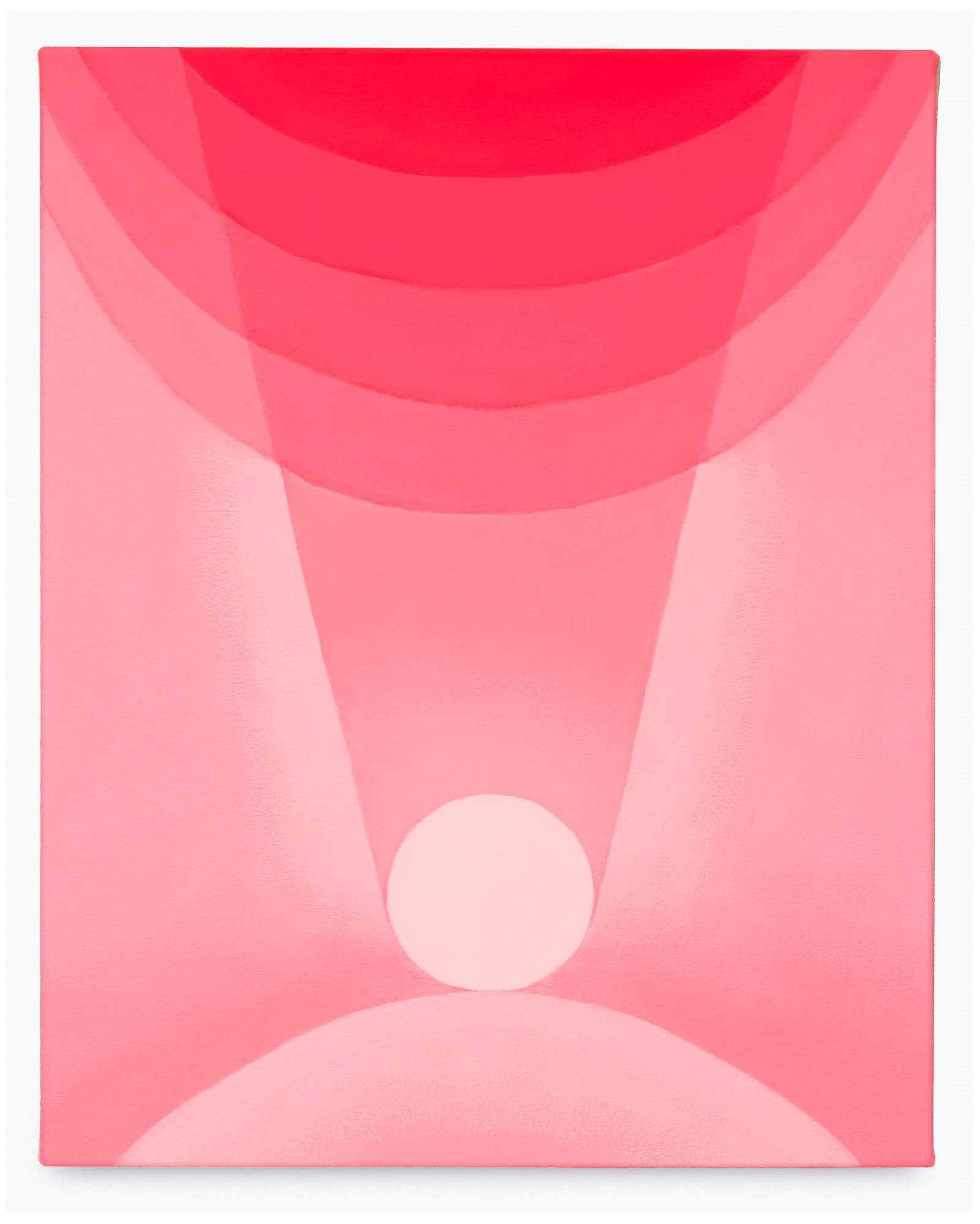
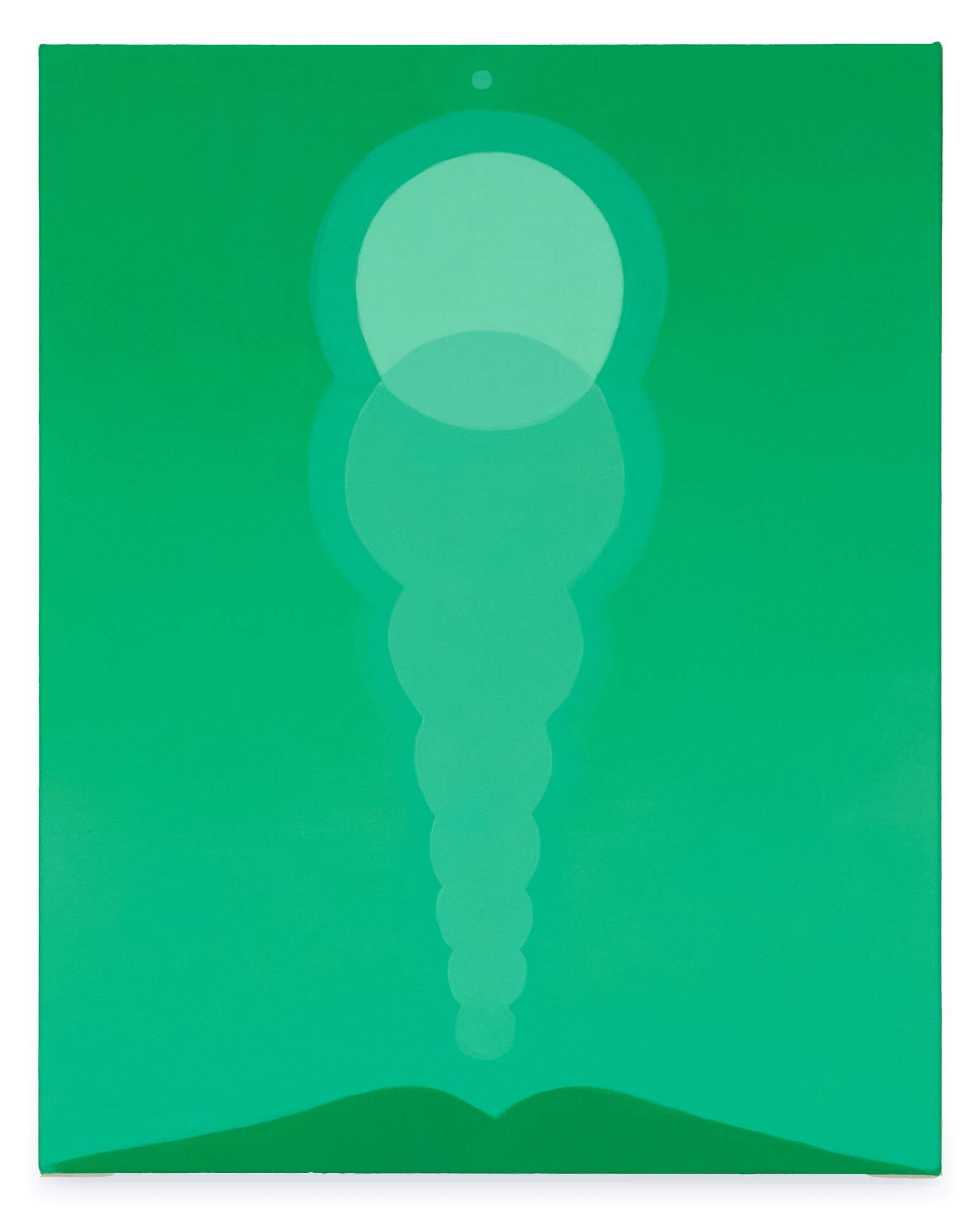
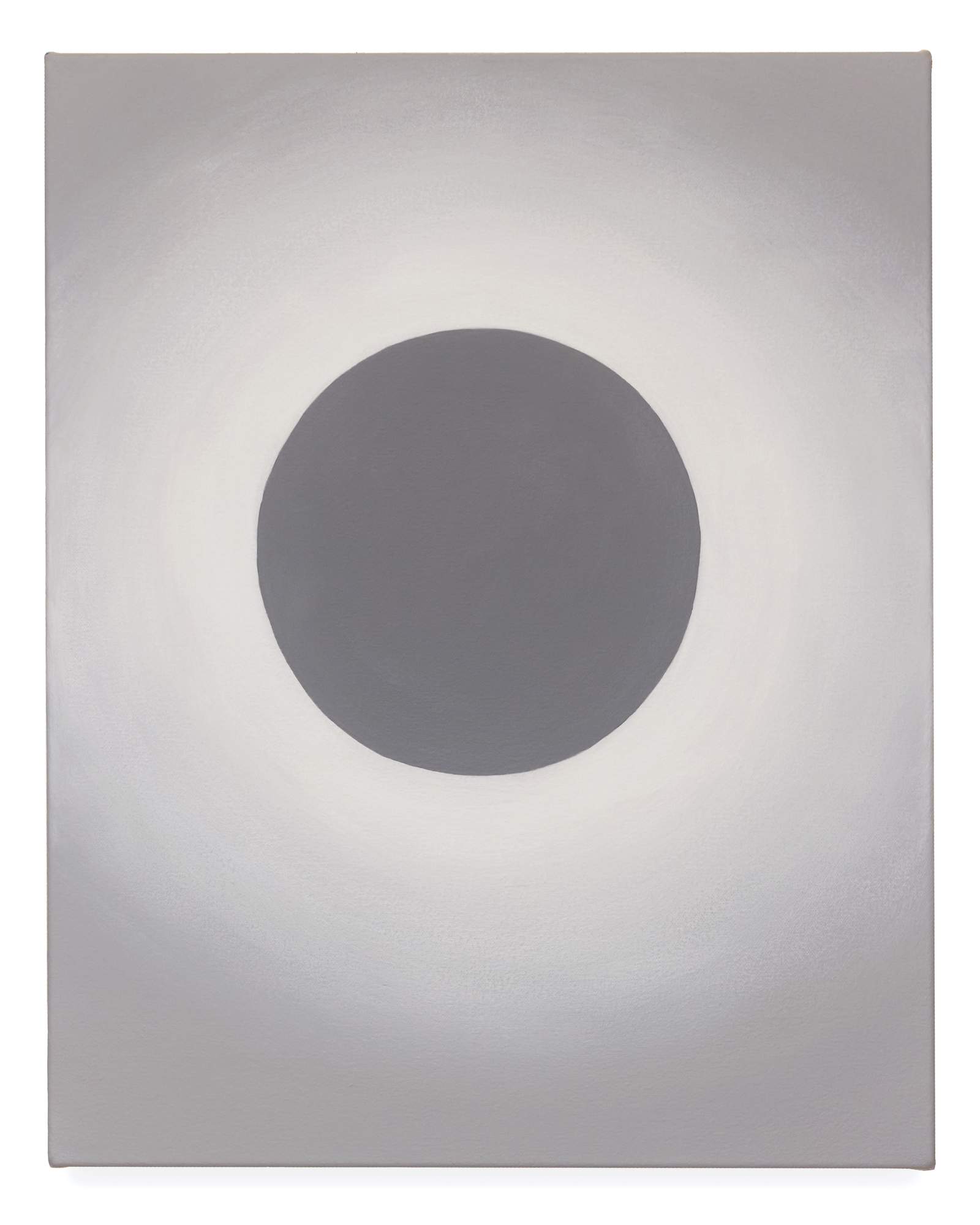
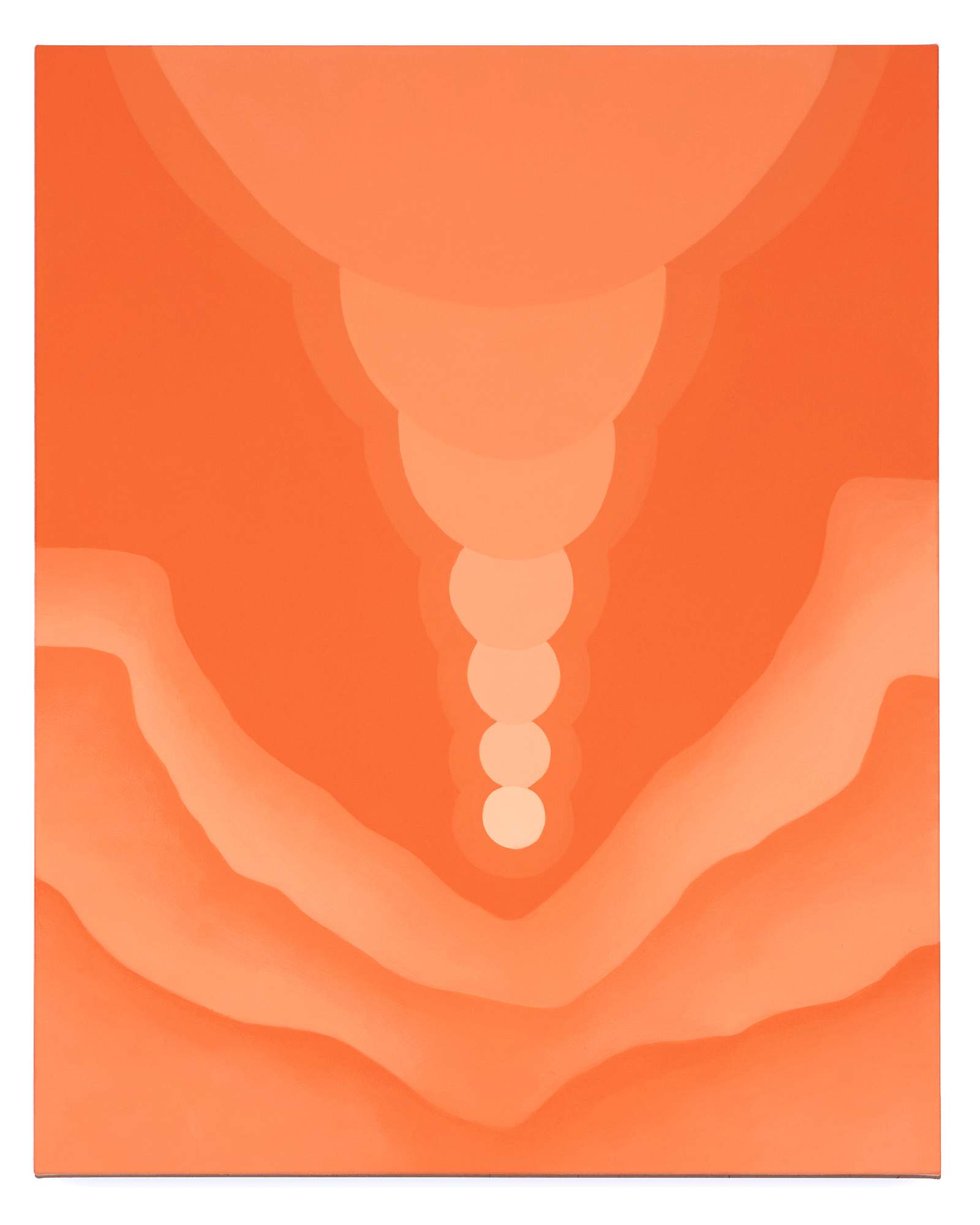
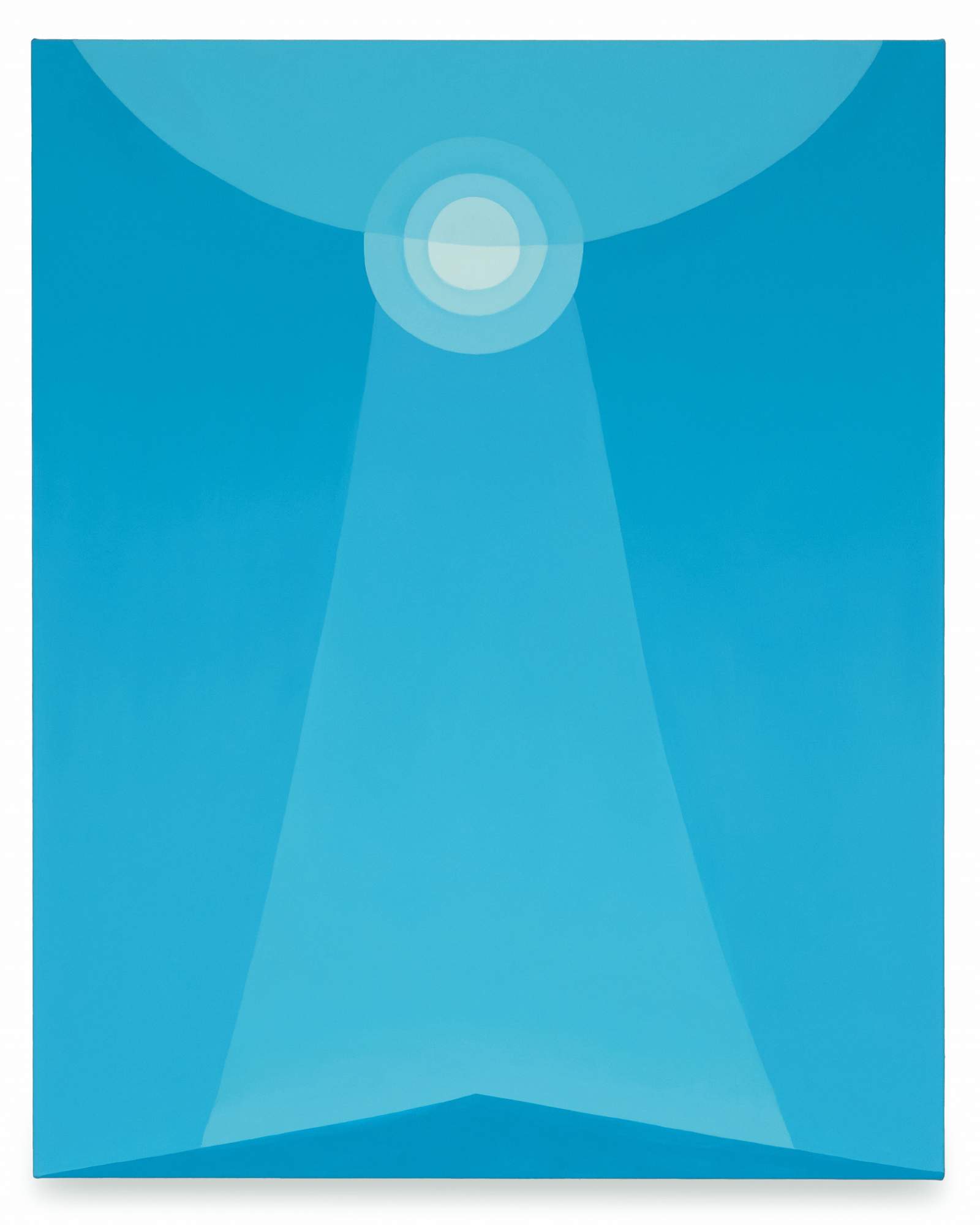
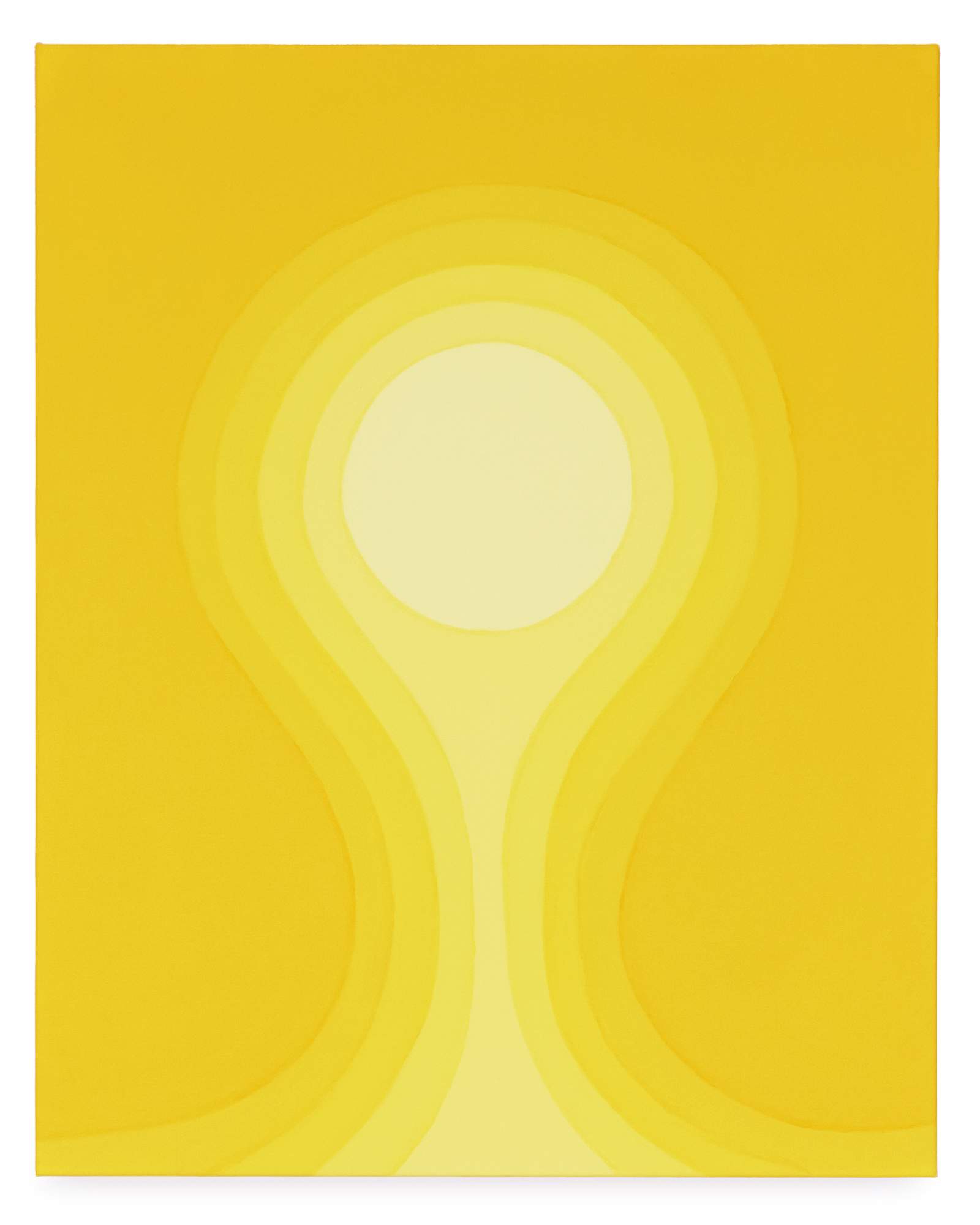
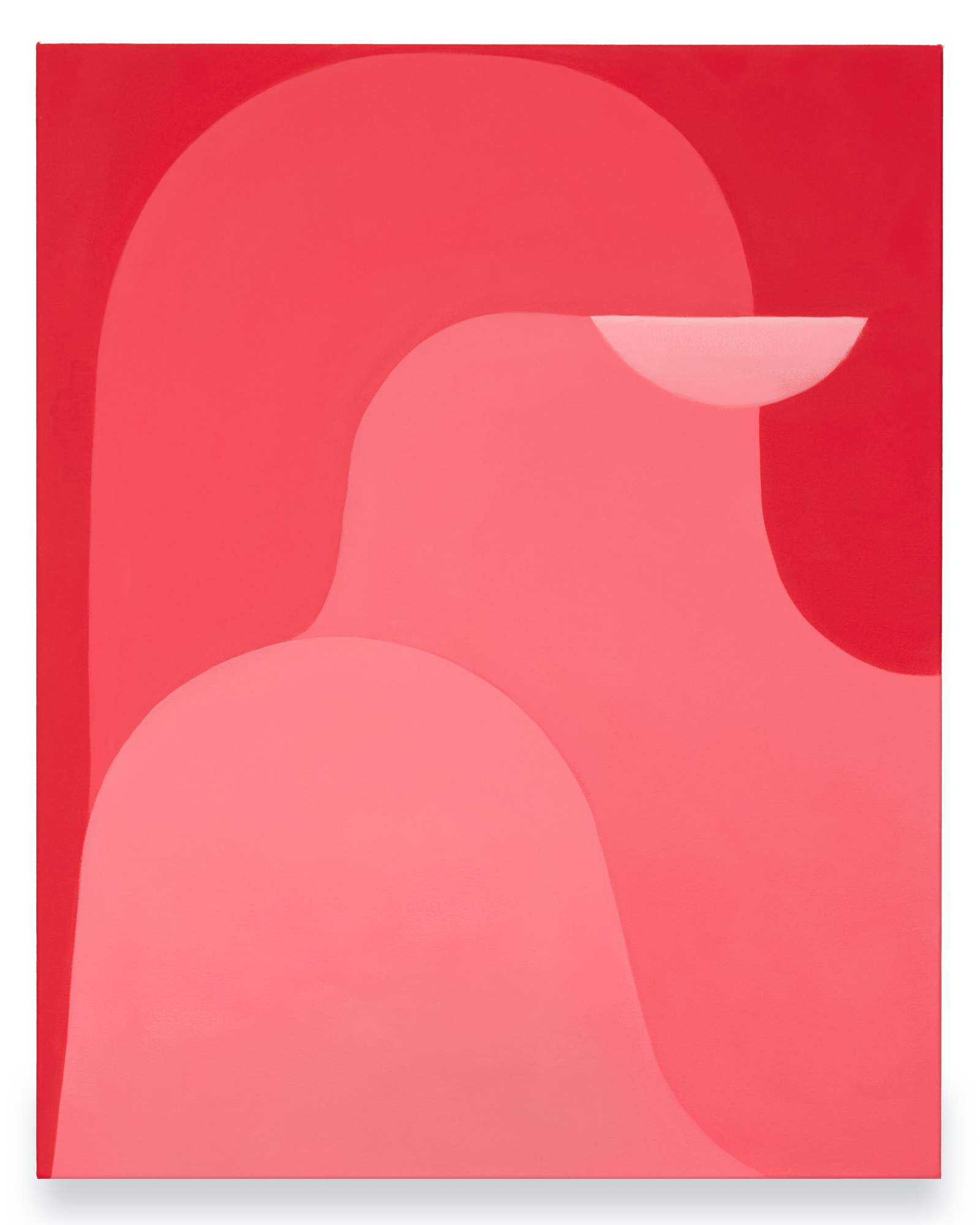
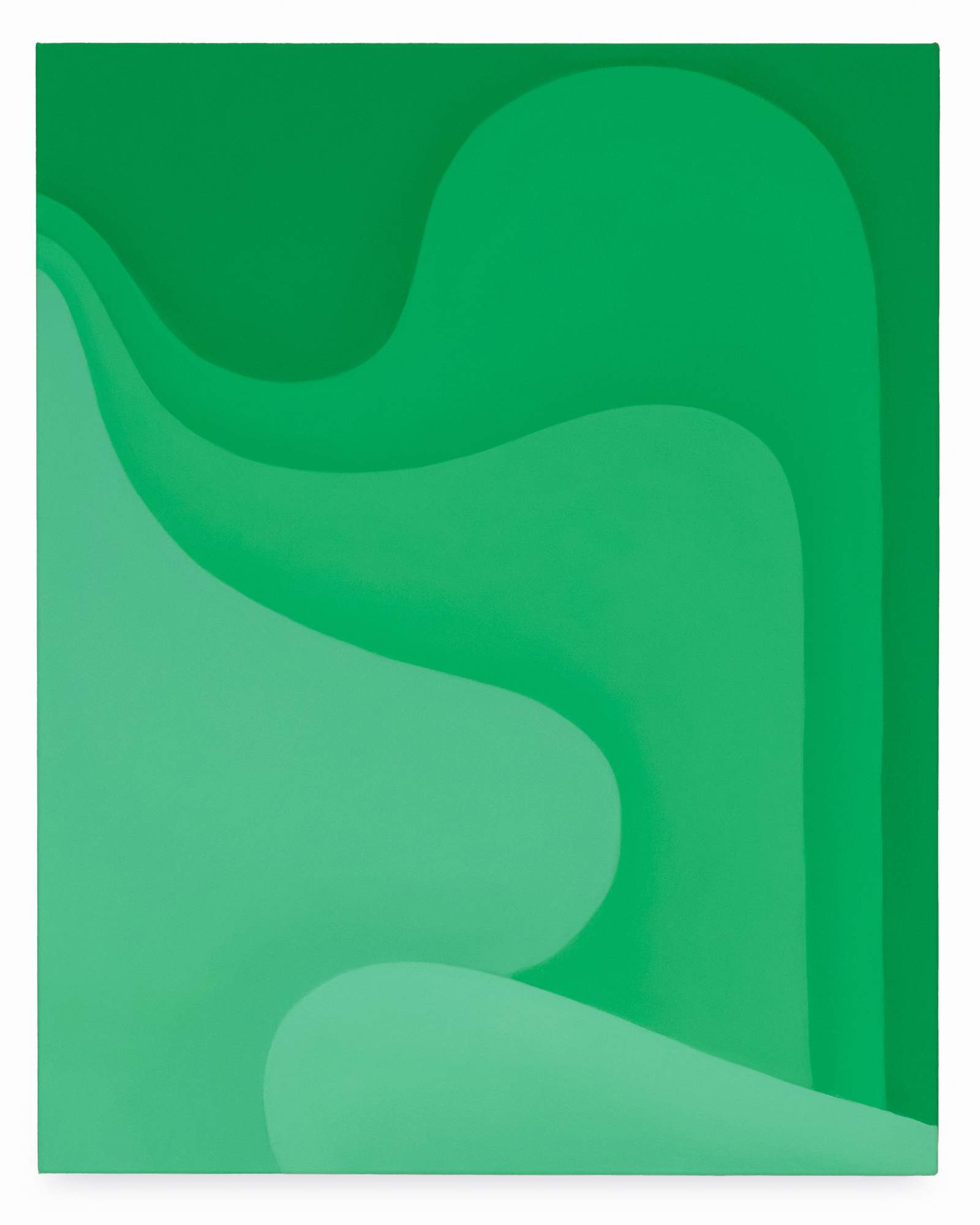
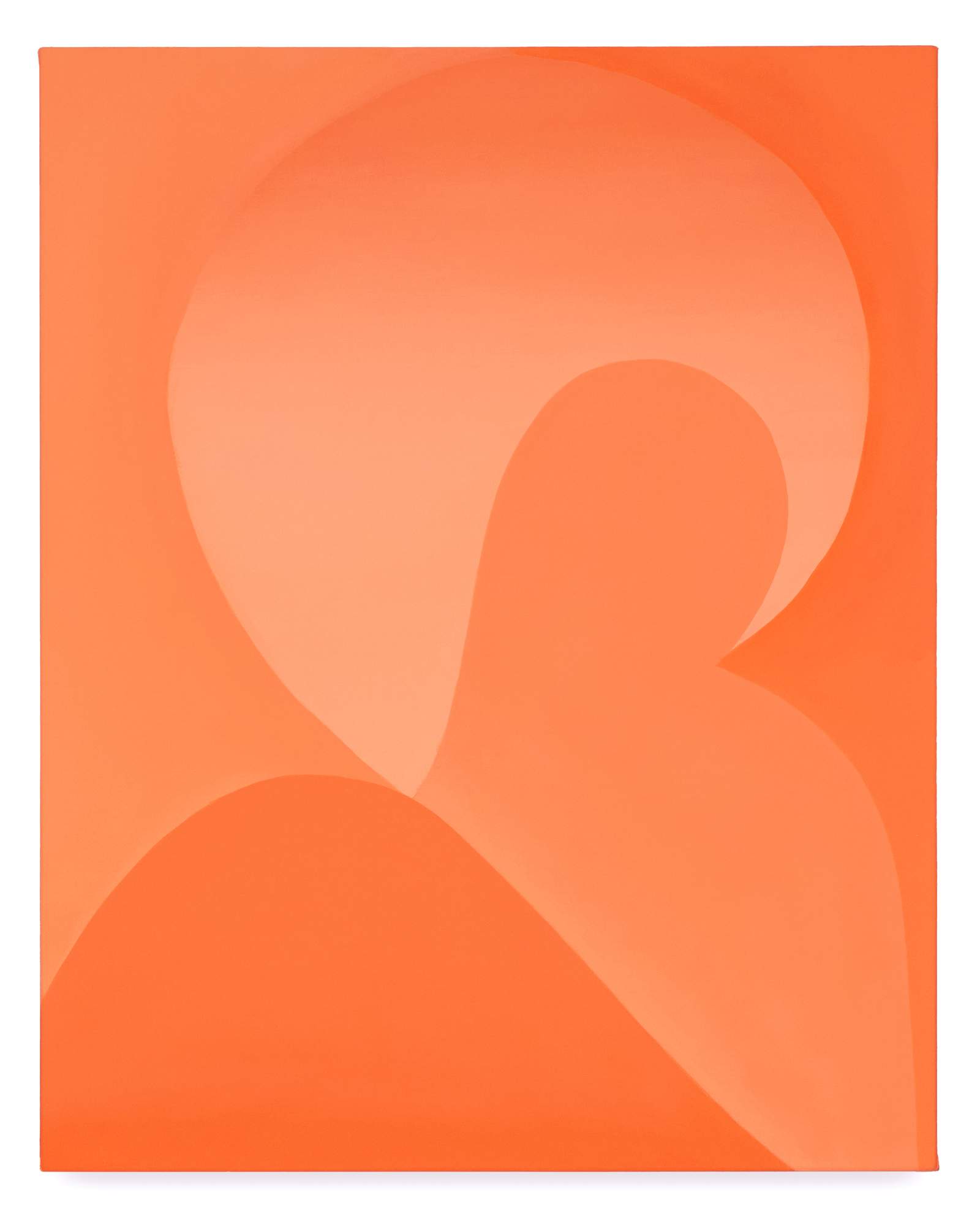
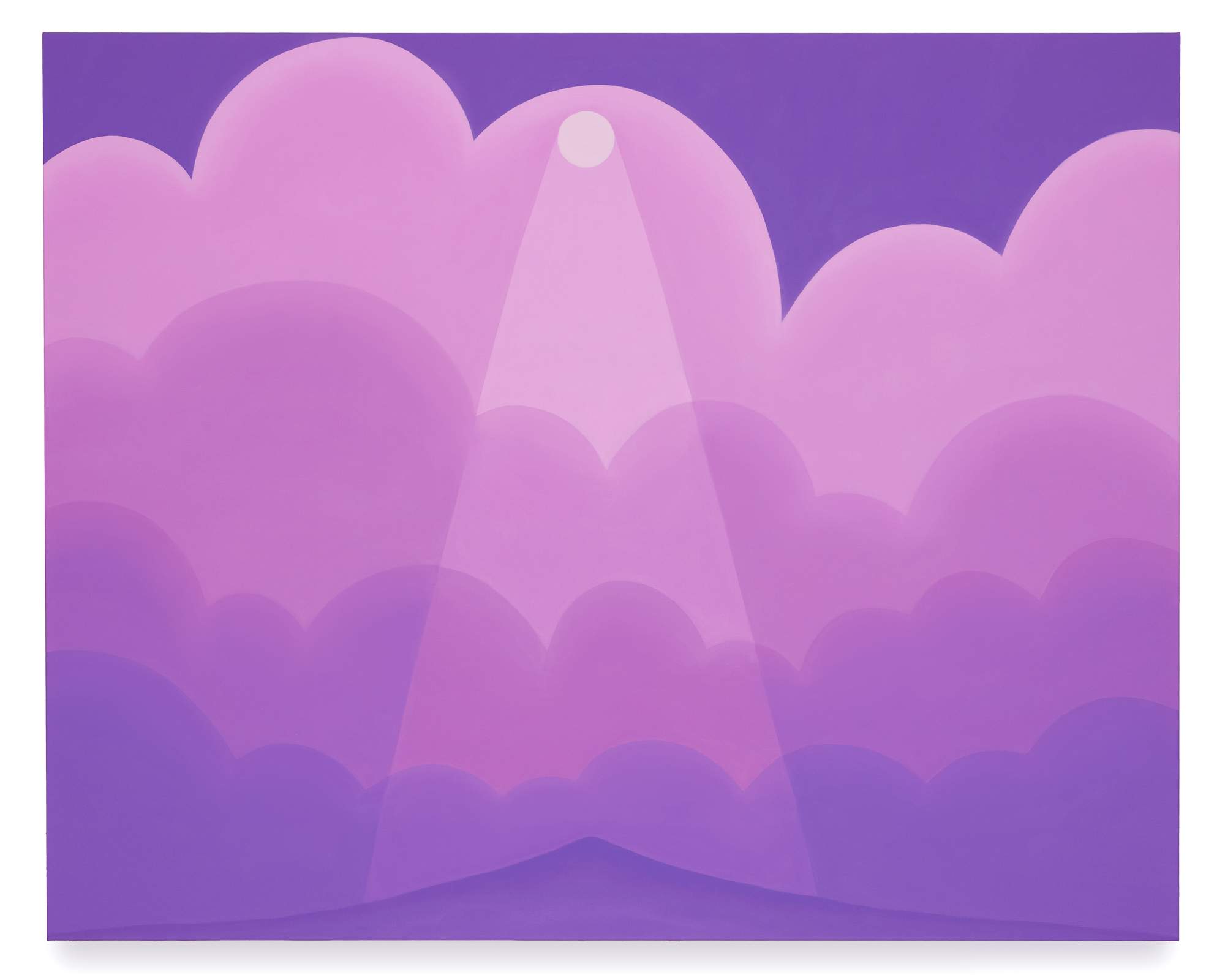
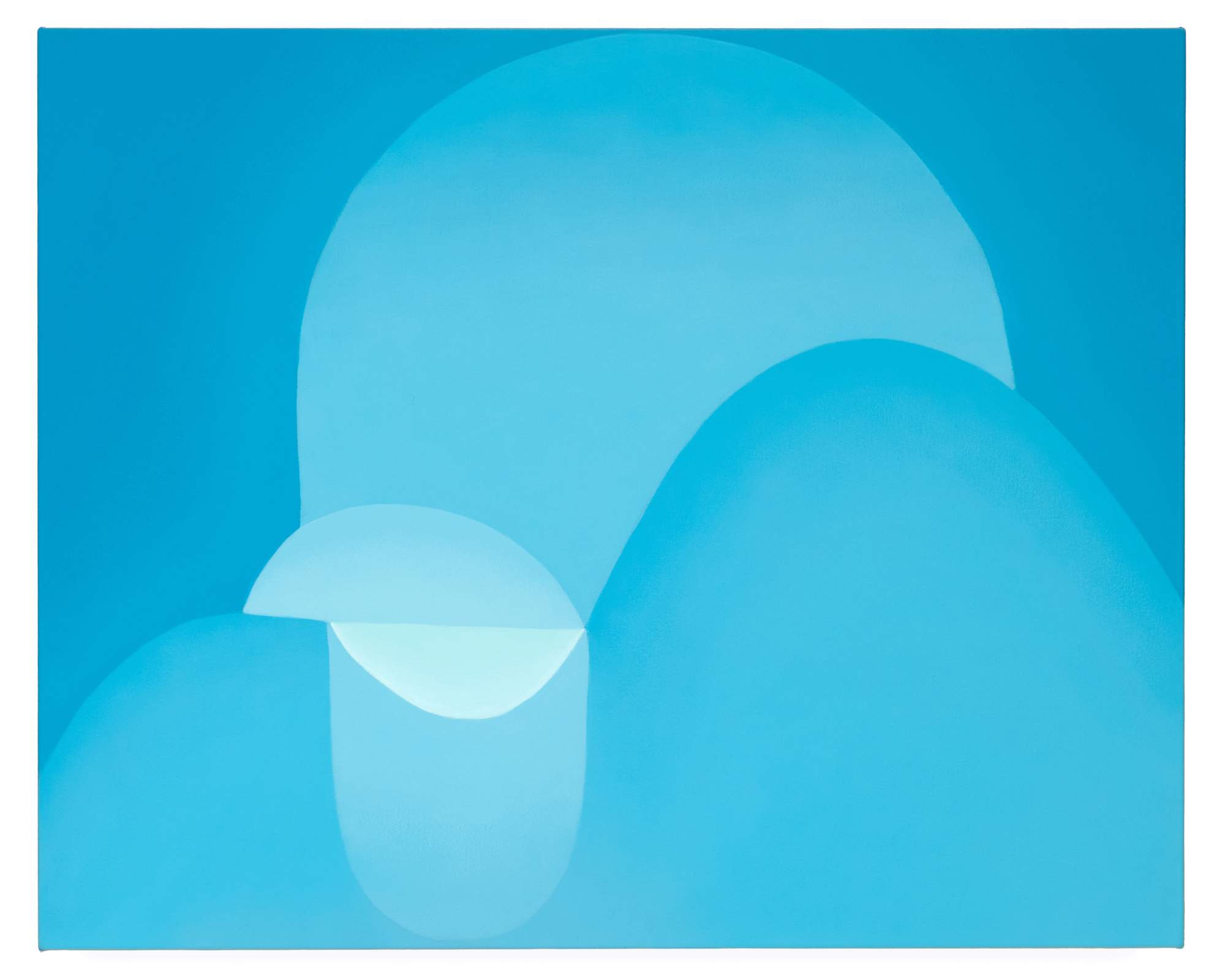
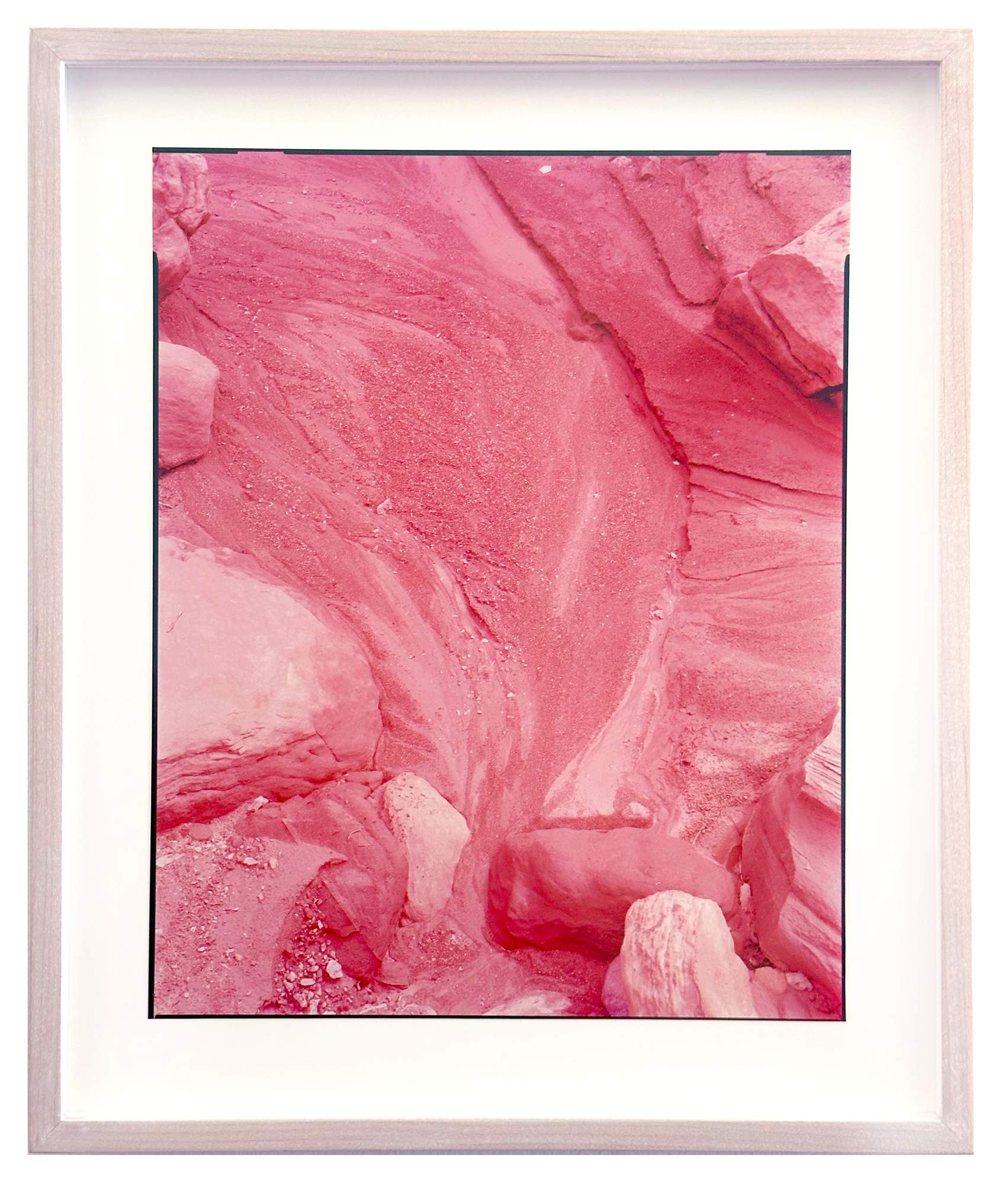
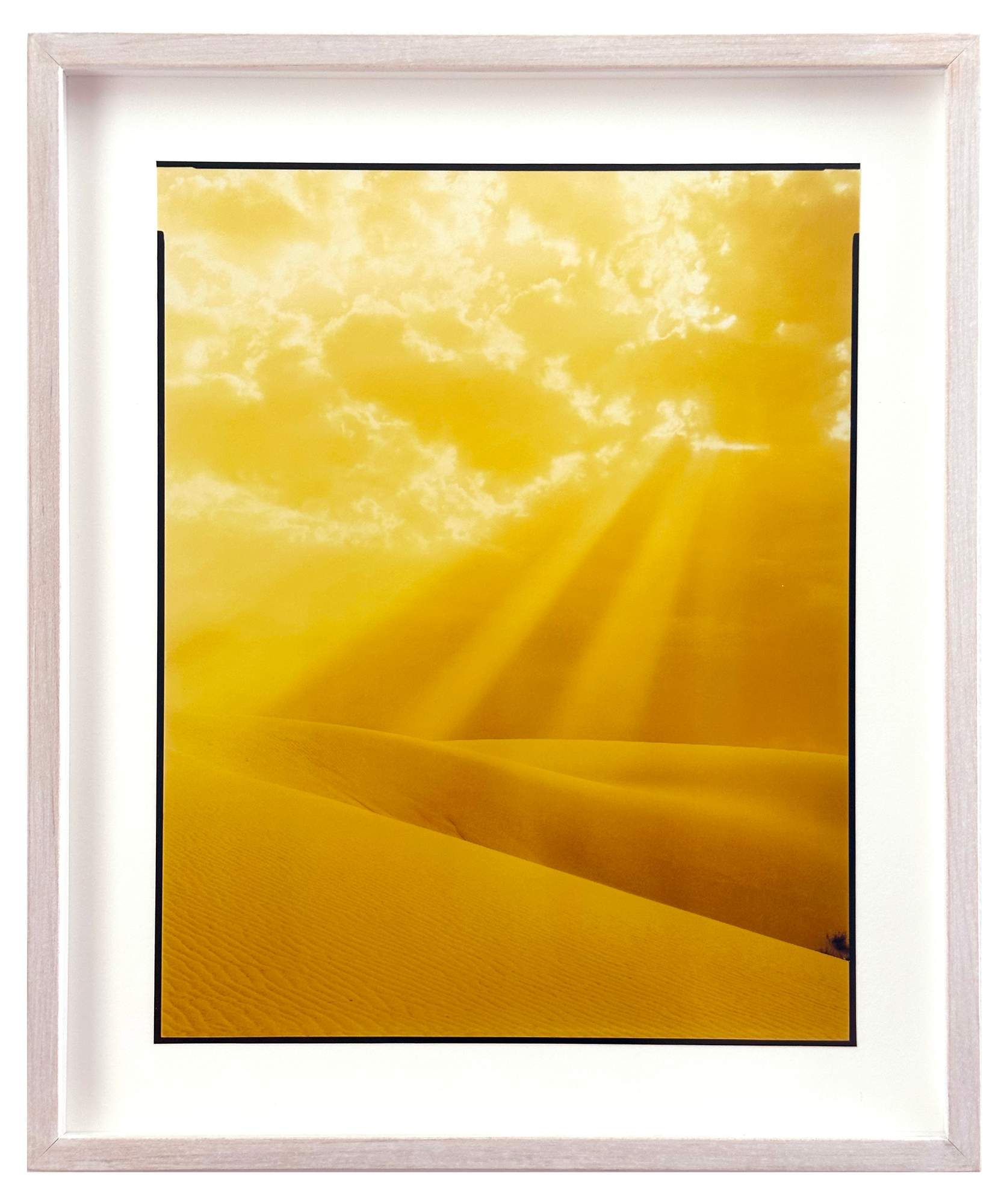
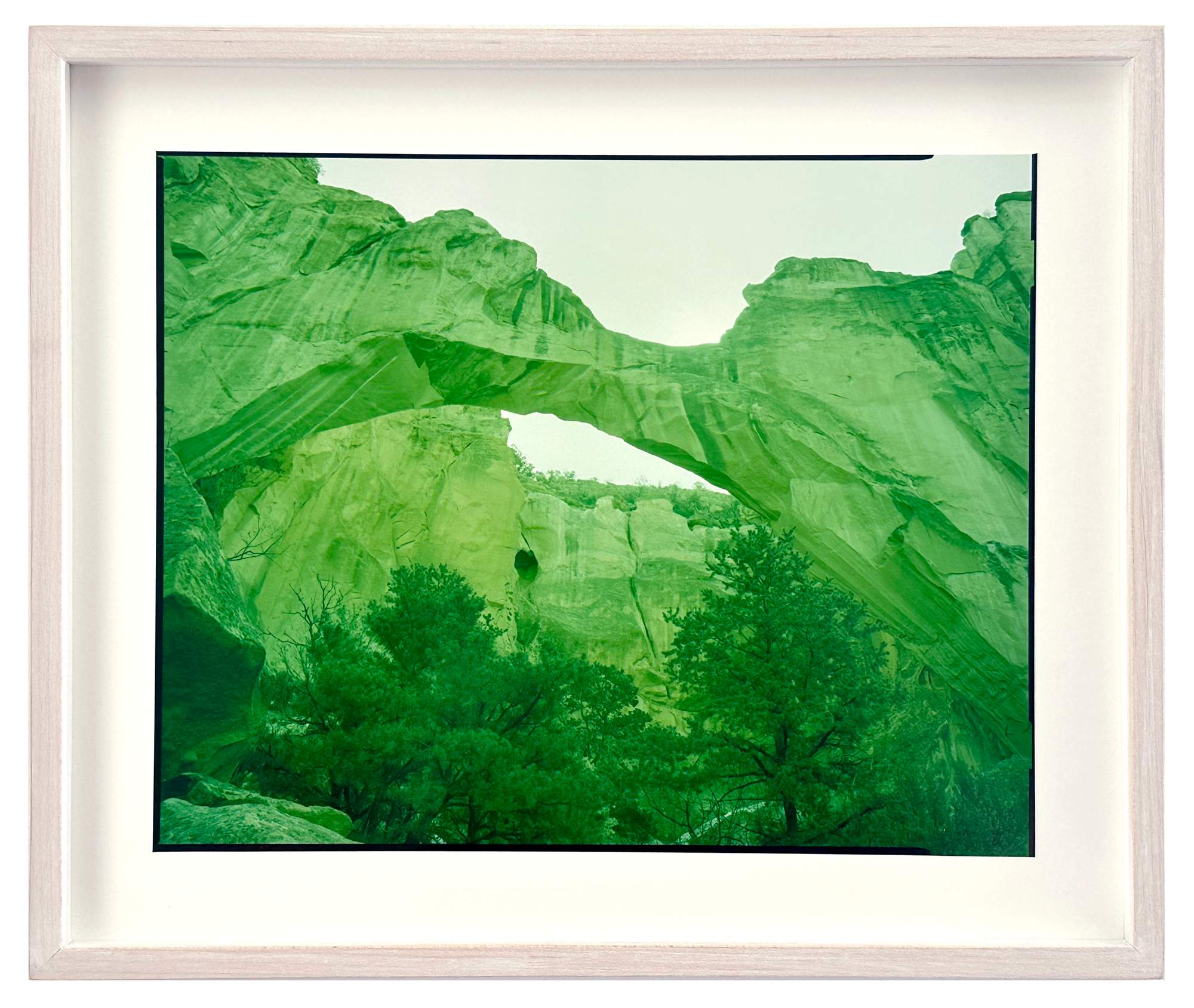
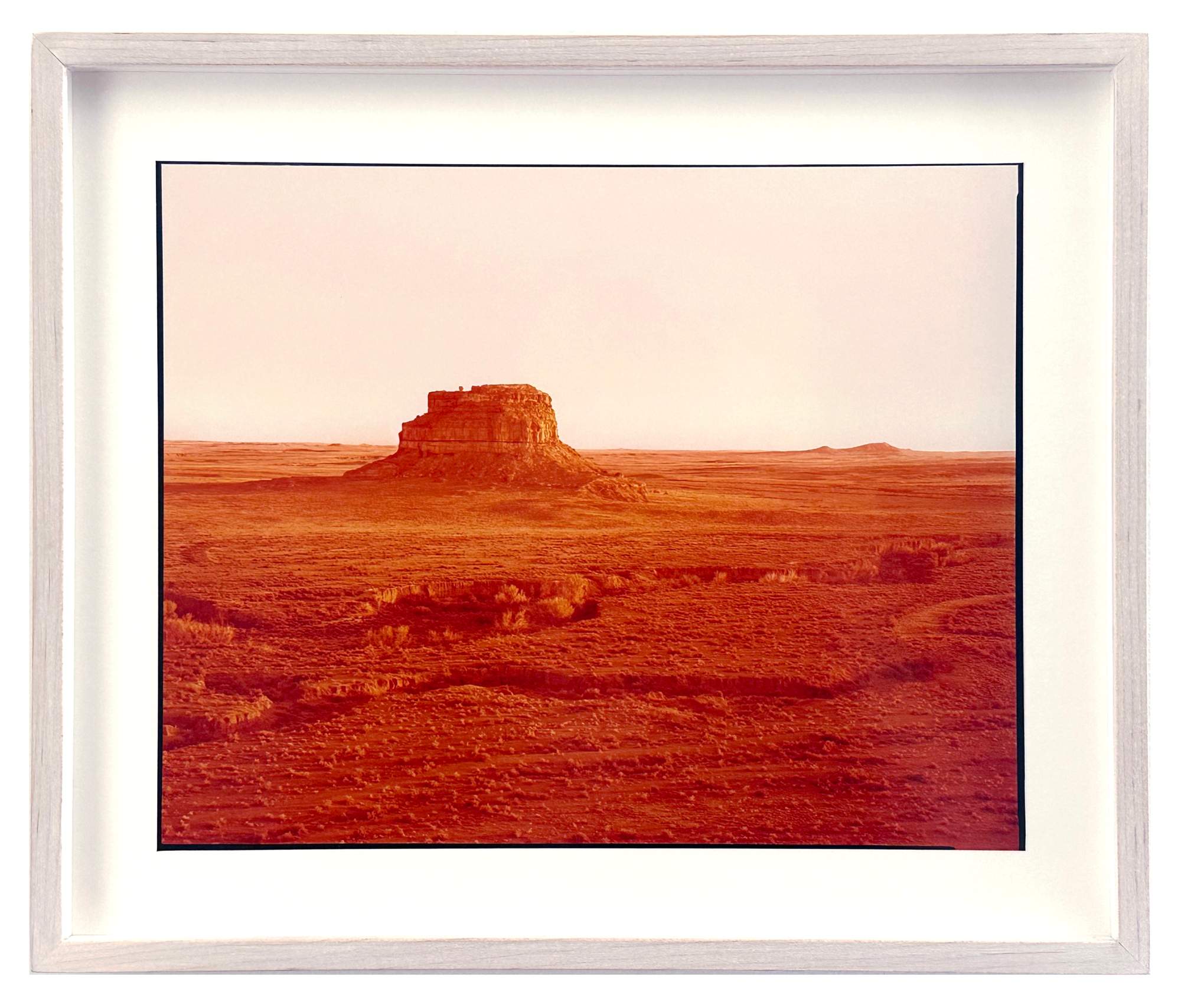
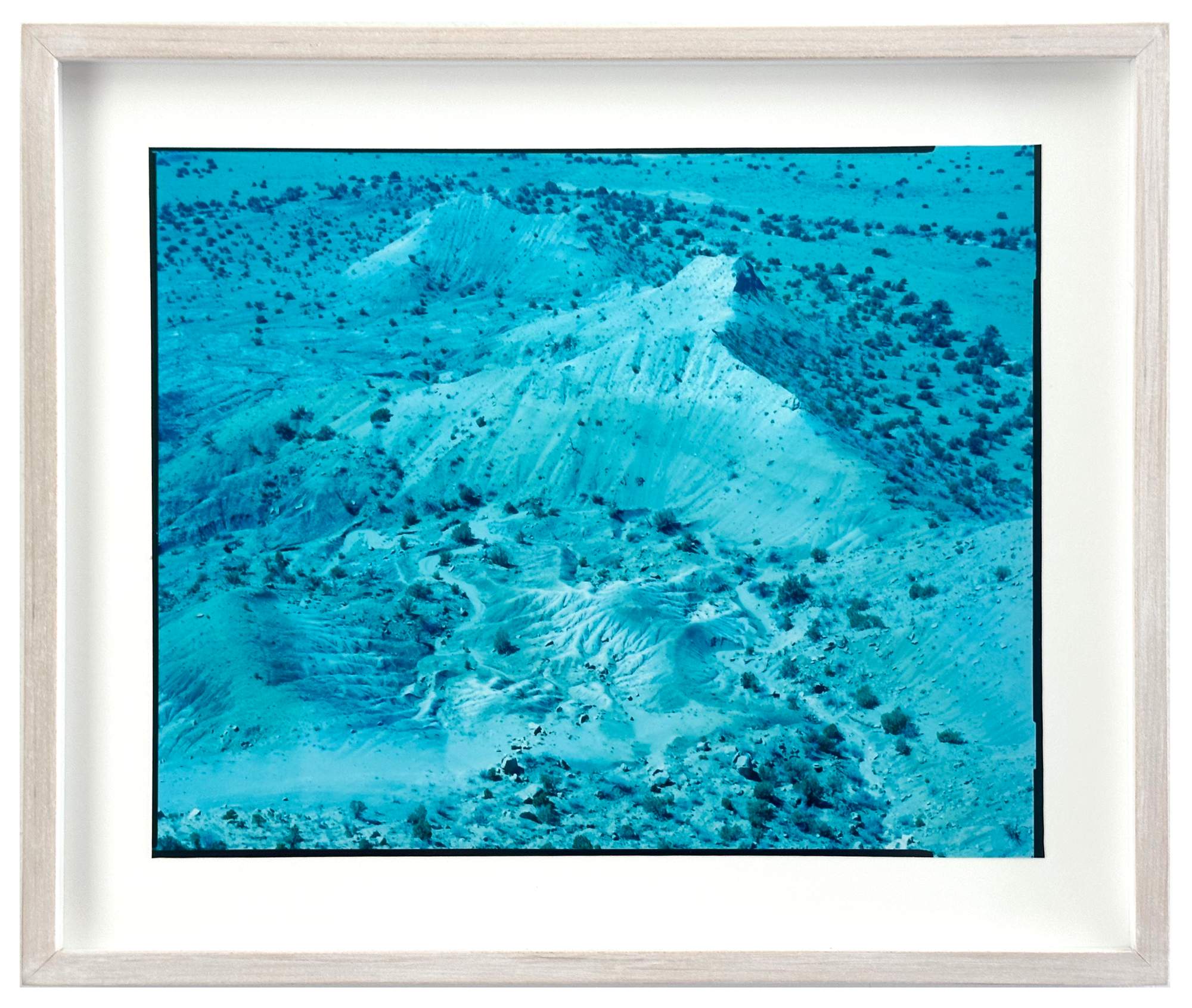

INSTALLATION
![]()
![]()
![]()
![]()
![]()
![]()
![]()
![]()
![]()
![]()
![]()
![]()
![]()
![]()
![]()
![]()
![]()
